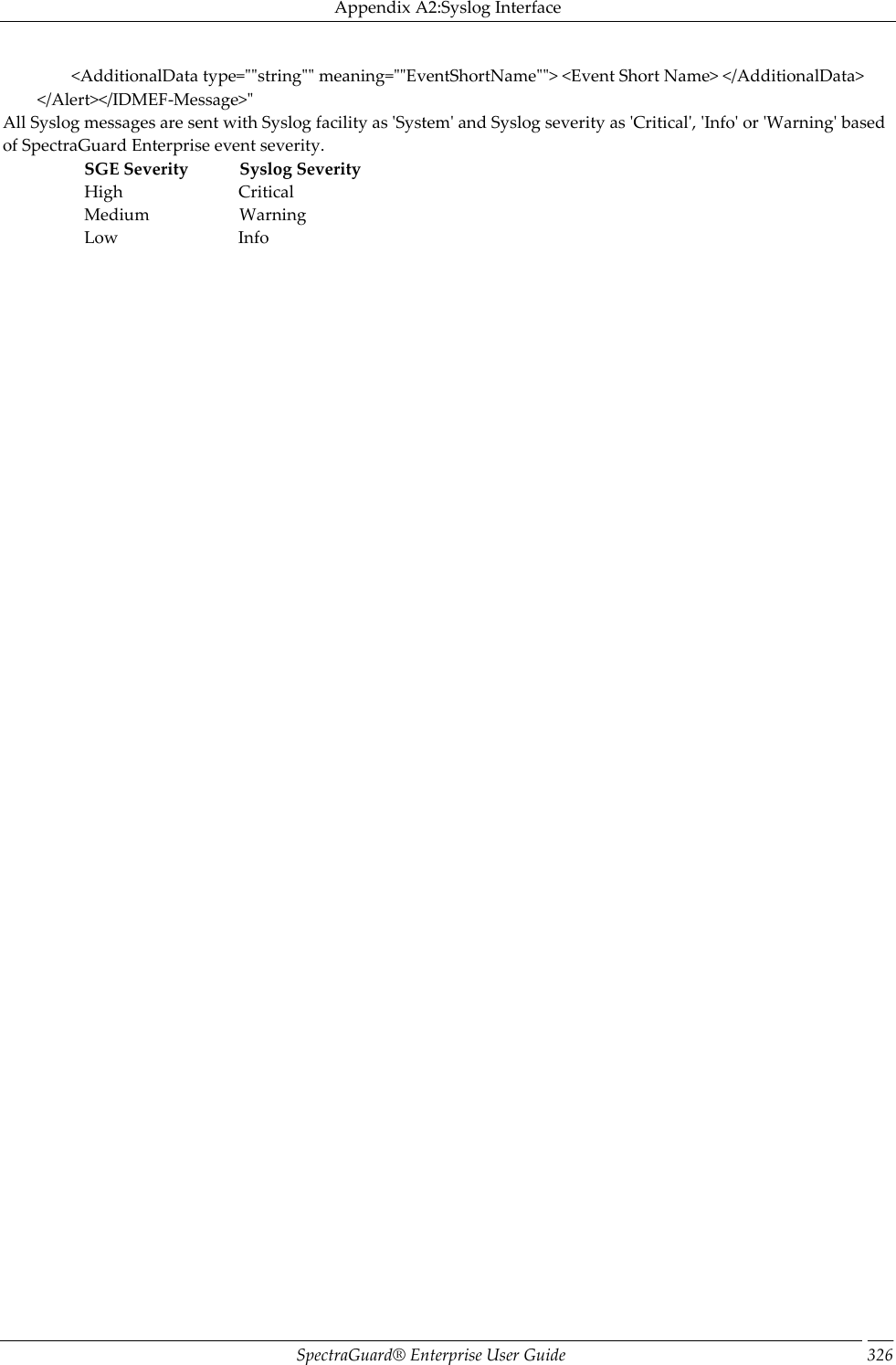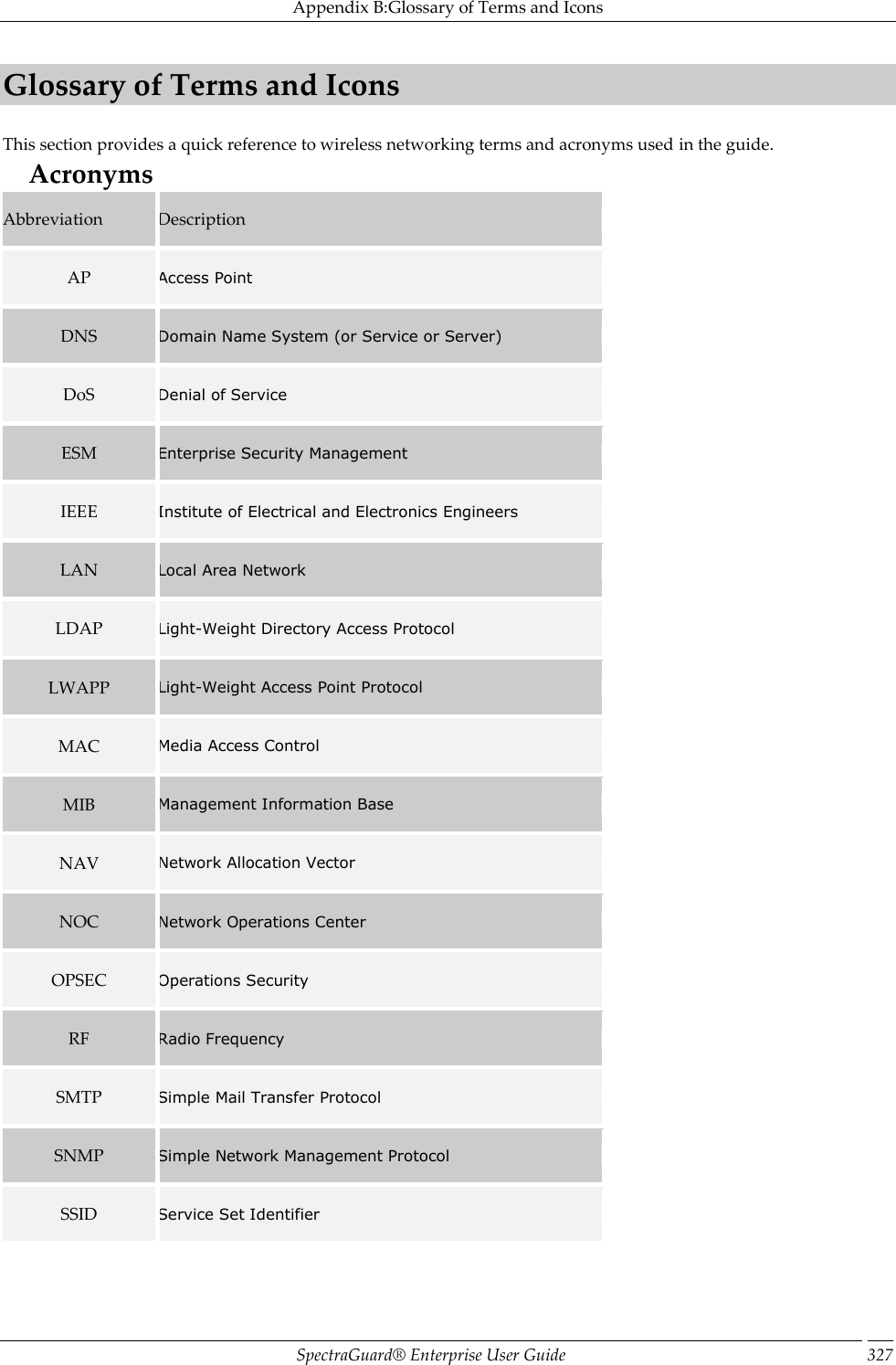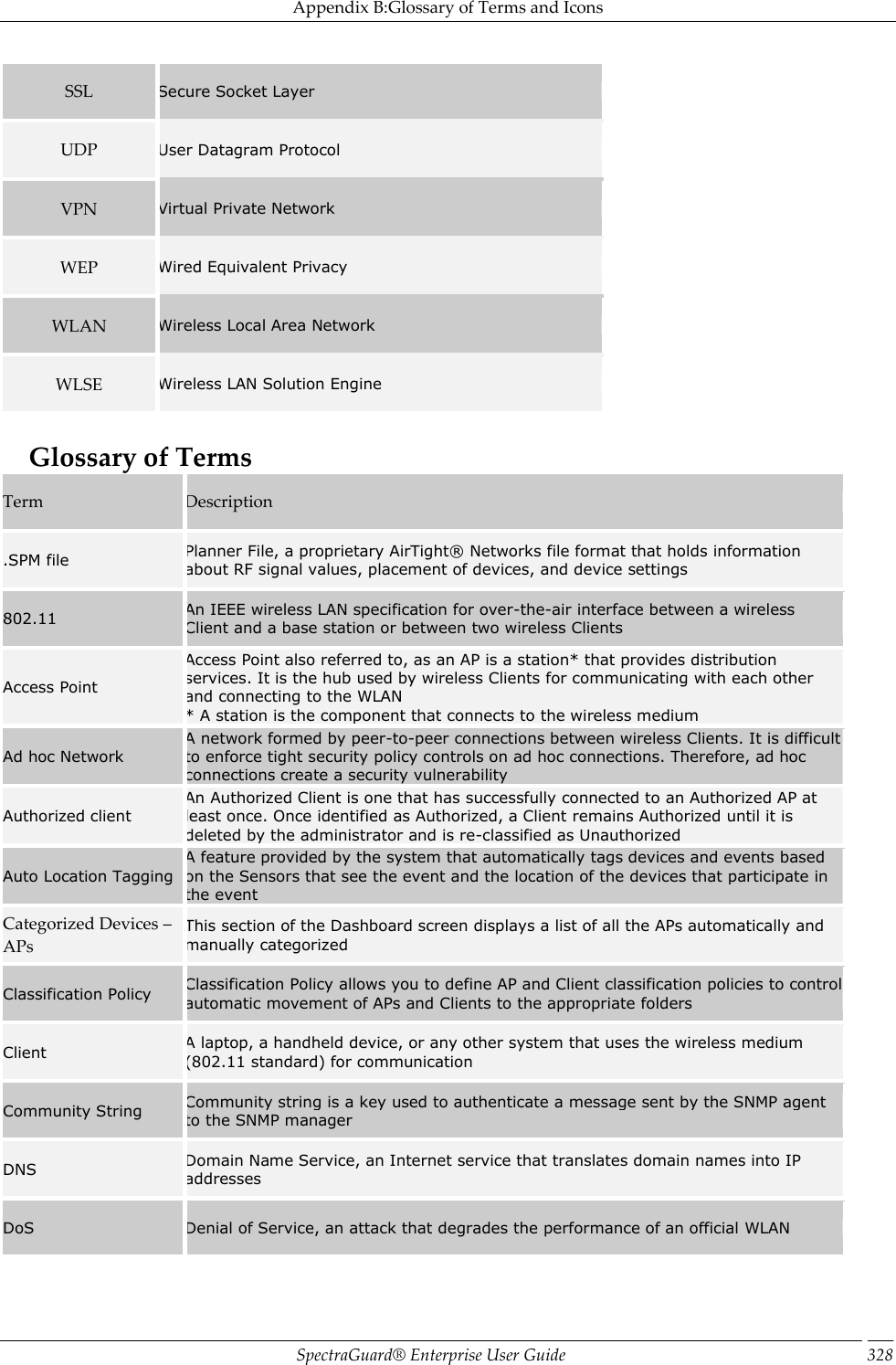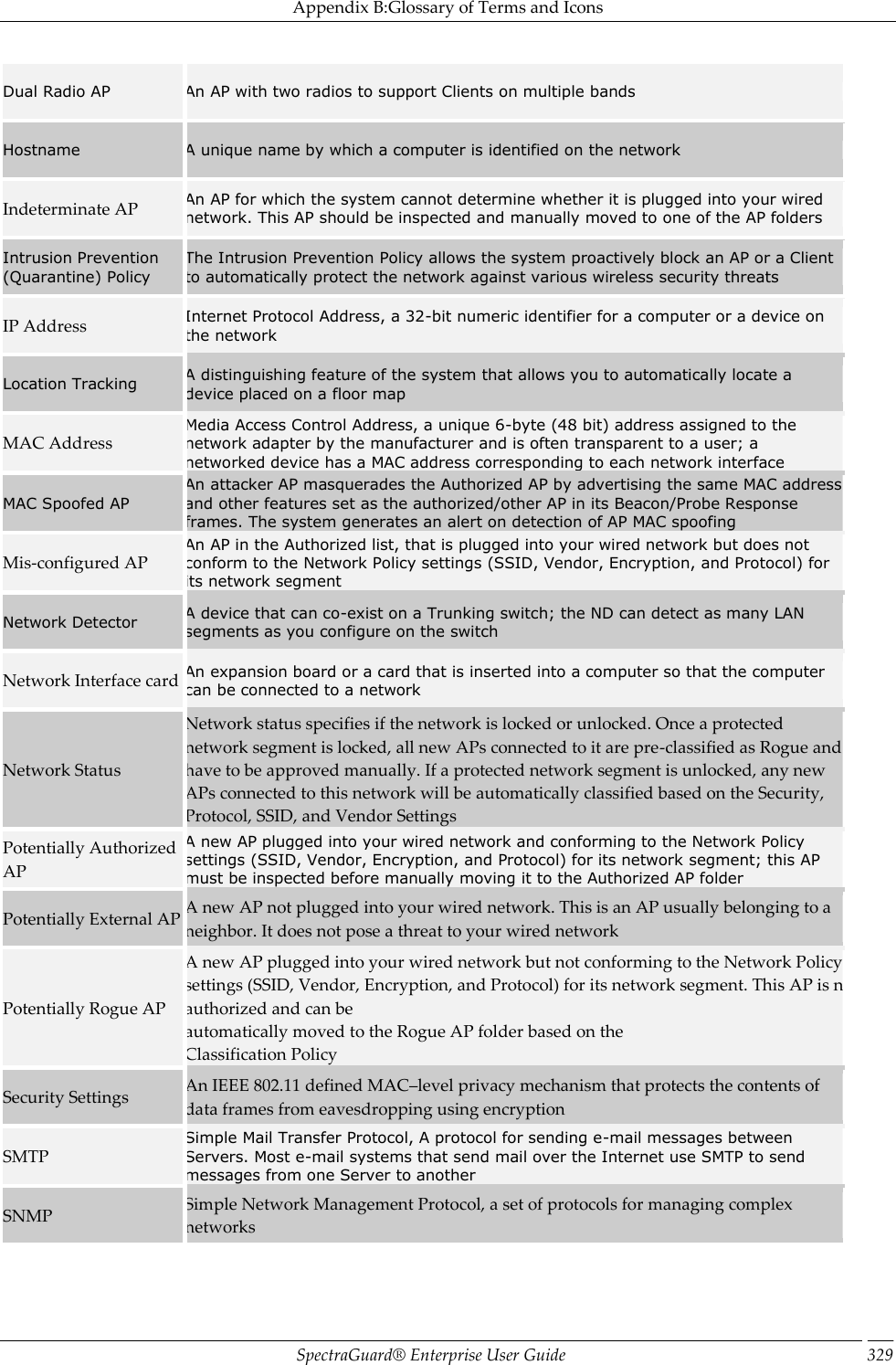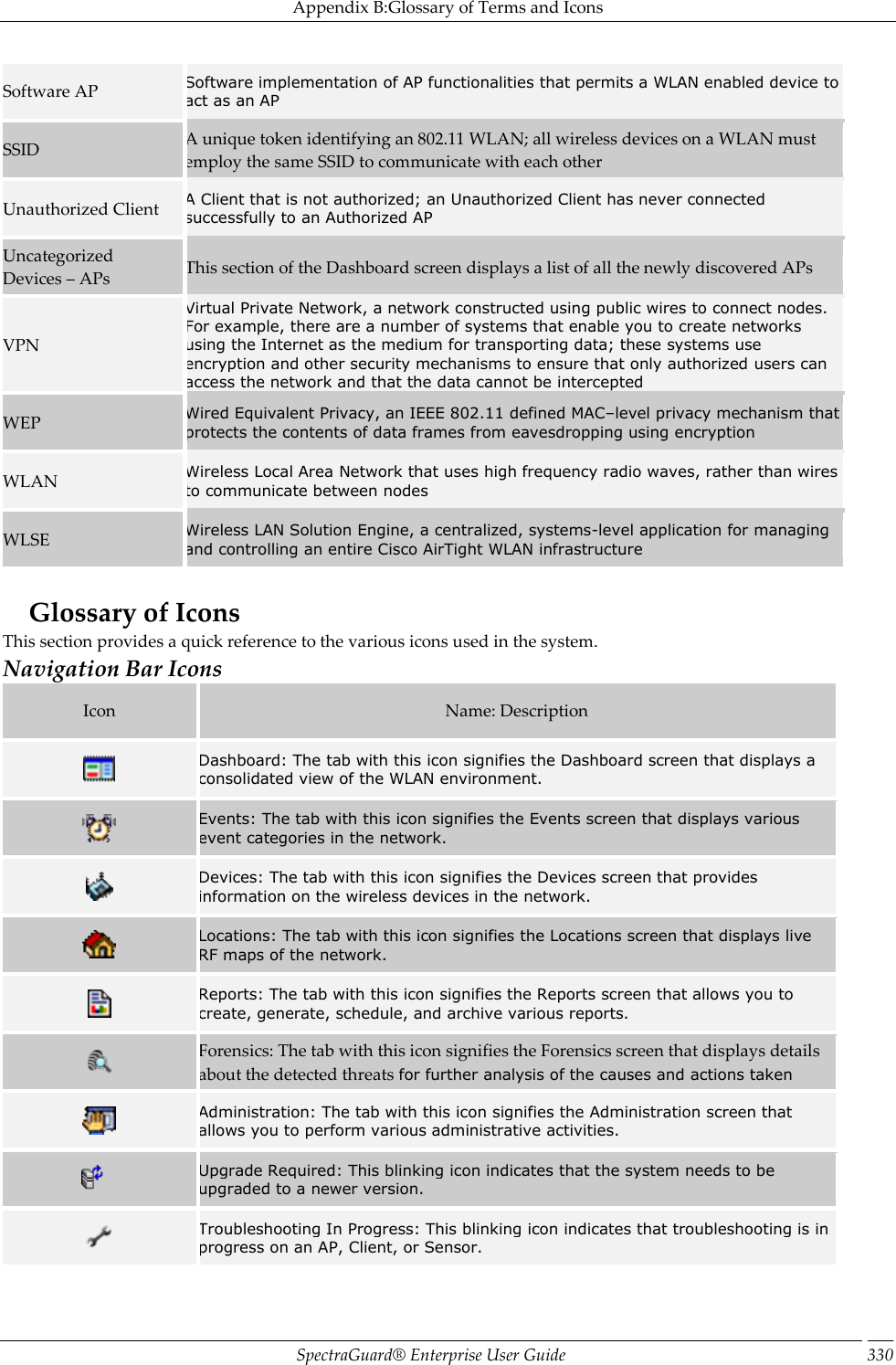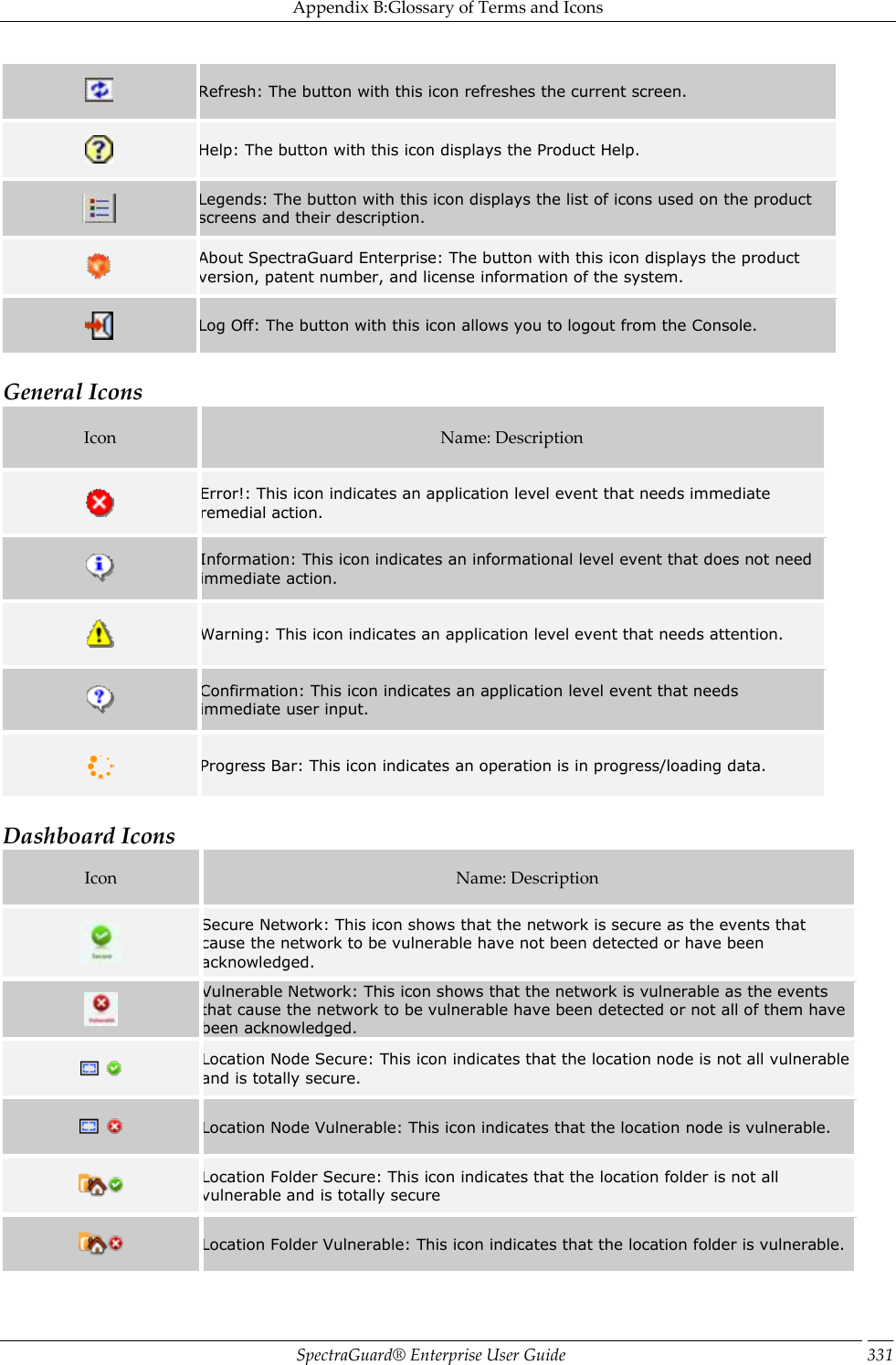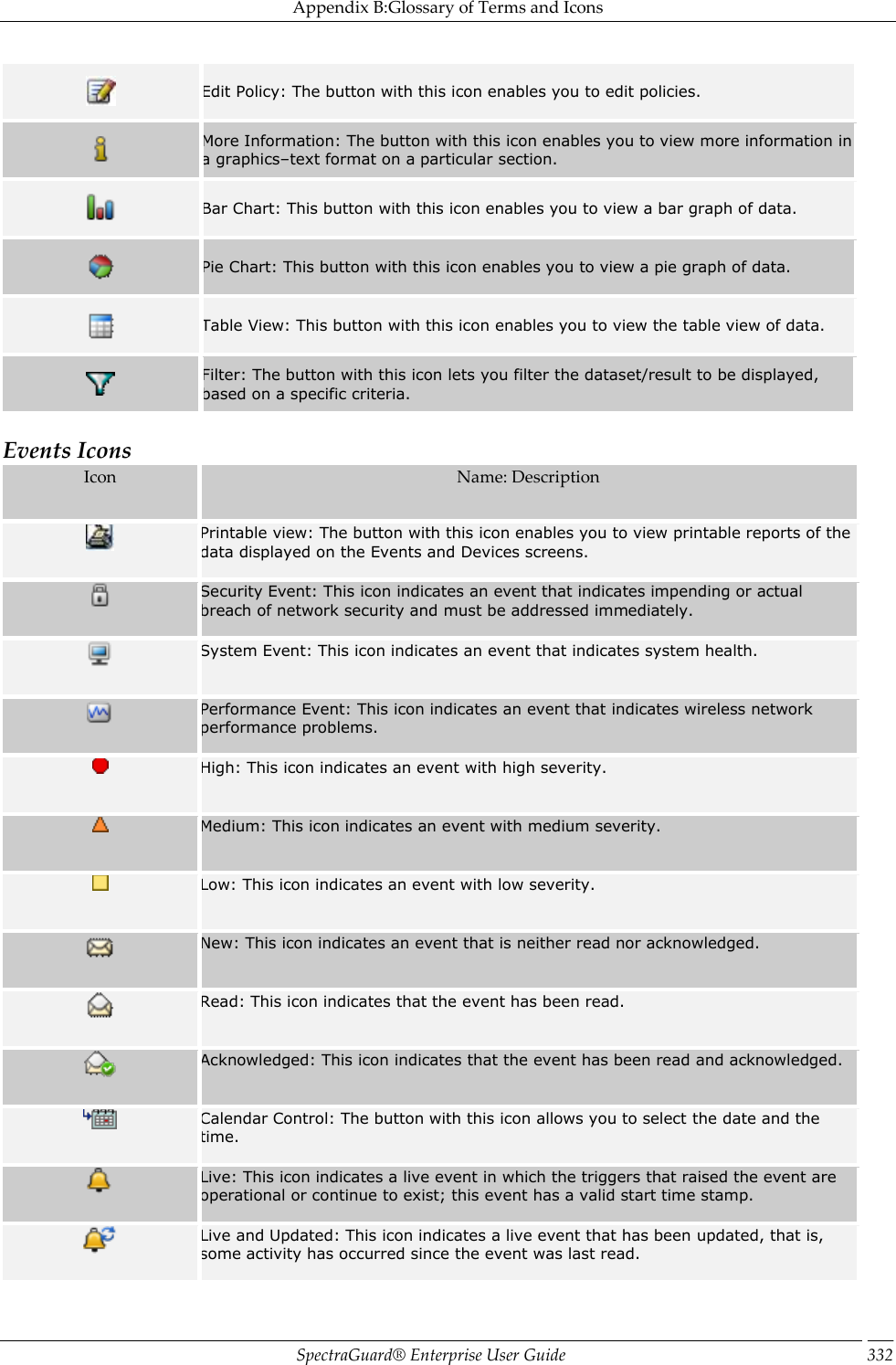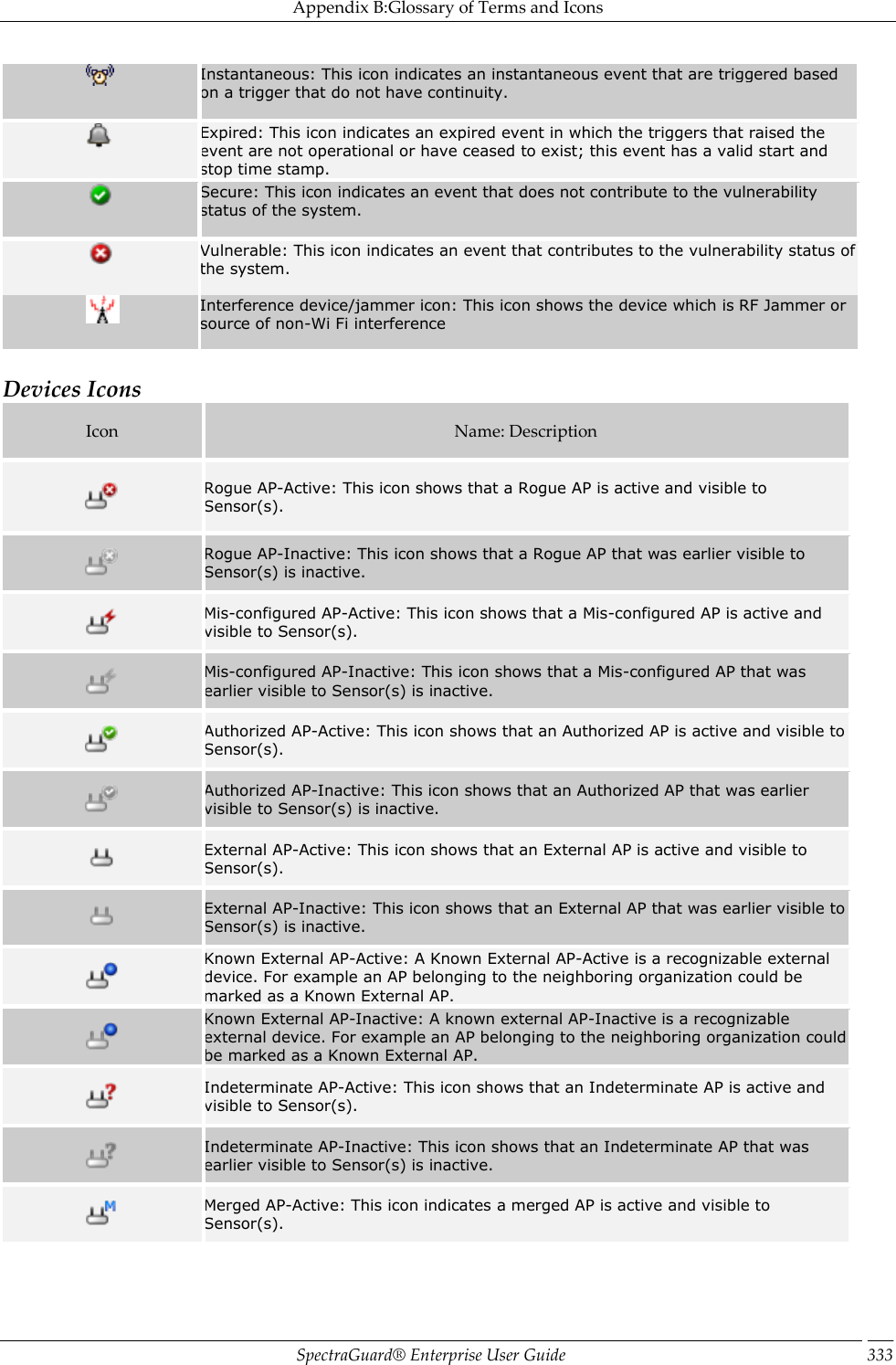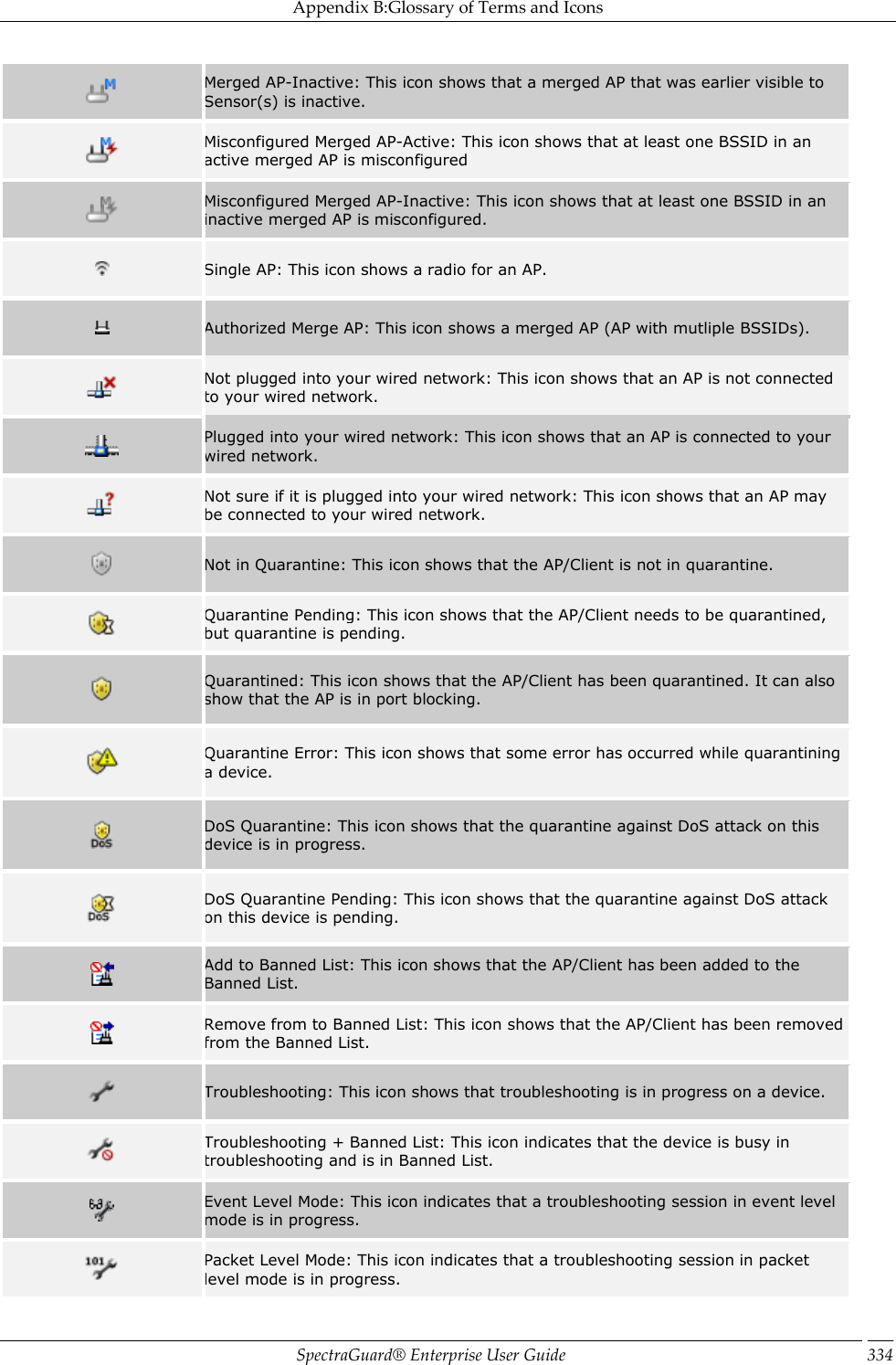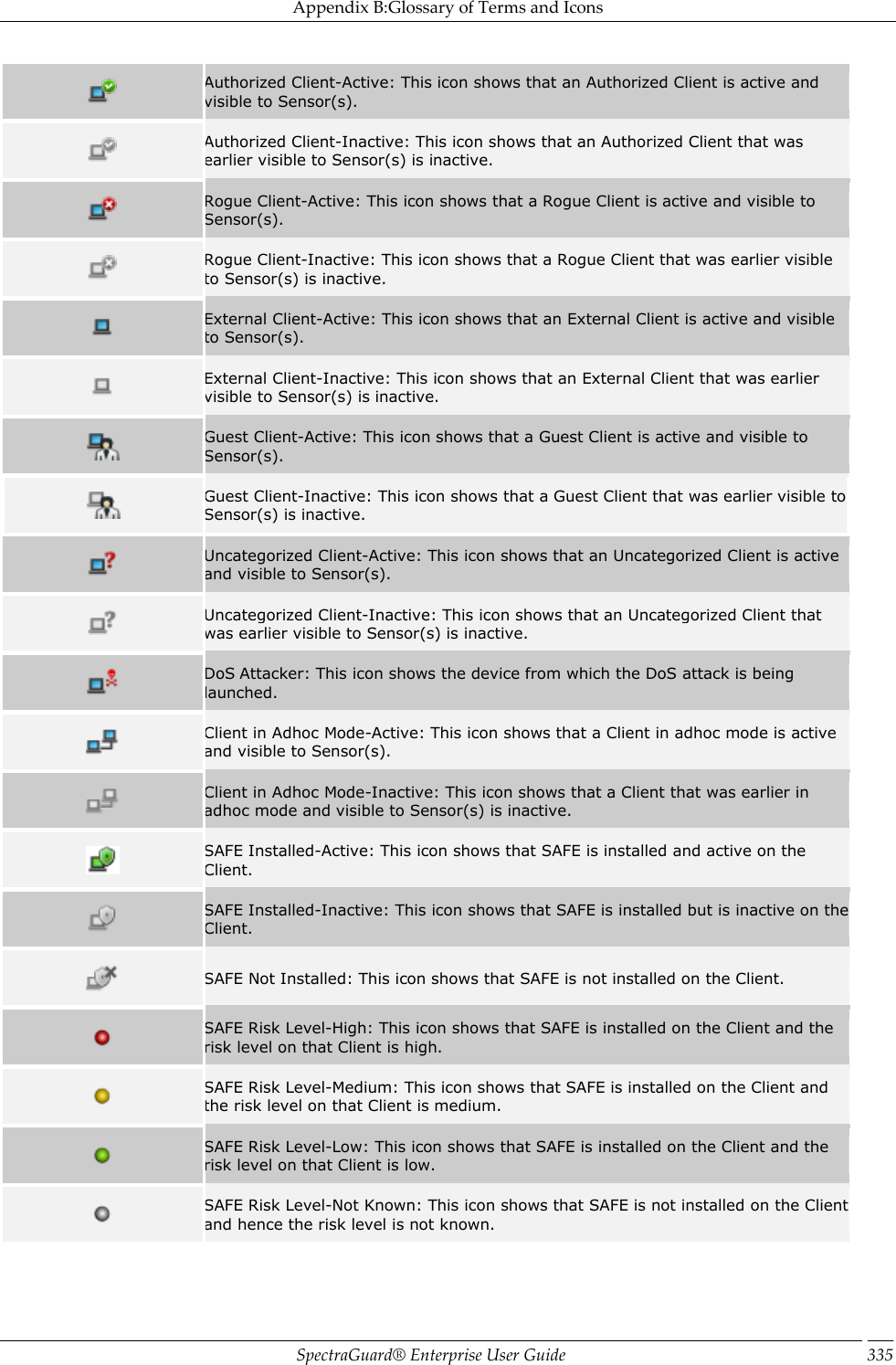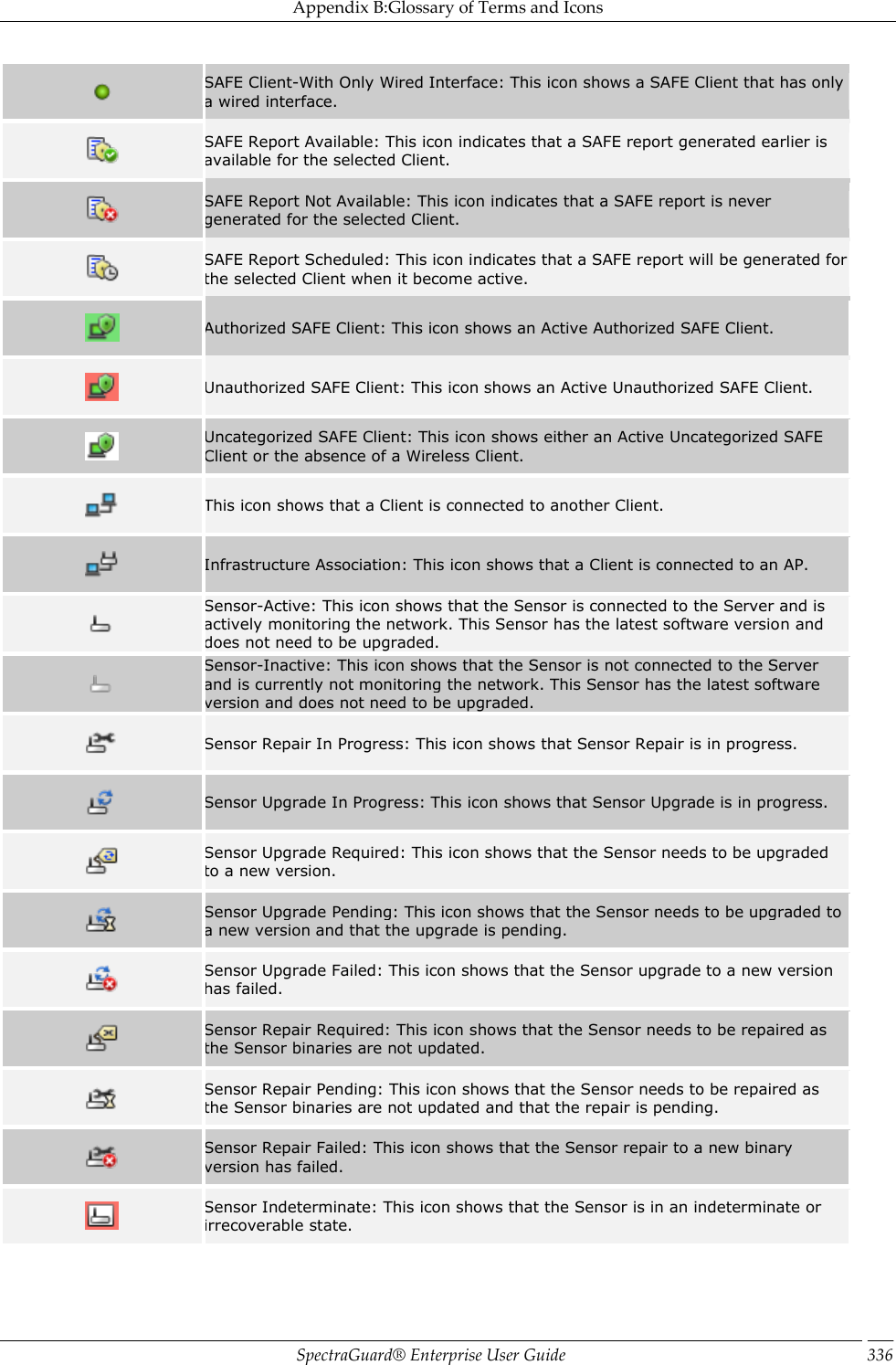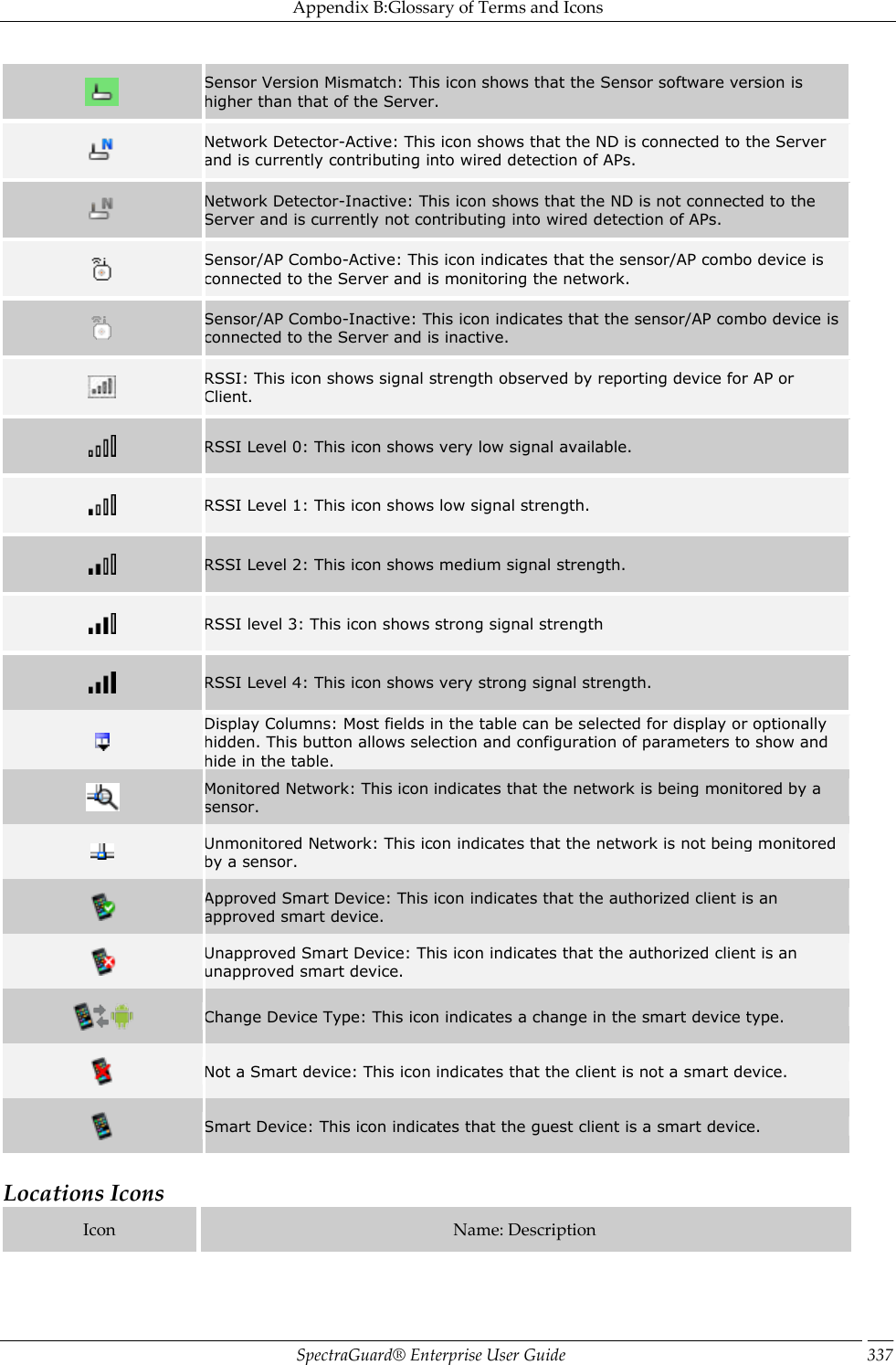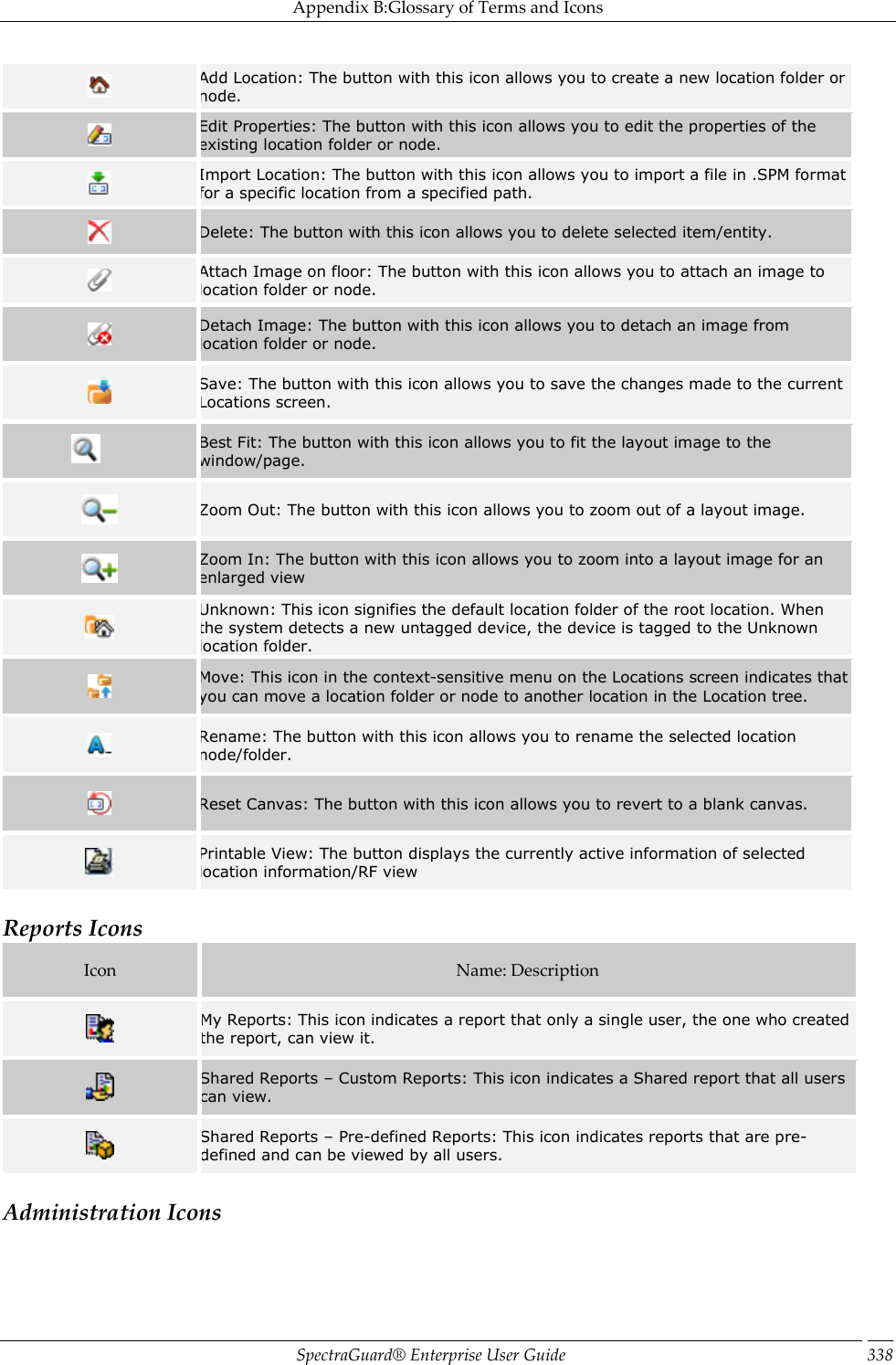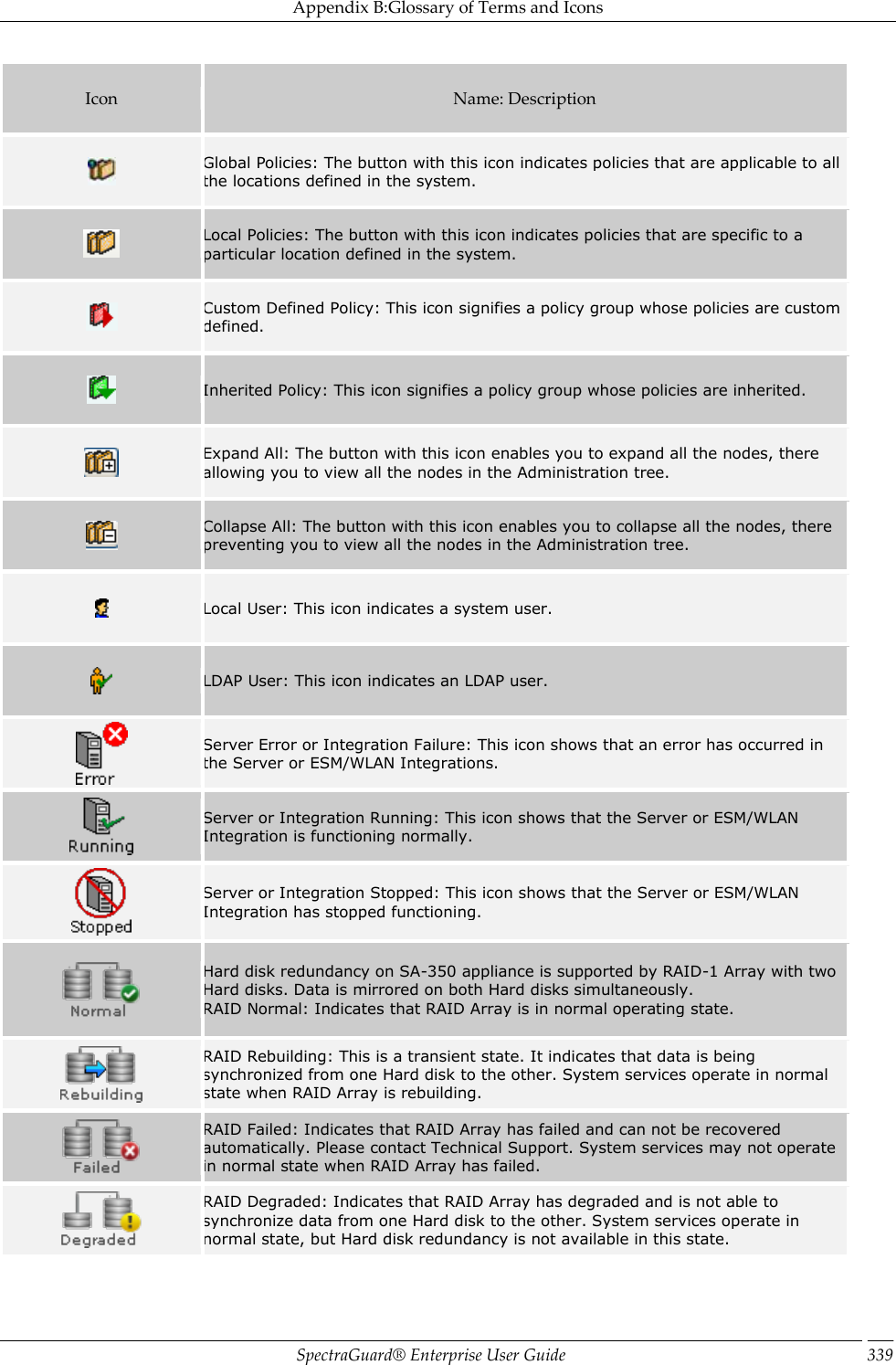Mojo Networks SS300ATC60 SpectraGuard Access Point / Sensor User Manual 6
AirTight Networks, Inc. SpectraGuard Access Point / Sensor Users Manual 6
Contents
- 1. Users Manual
- 2. Users Manual-1
- 3. Users Manual-2
- 4. Users Manual-3
- 5. Users Manual-4
- 6. Users Manual-5
- 7. Users Manual-6
- 8. (SS-300AT-C-60) UserMan-Part1_2013.12.11 revised
- 9. (SS-300AT-C-60) UserMan-Part2
- 10. (SS-300AT-C-60) UserMan-Part3
- 11. (SS-300AT-C-60) UserMan-Part4
- 12. (SS-300AT-C-60) UserMan-Part5
- 13. (SS-300AT-C-60) UserMan-Part6
Users Manual-6
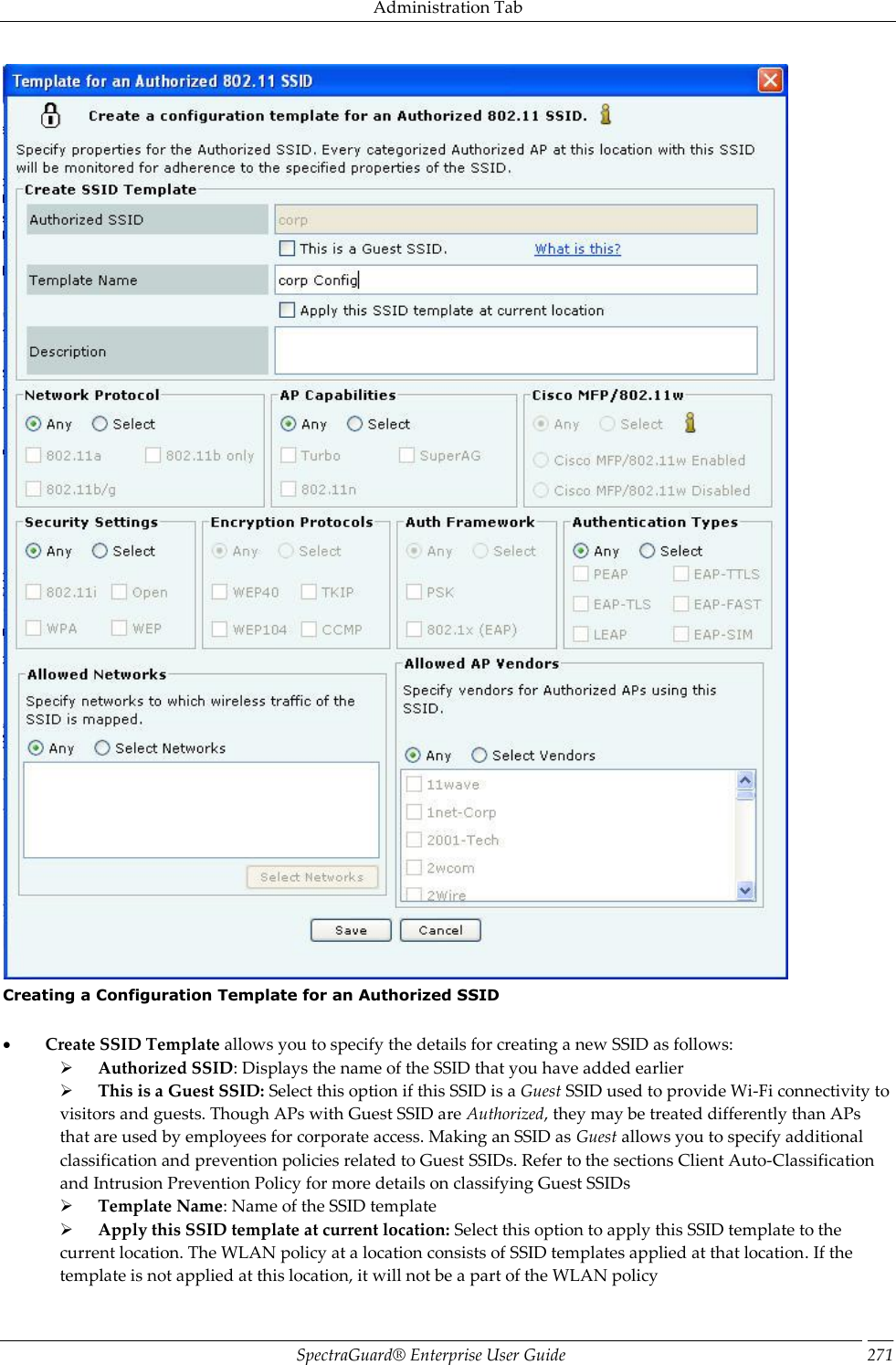
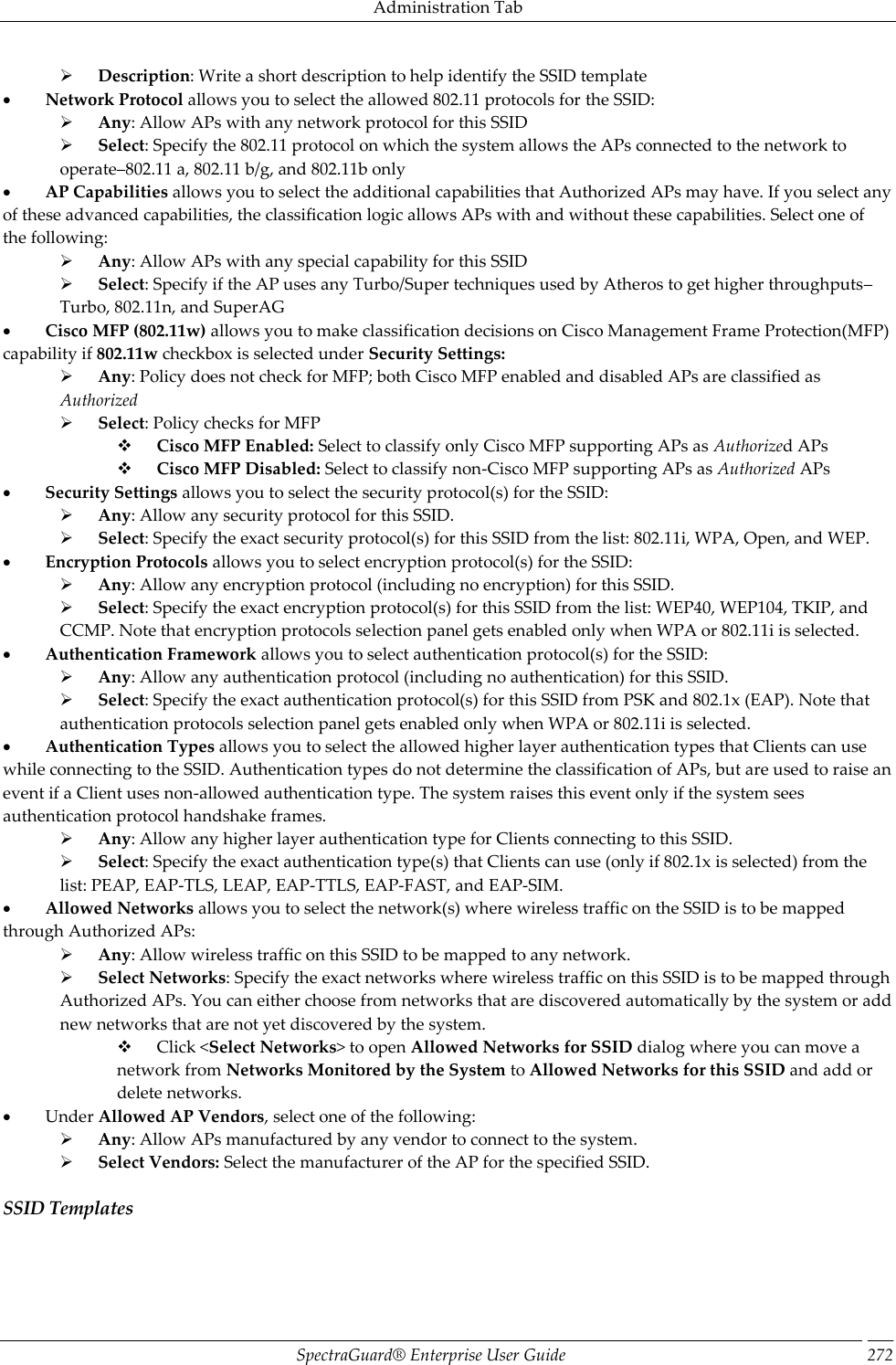
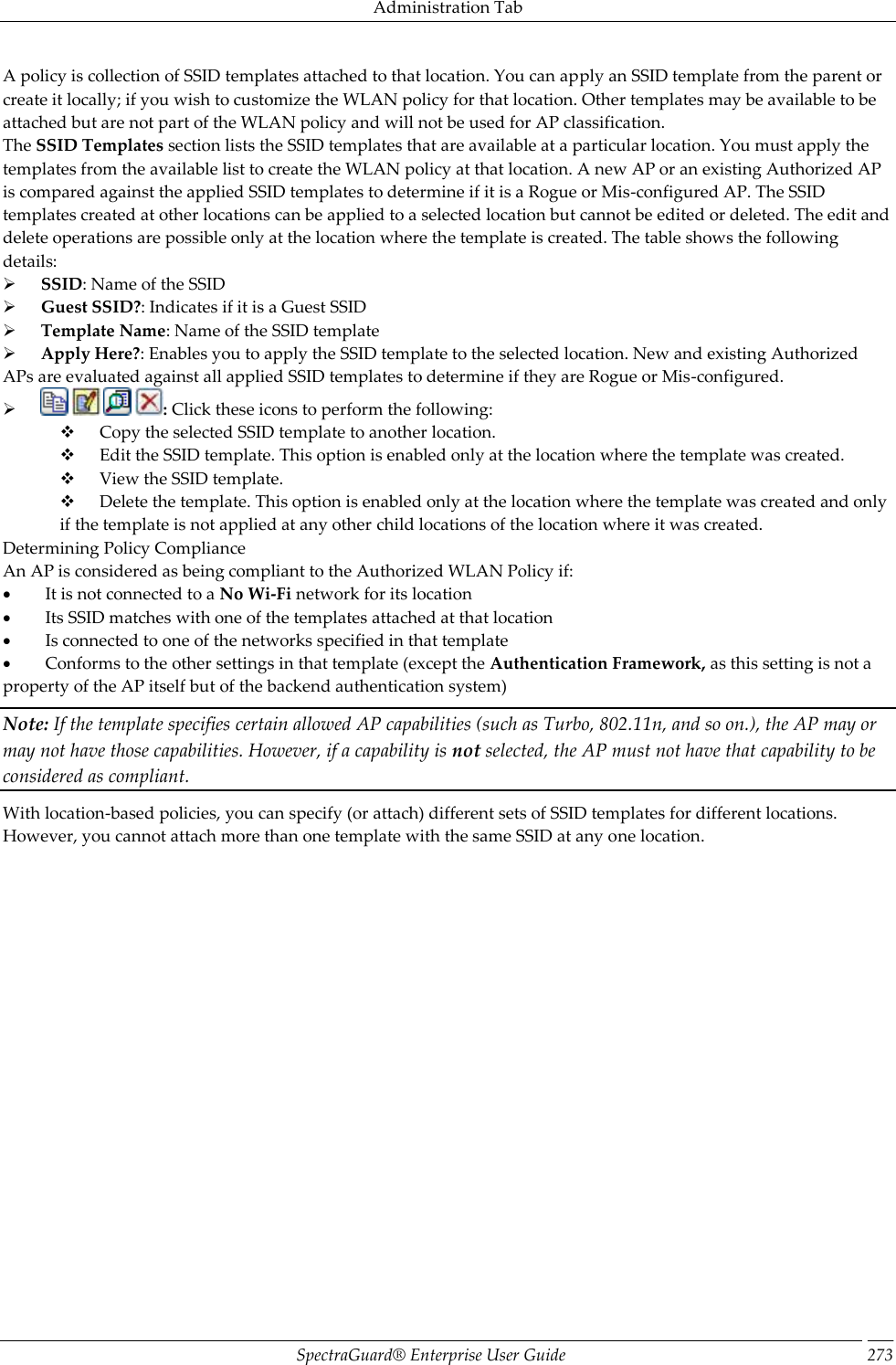
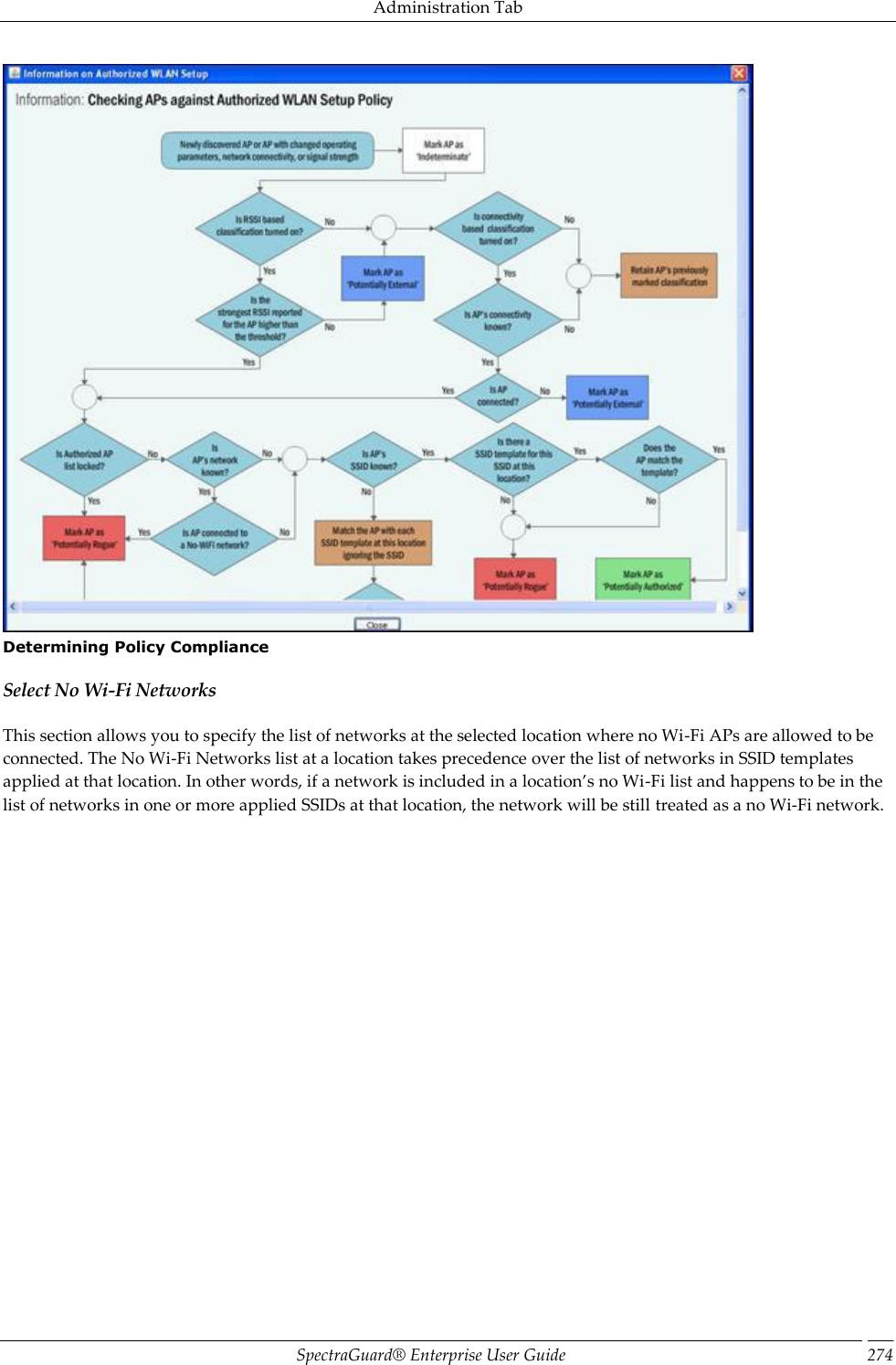
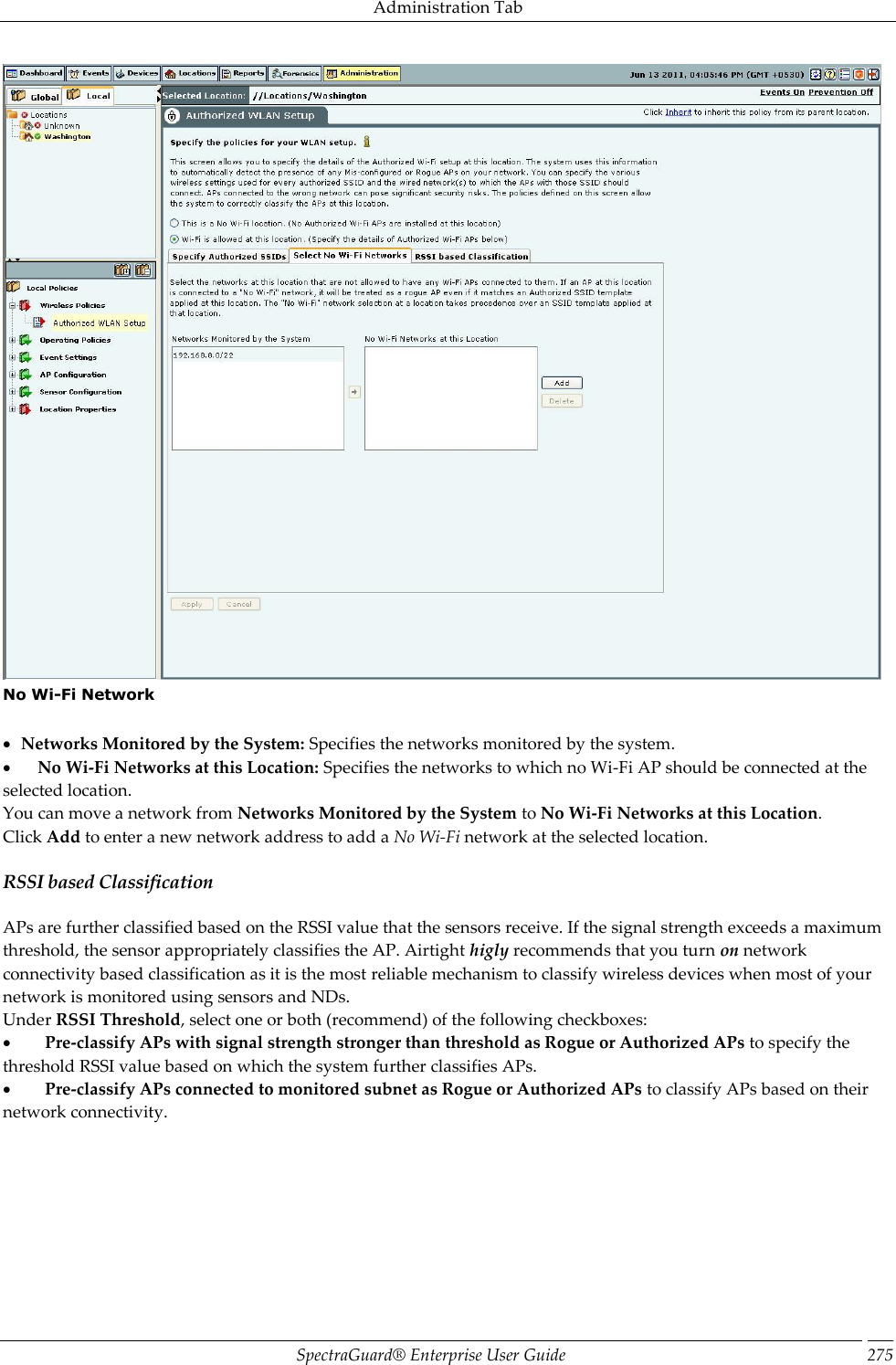
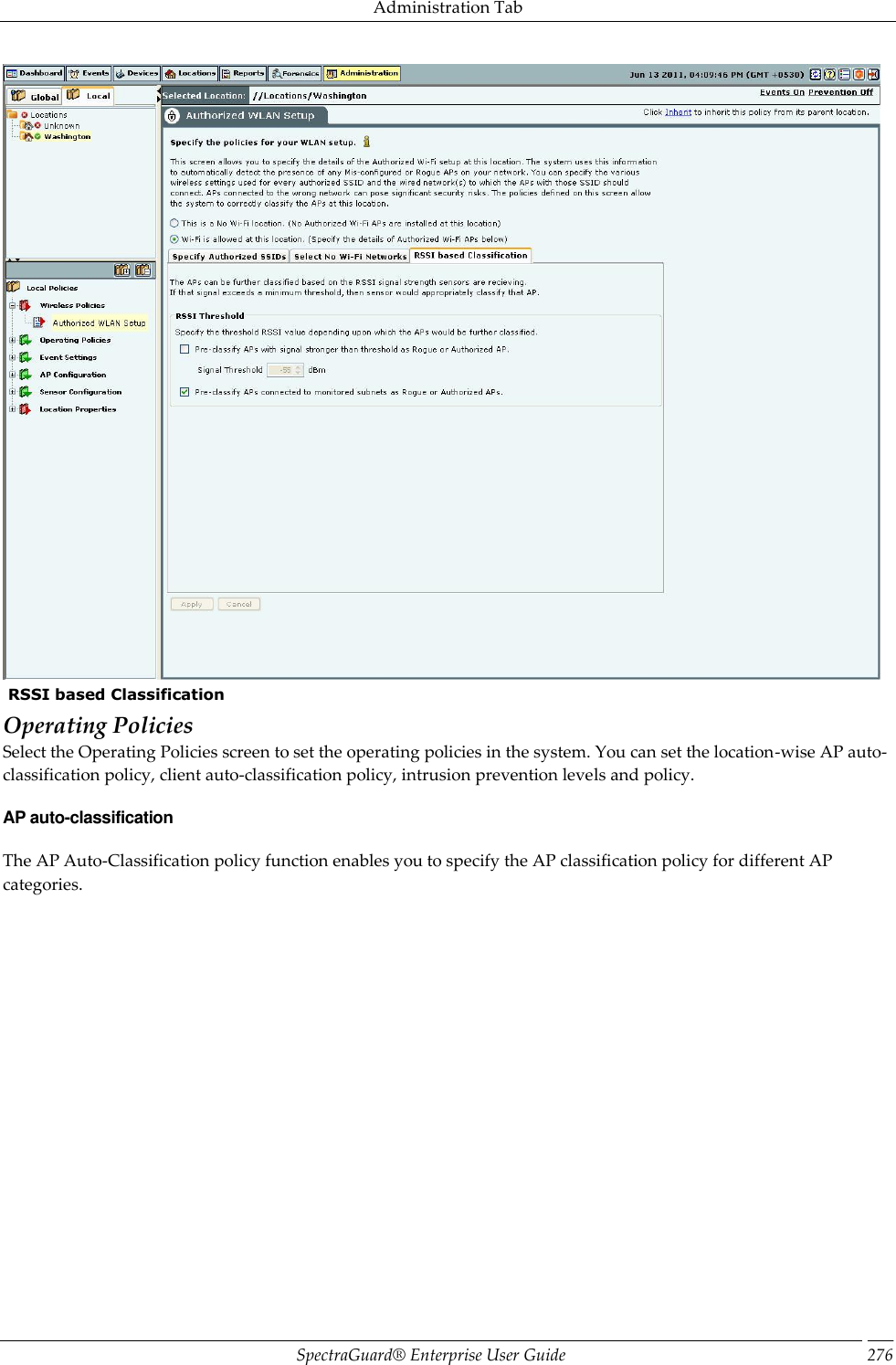
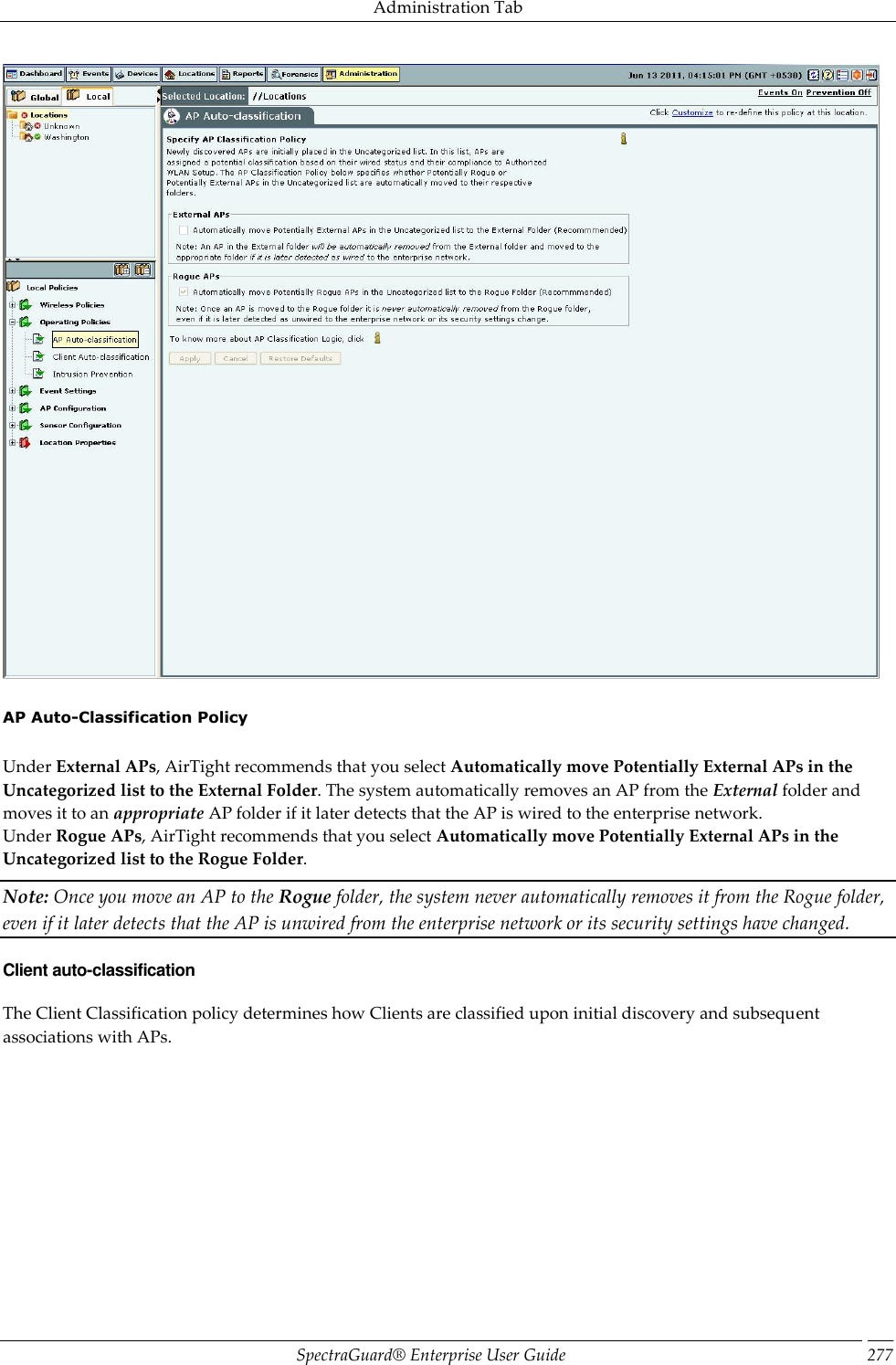
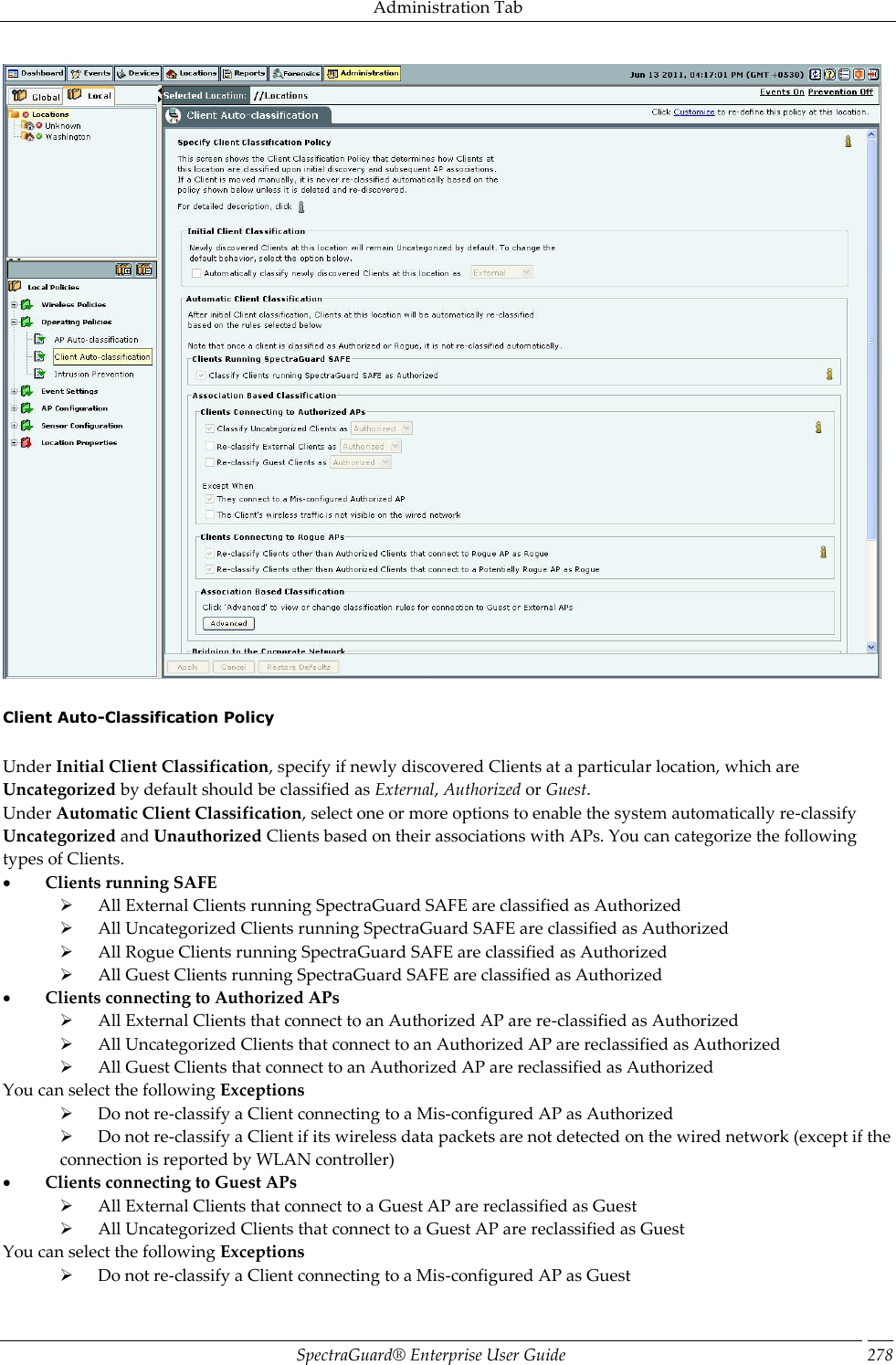
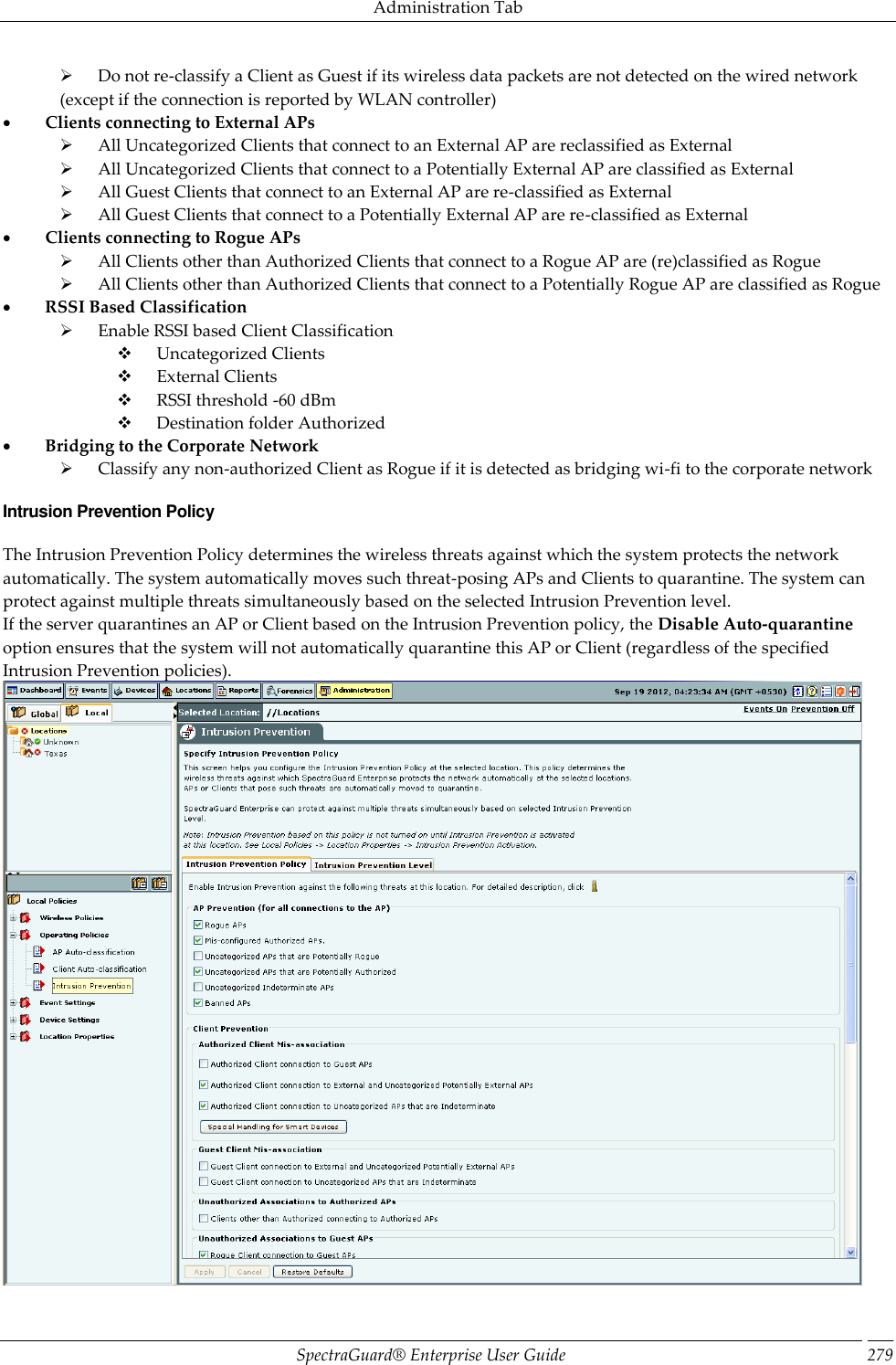
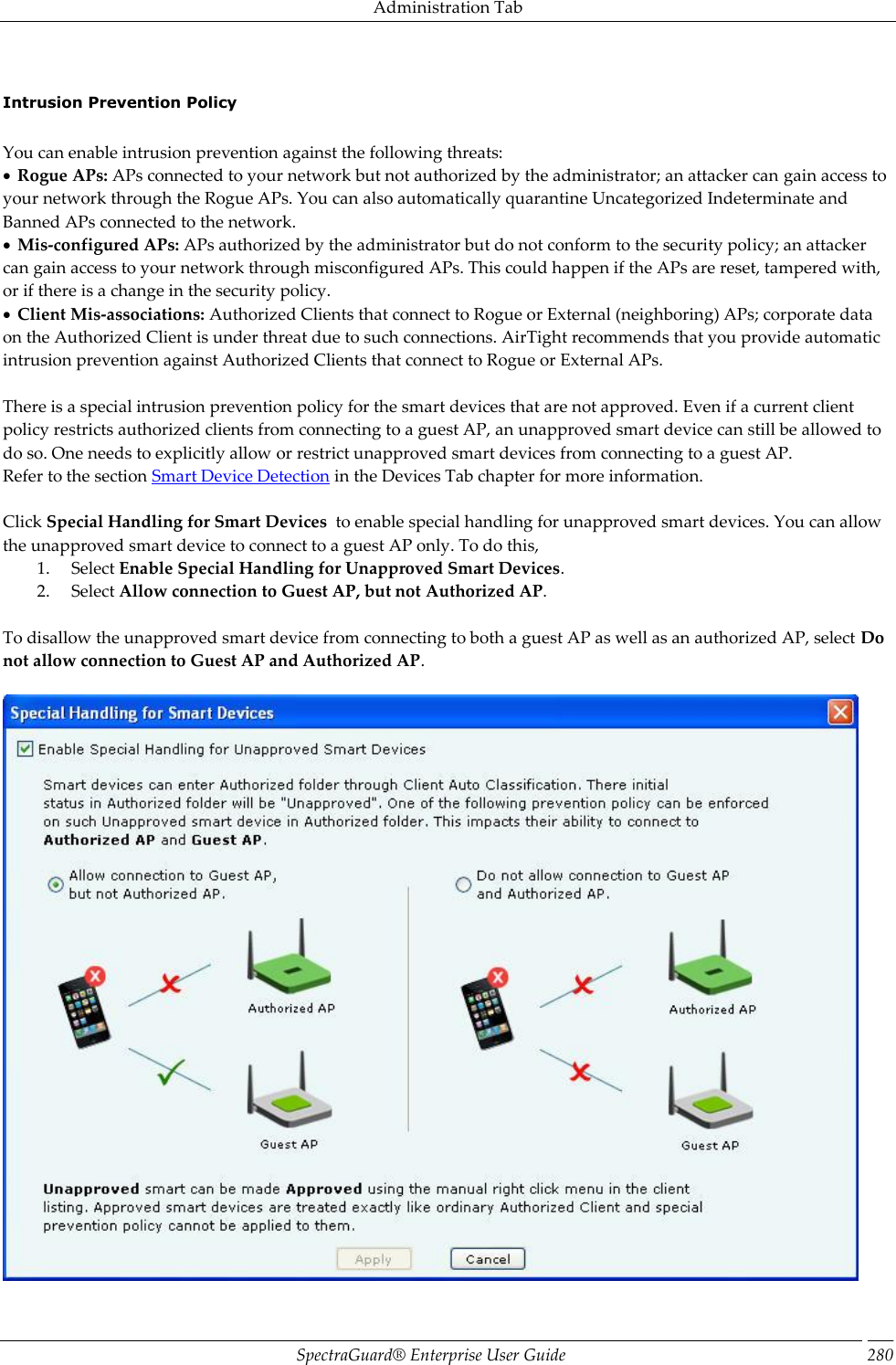
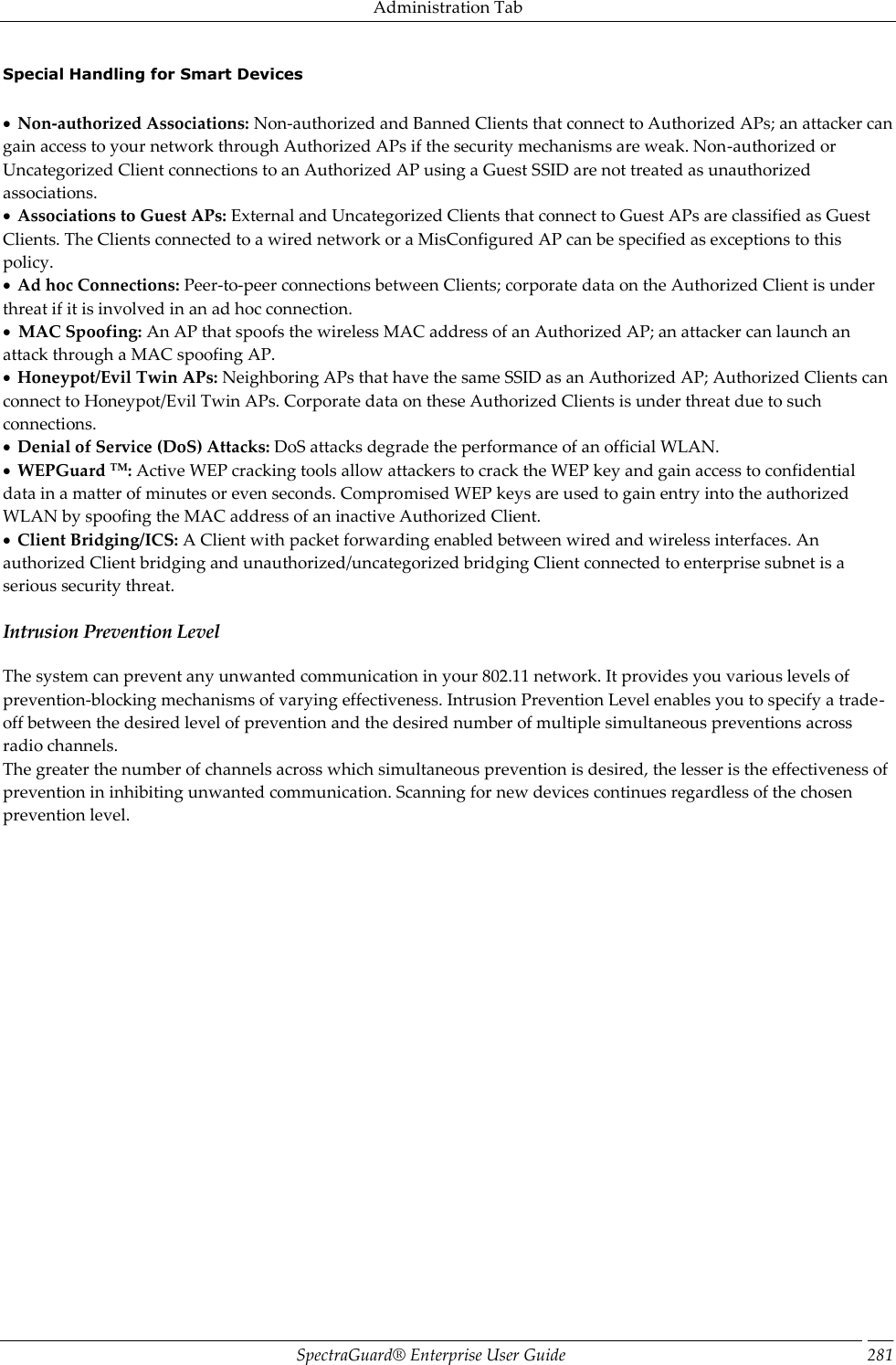
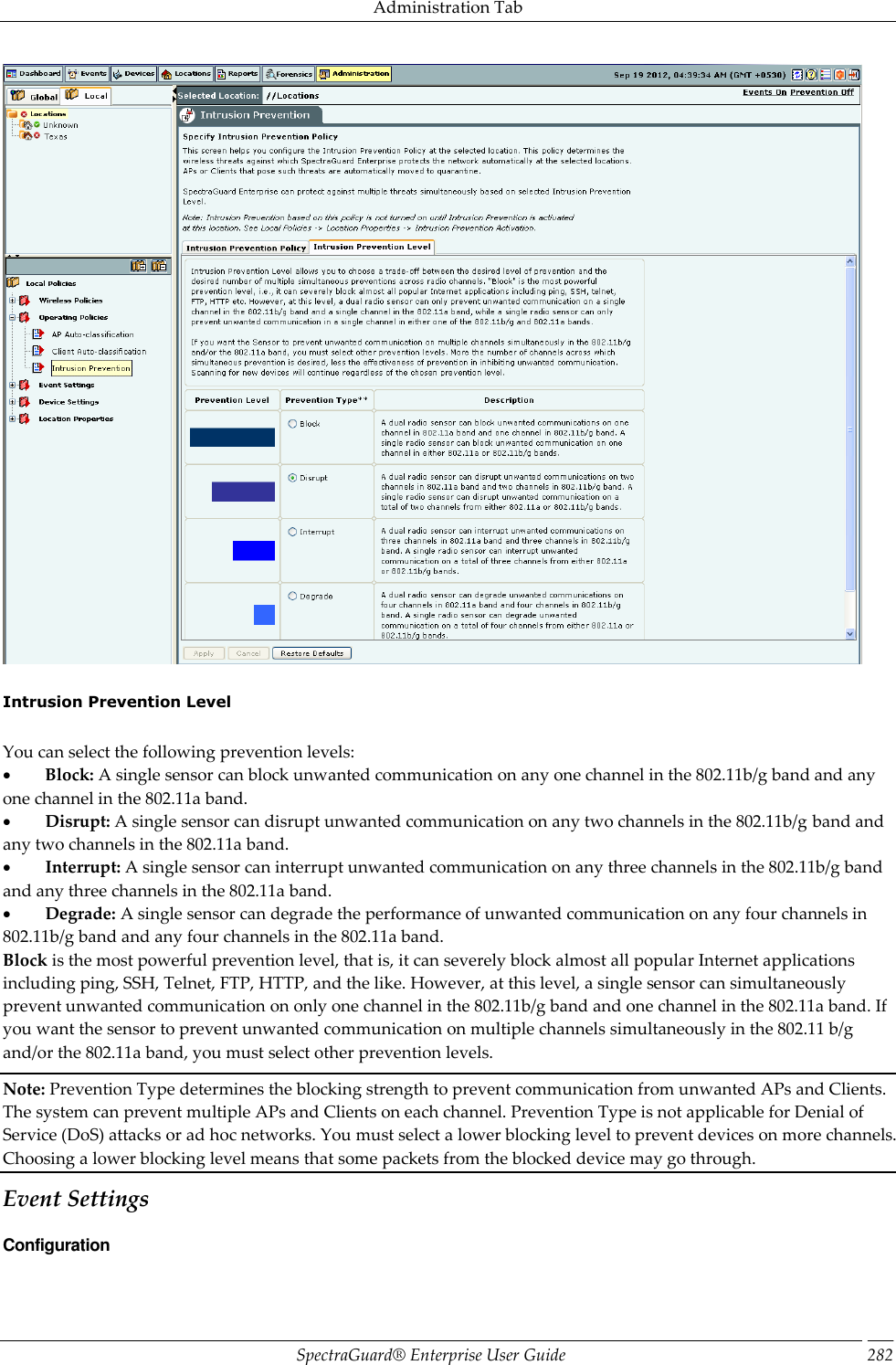
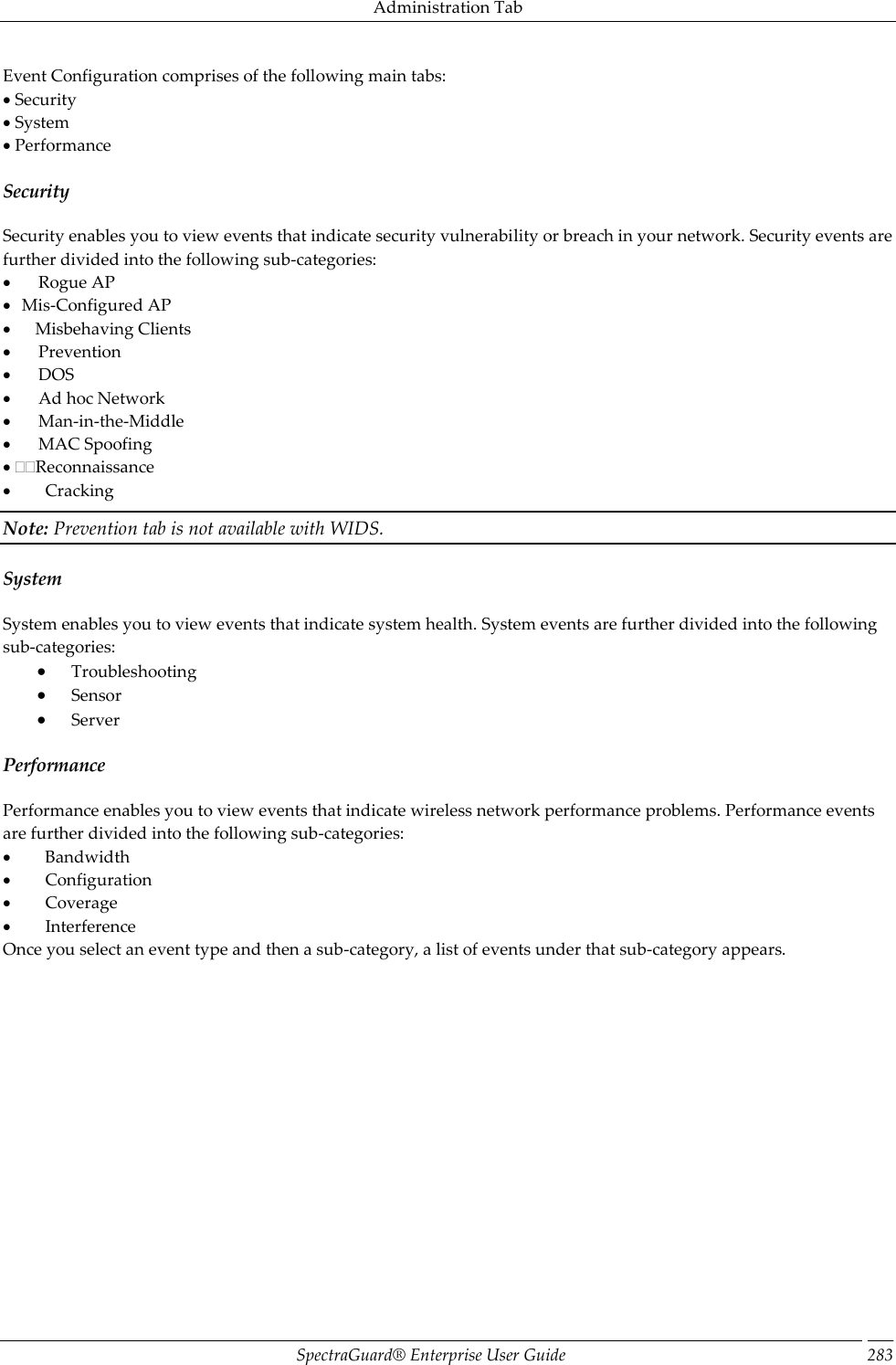
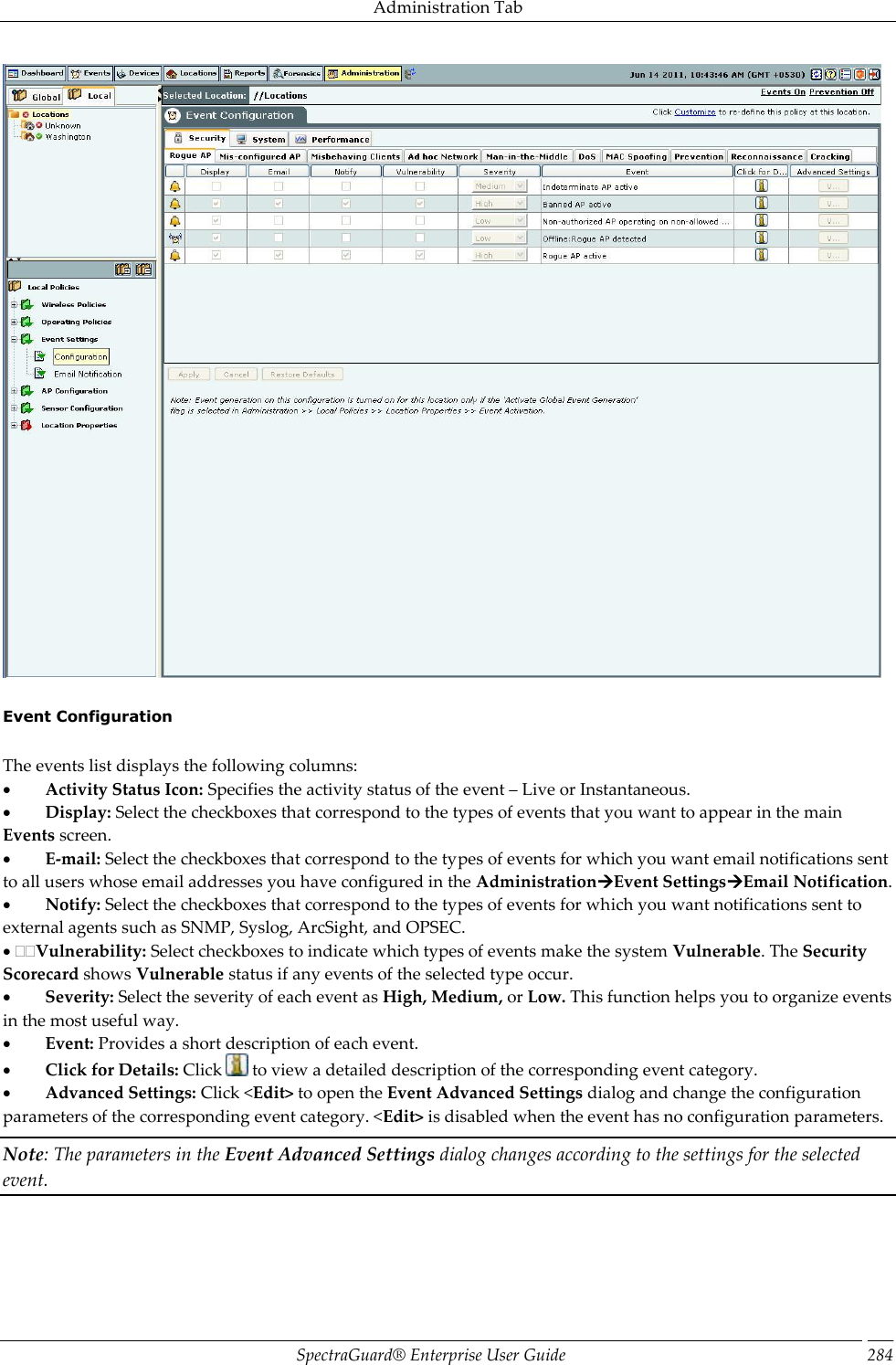
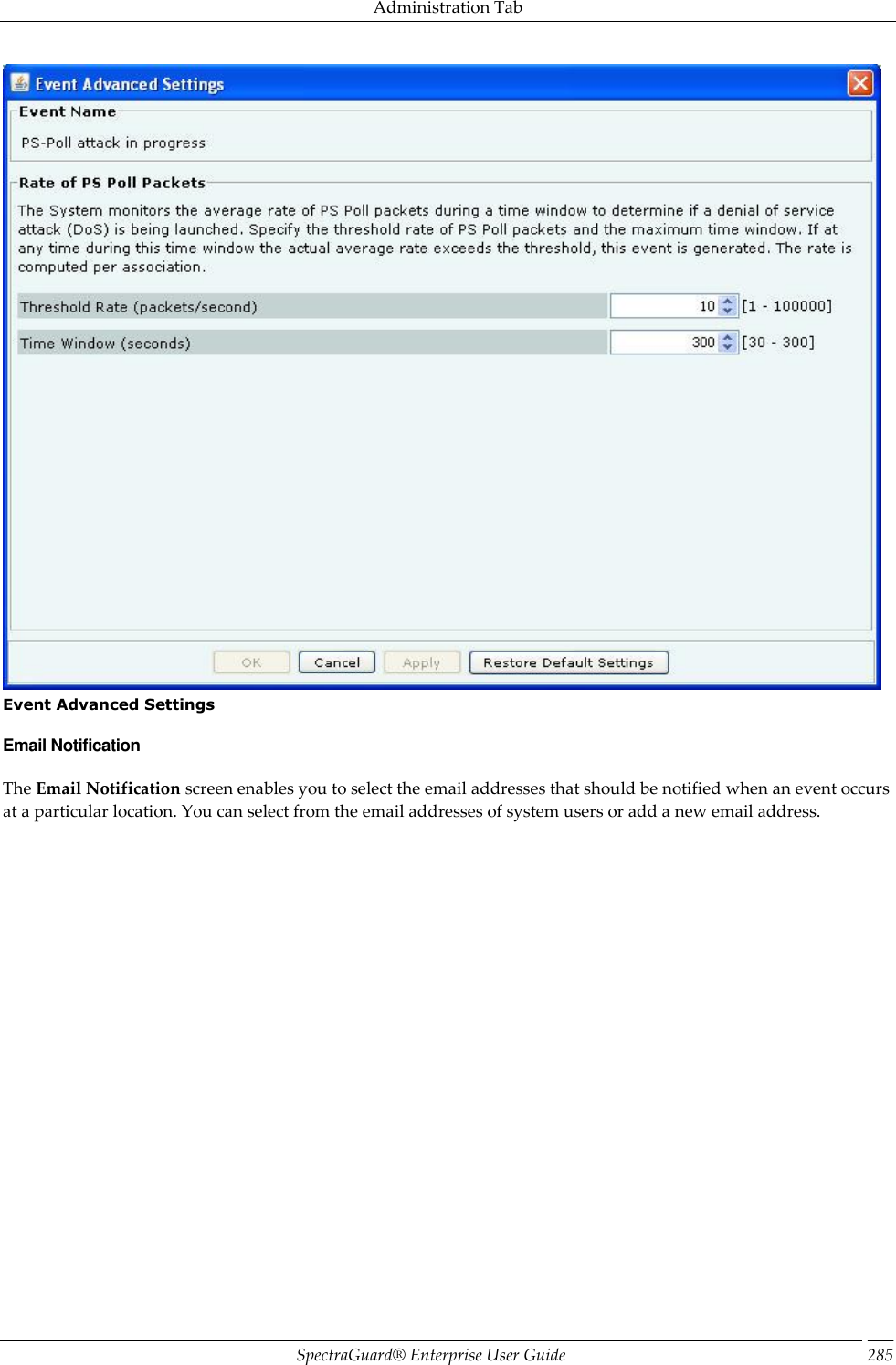
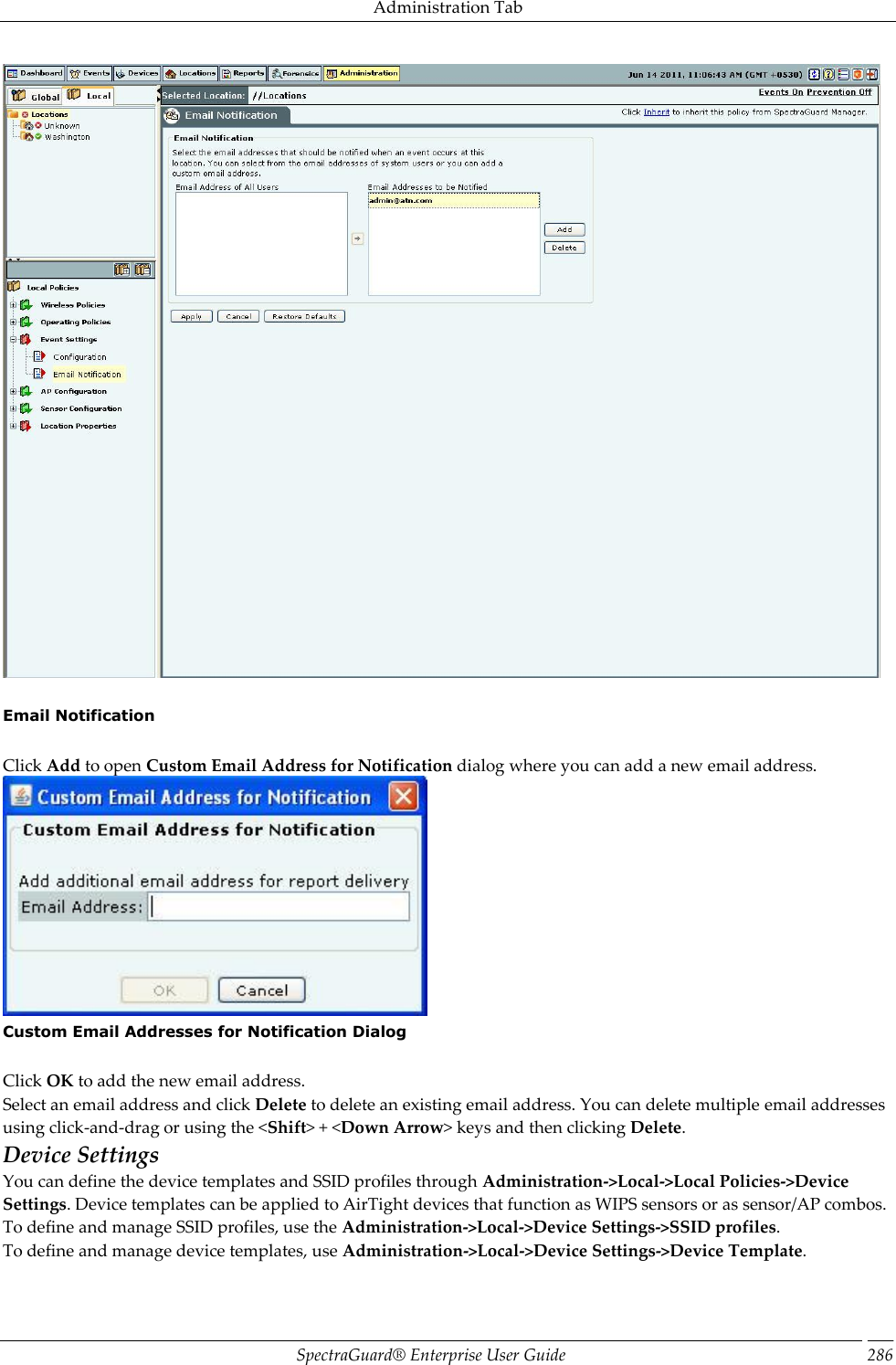
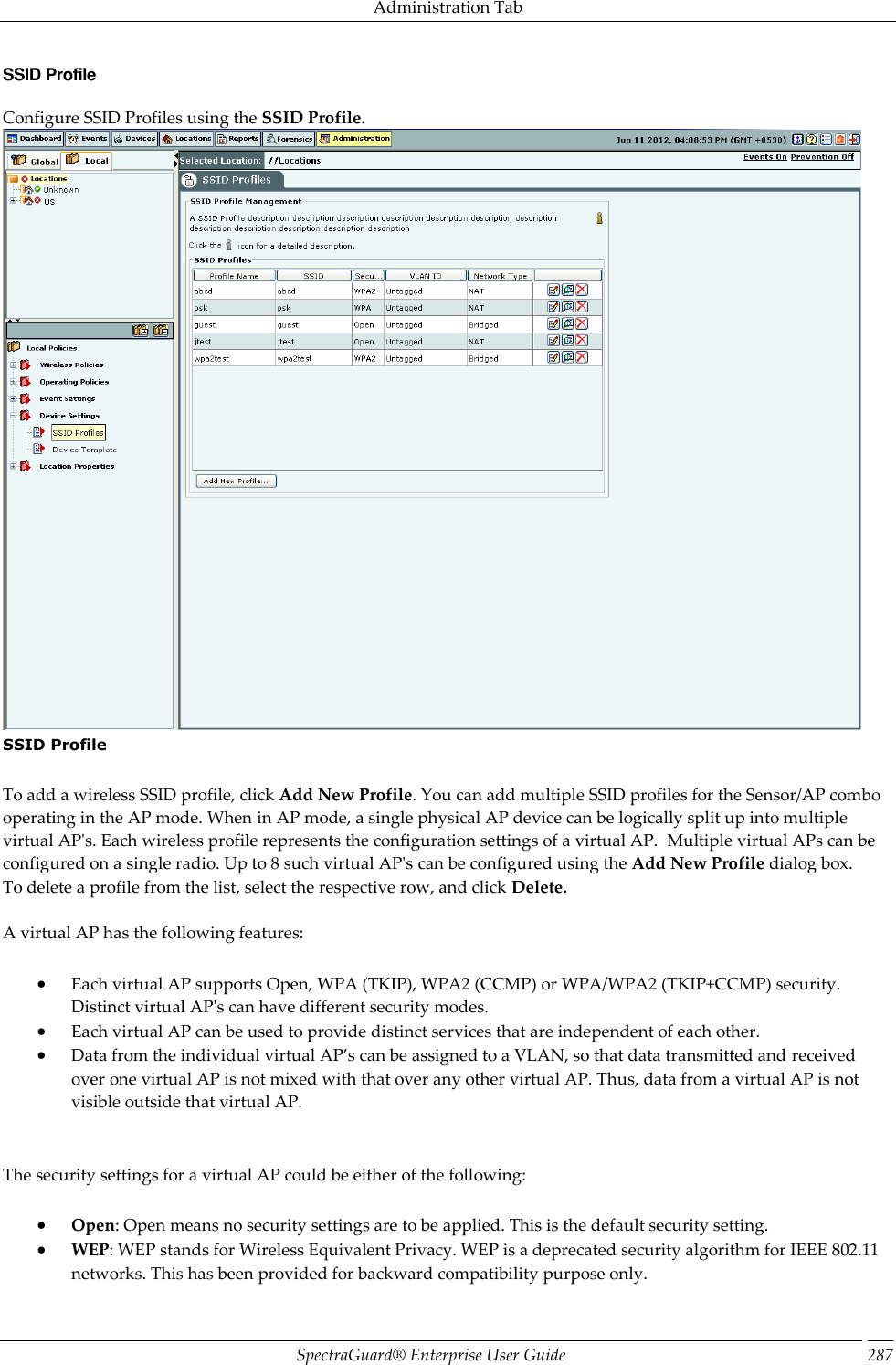
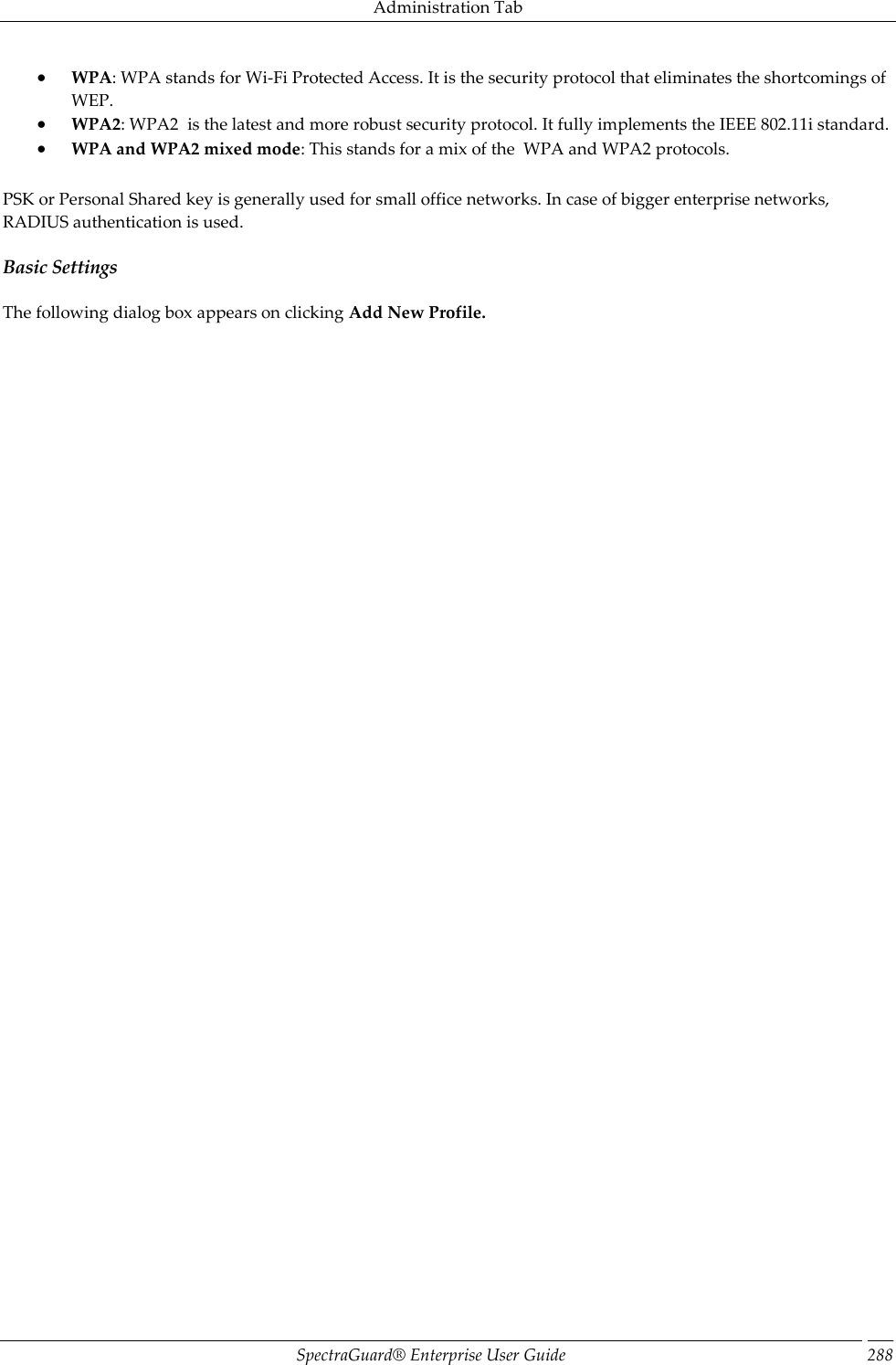
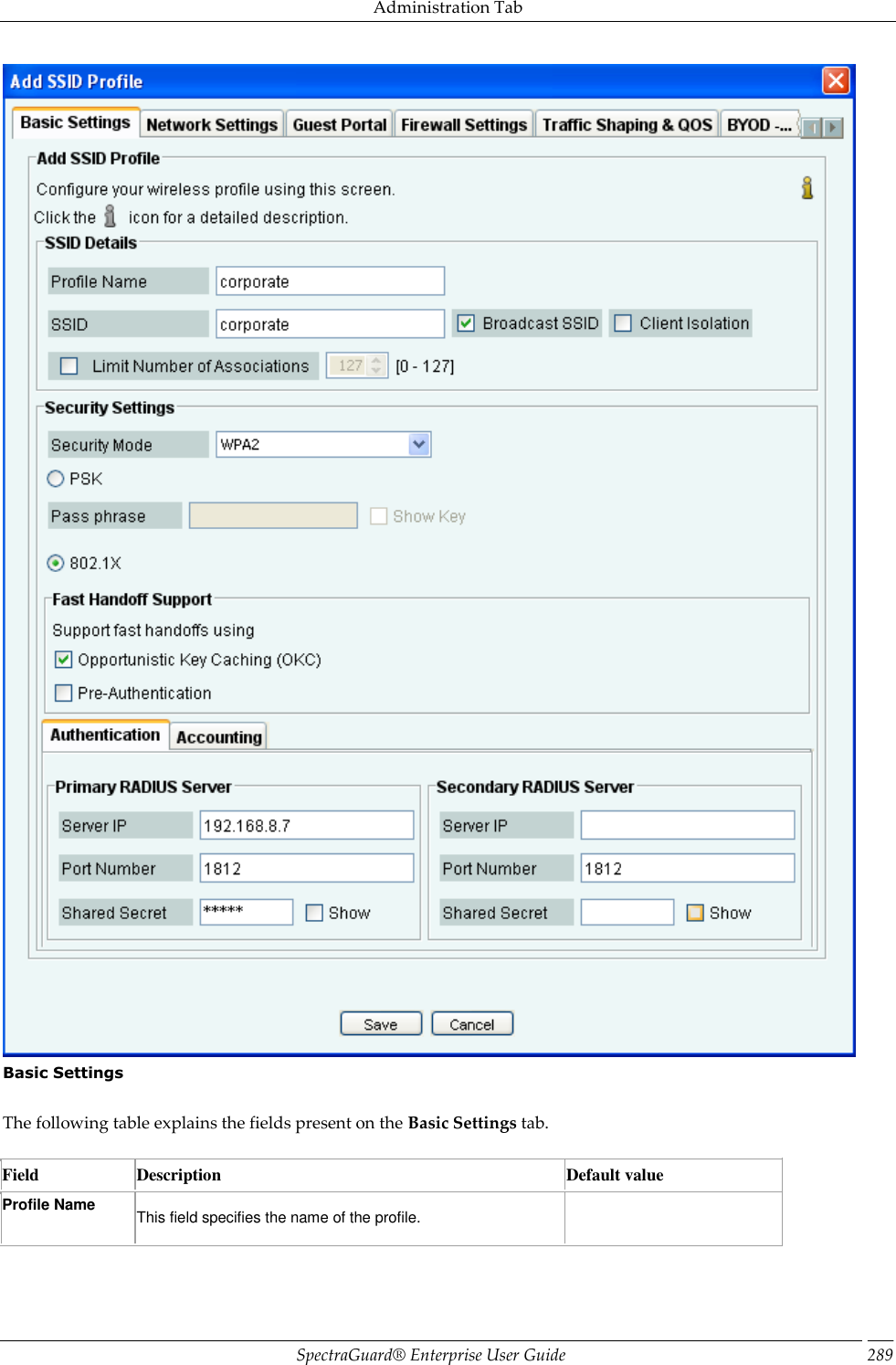
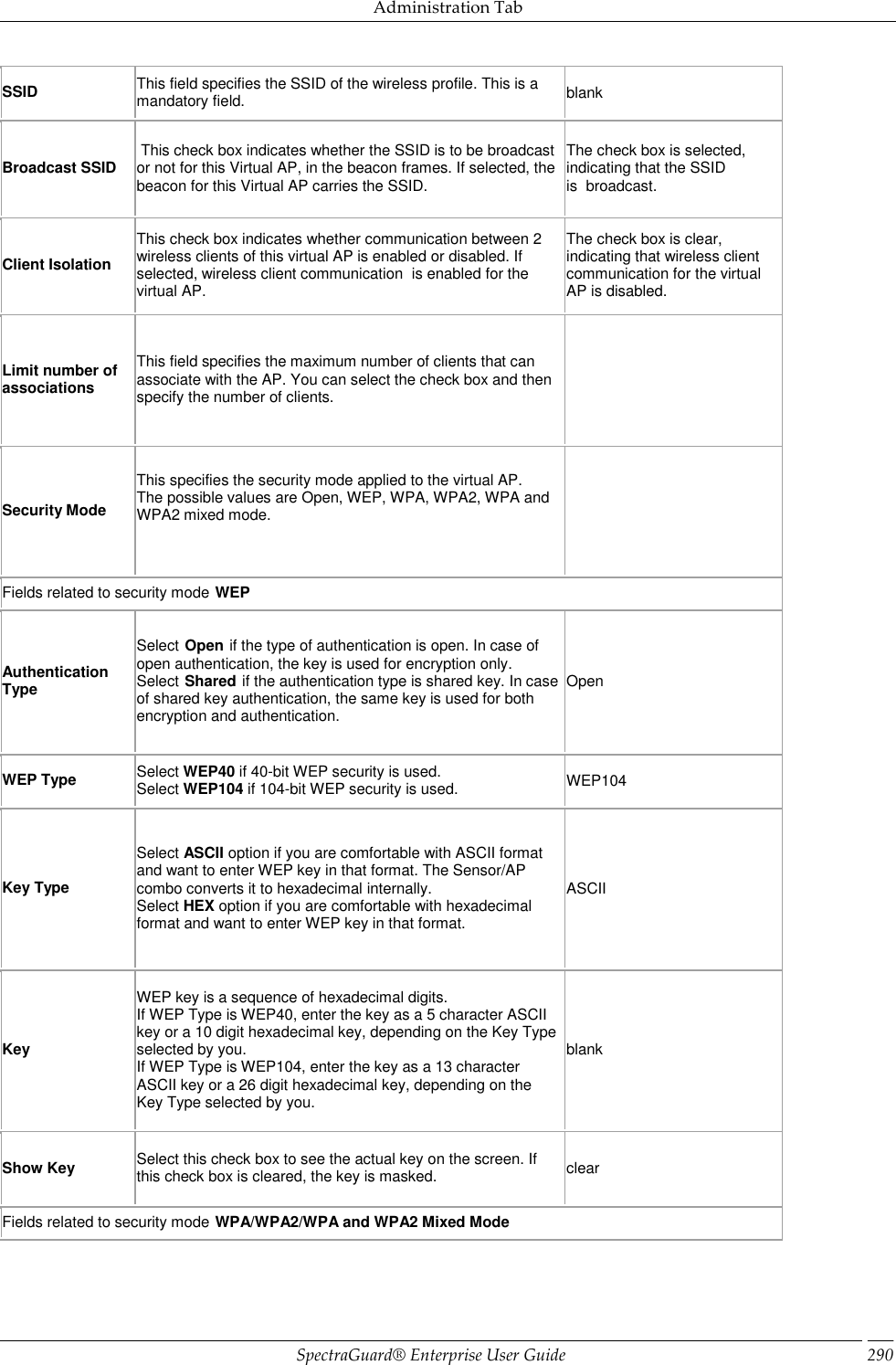
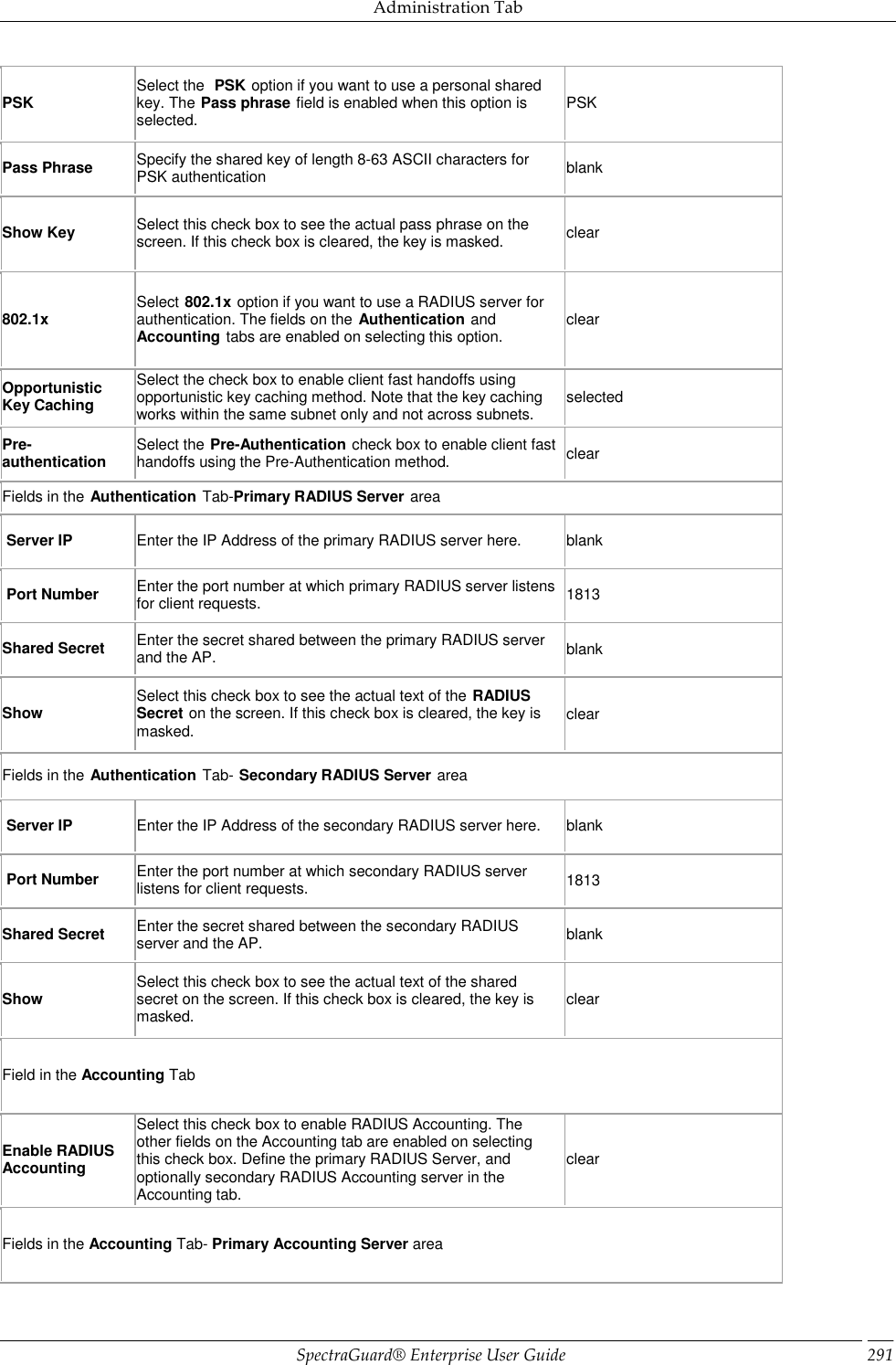
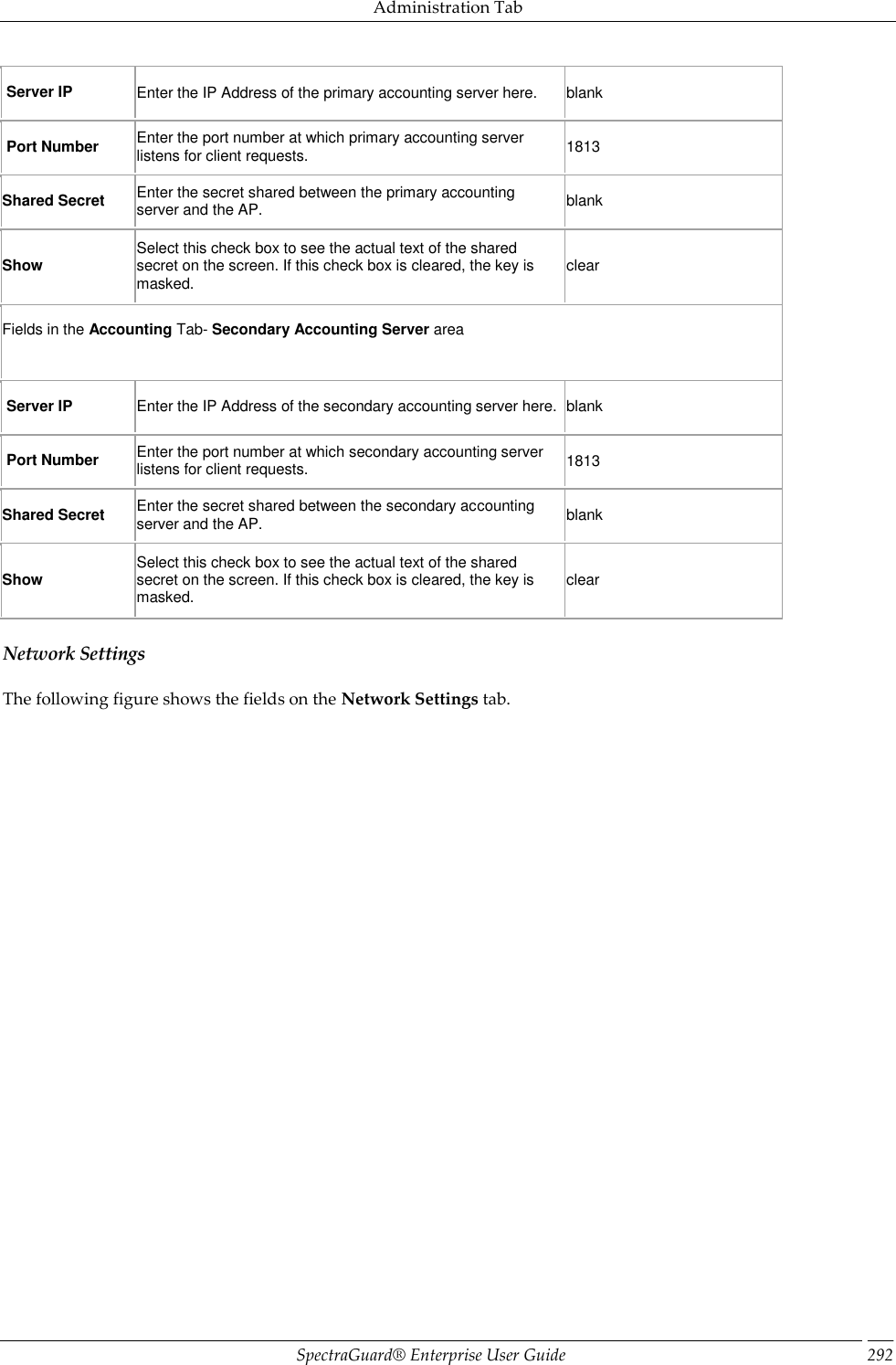
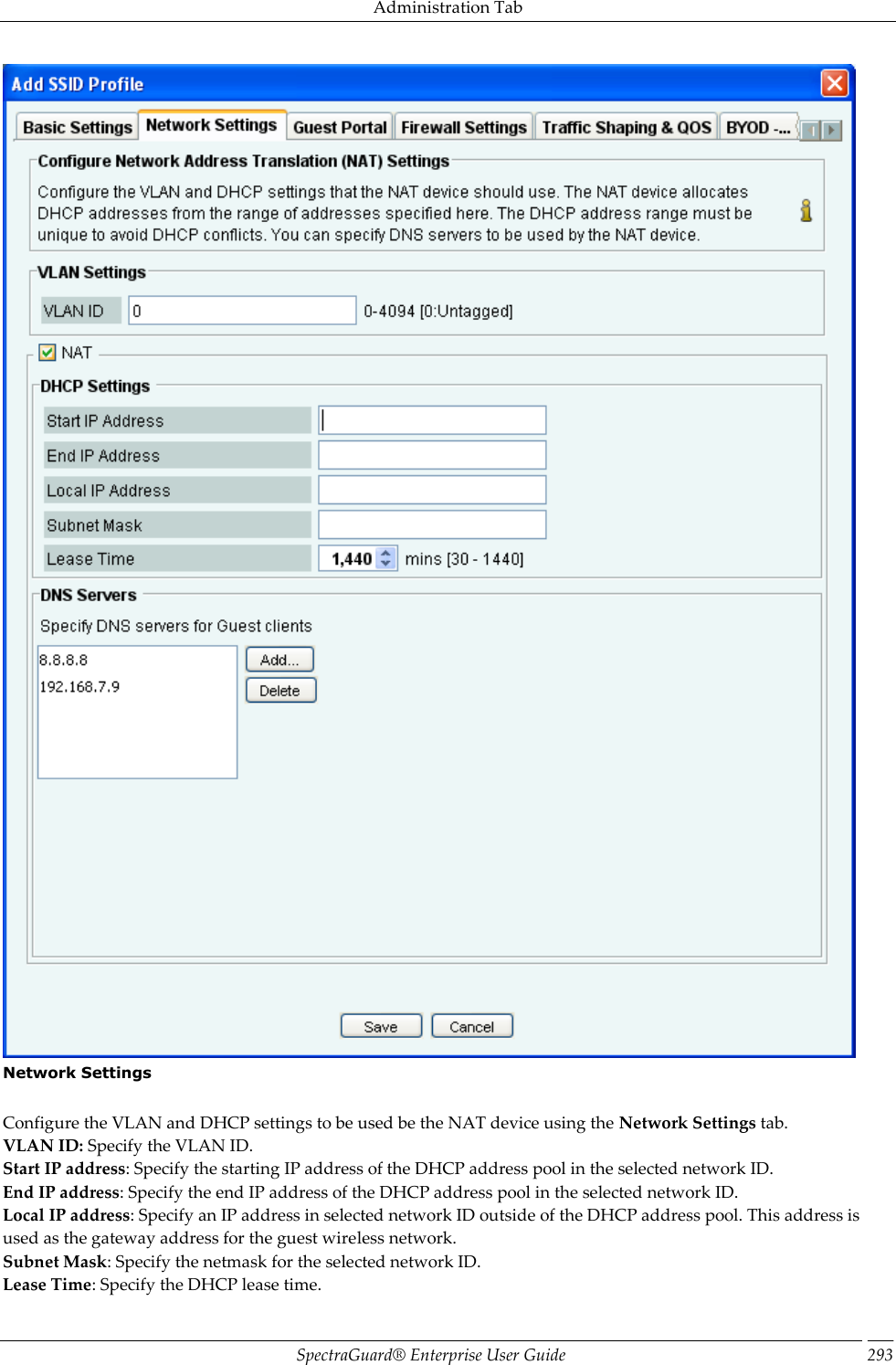
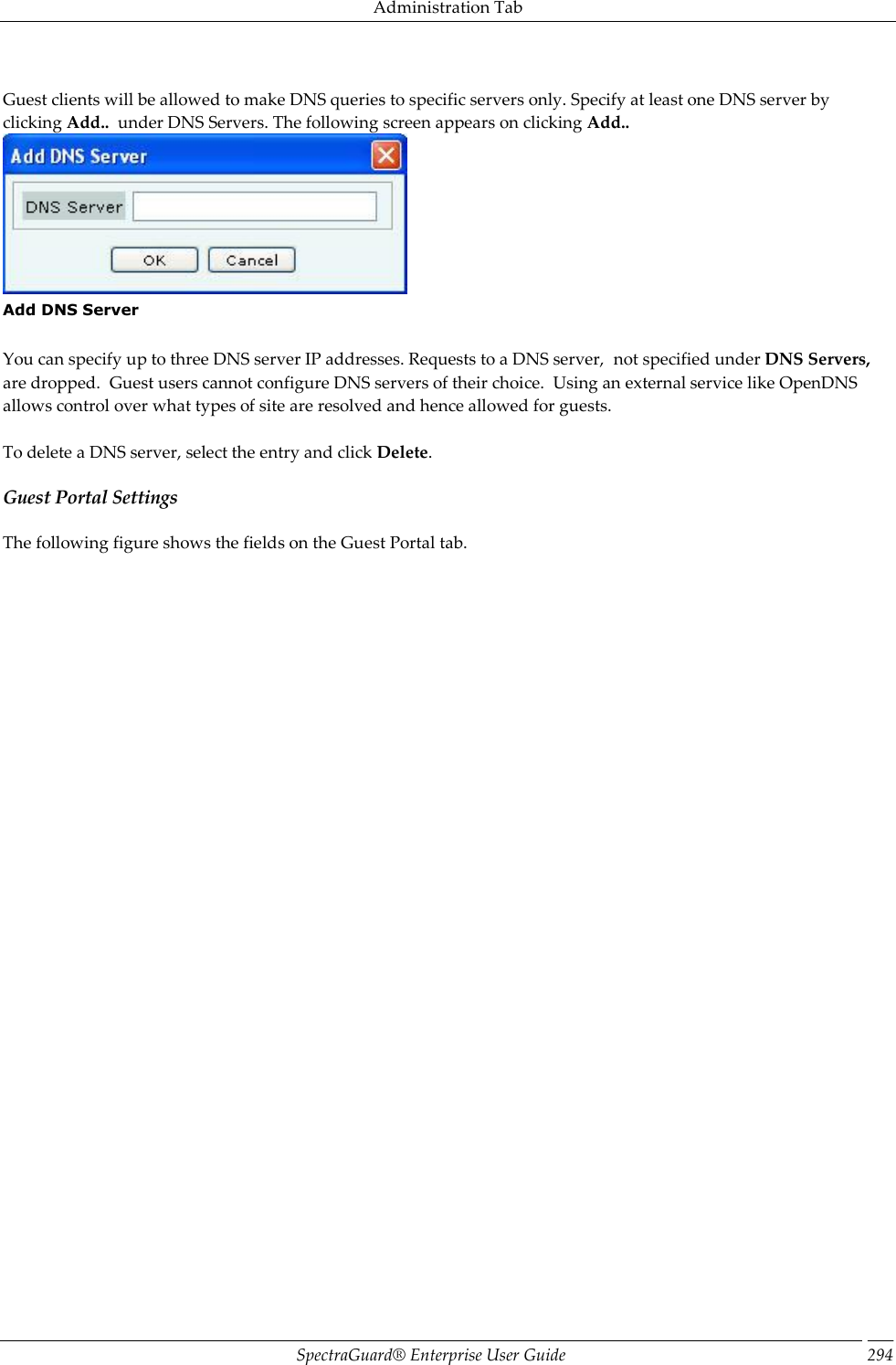
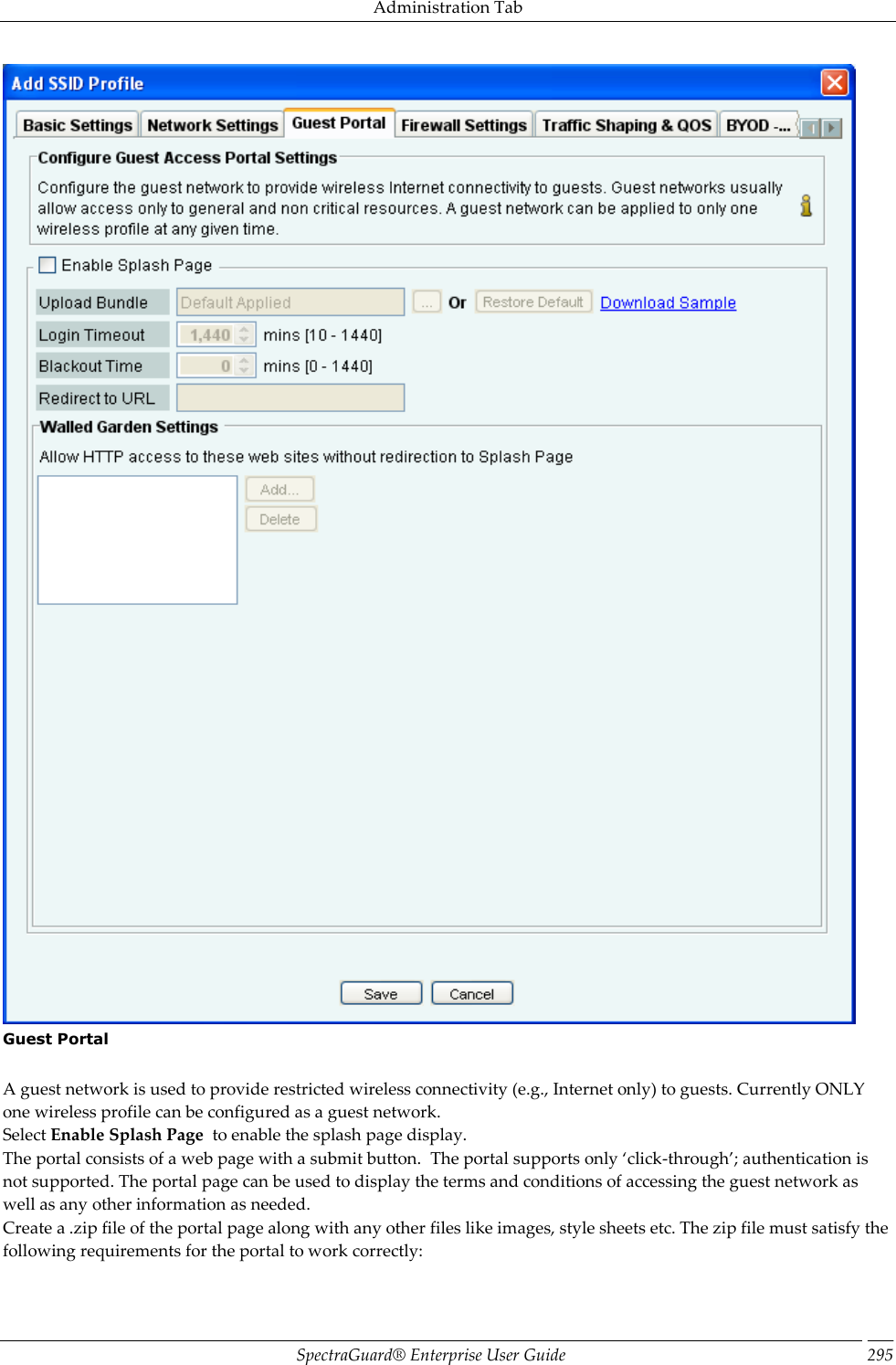
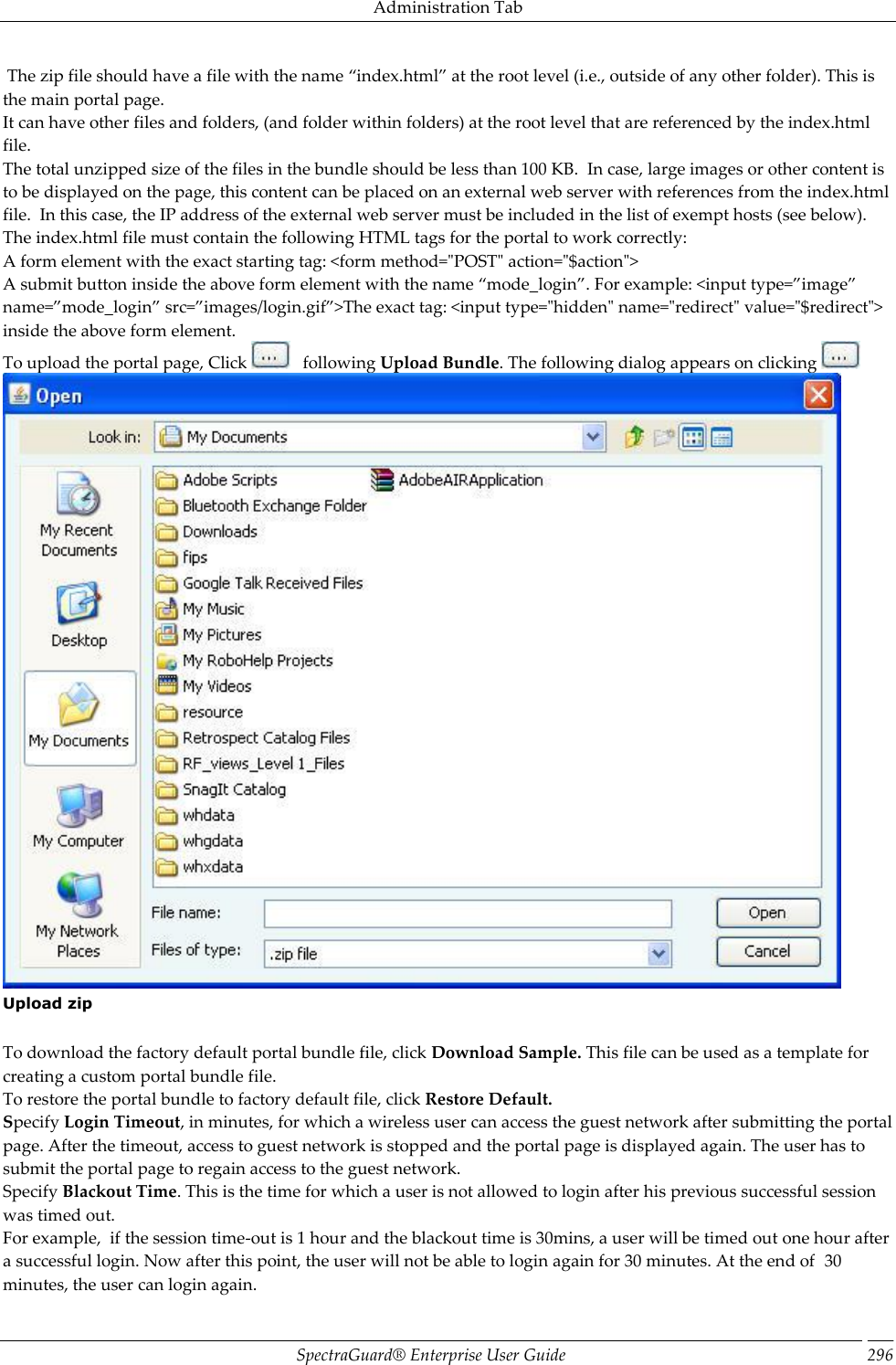

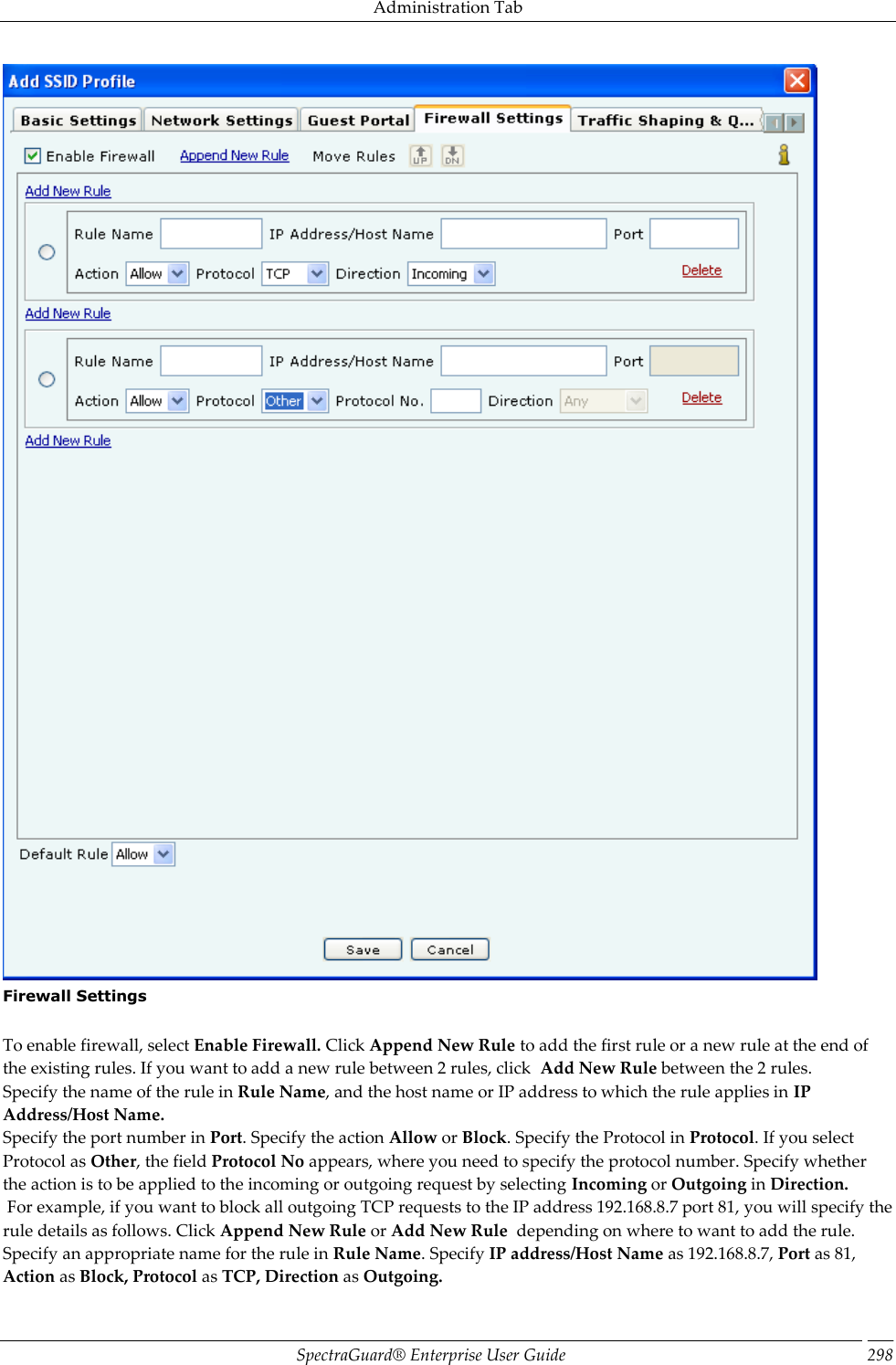
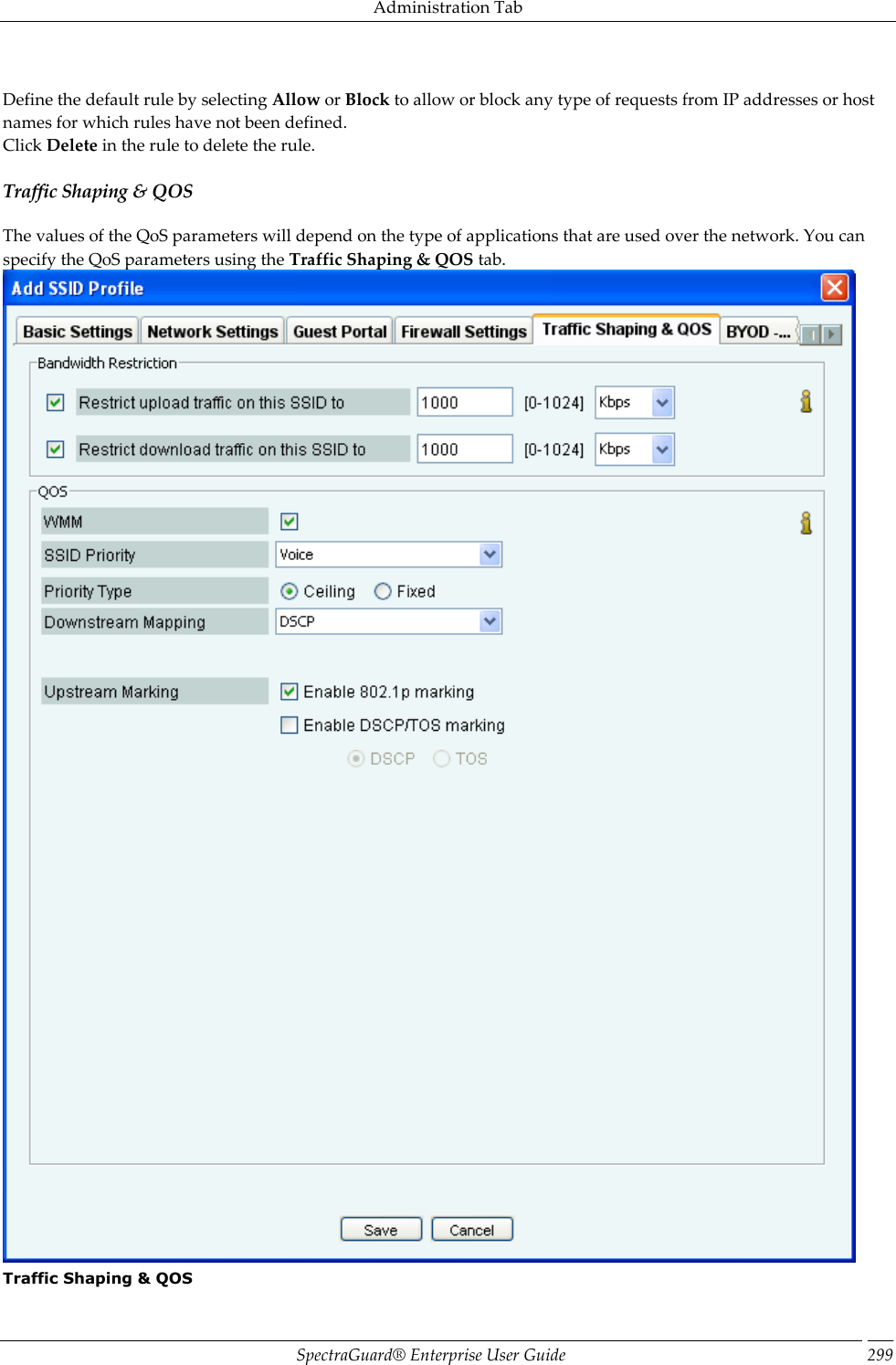
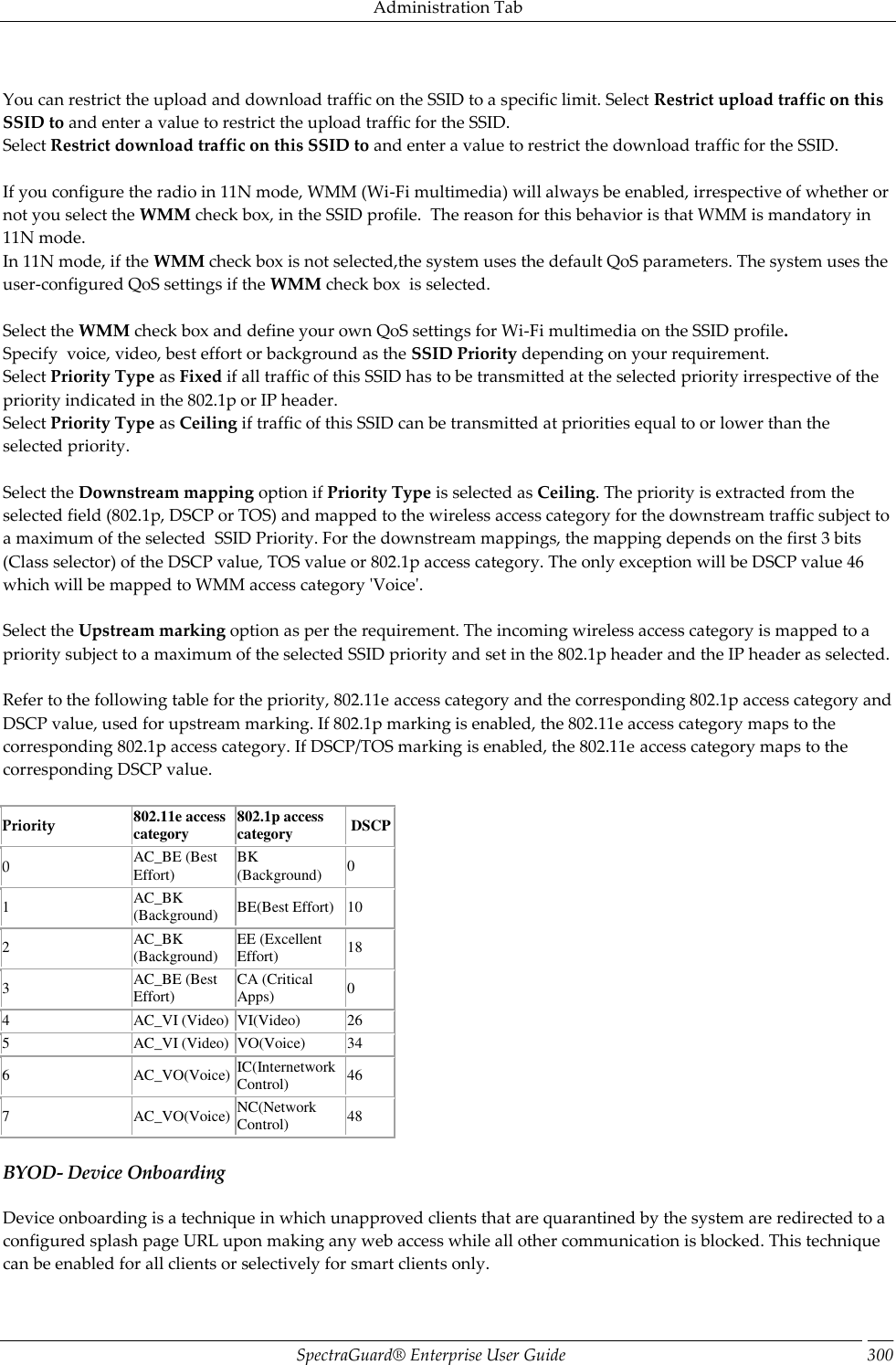
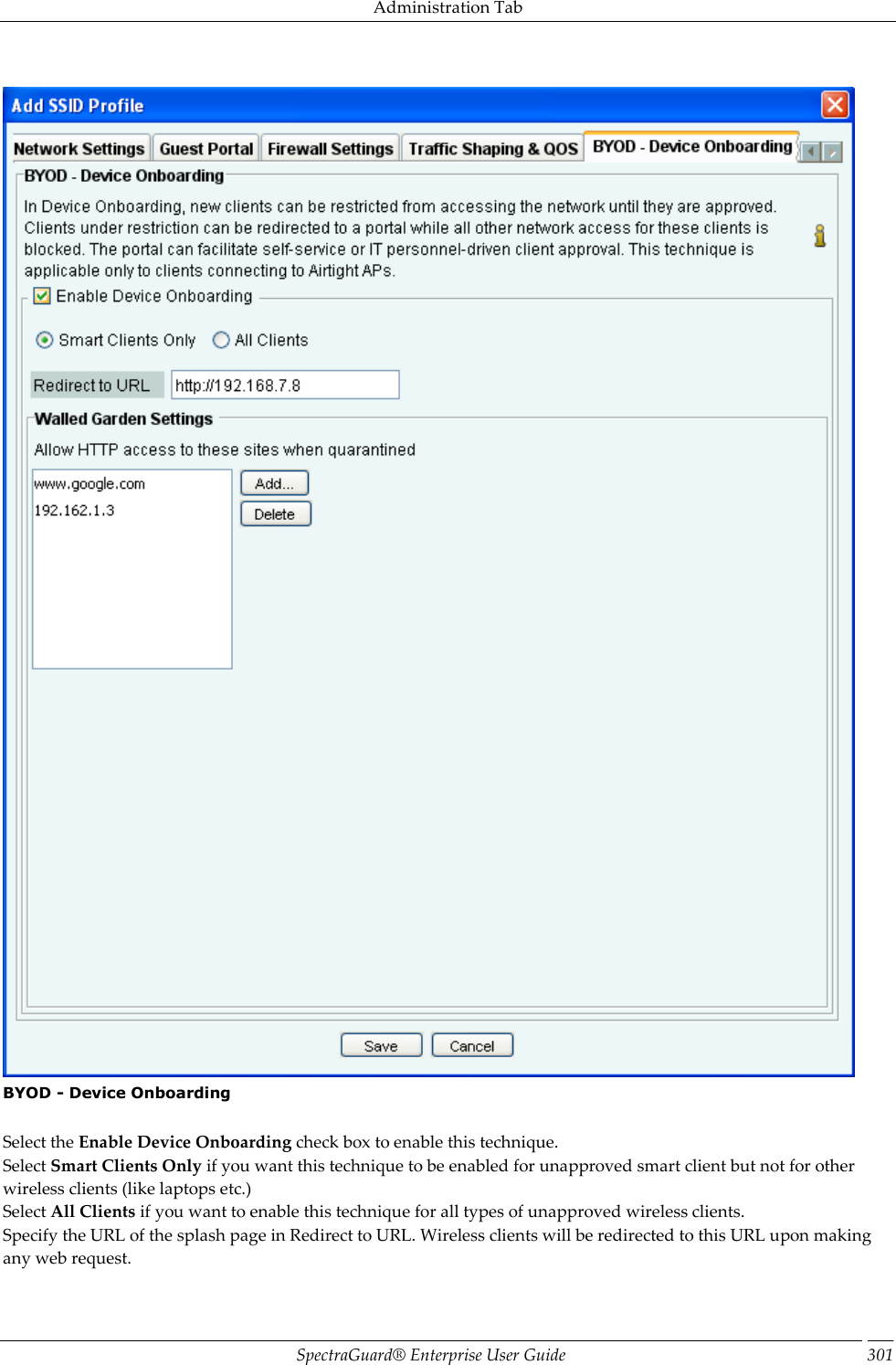
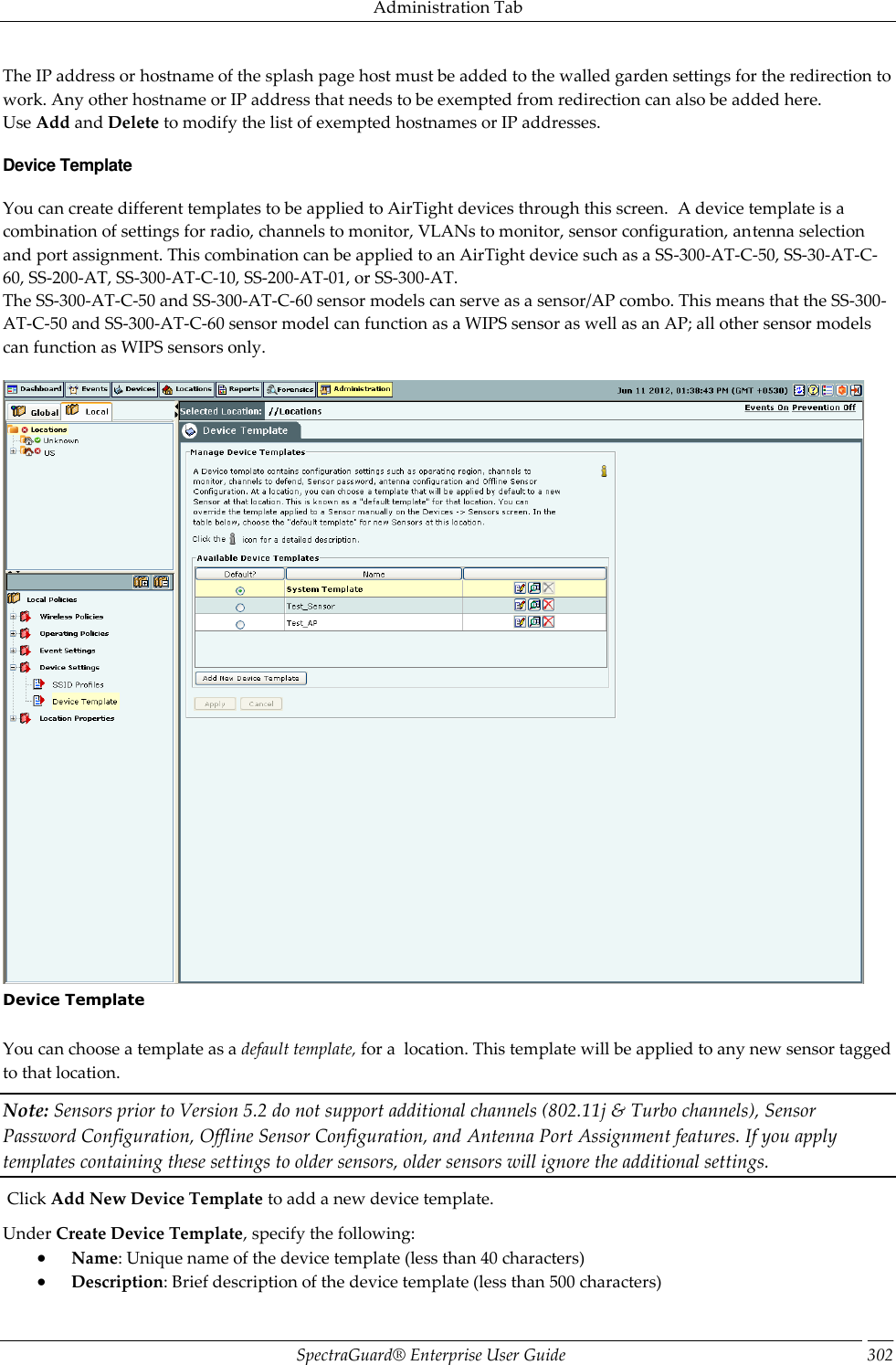
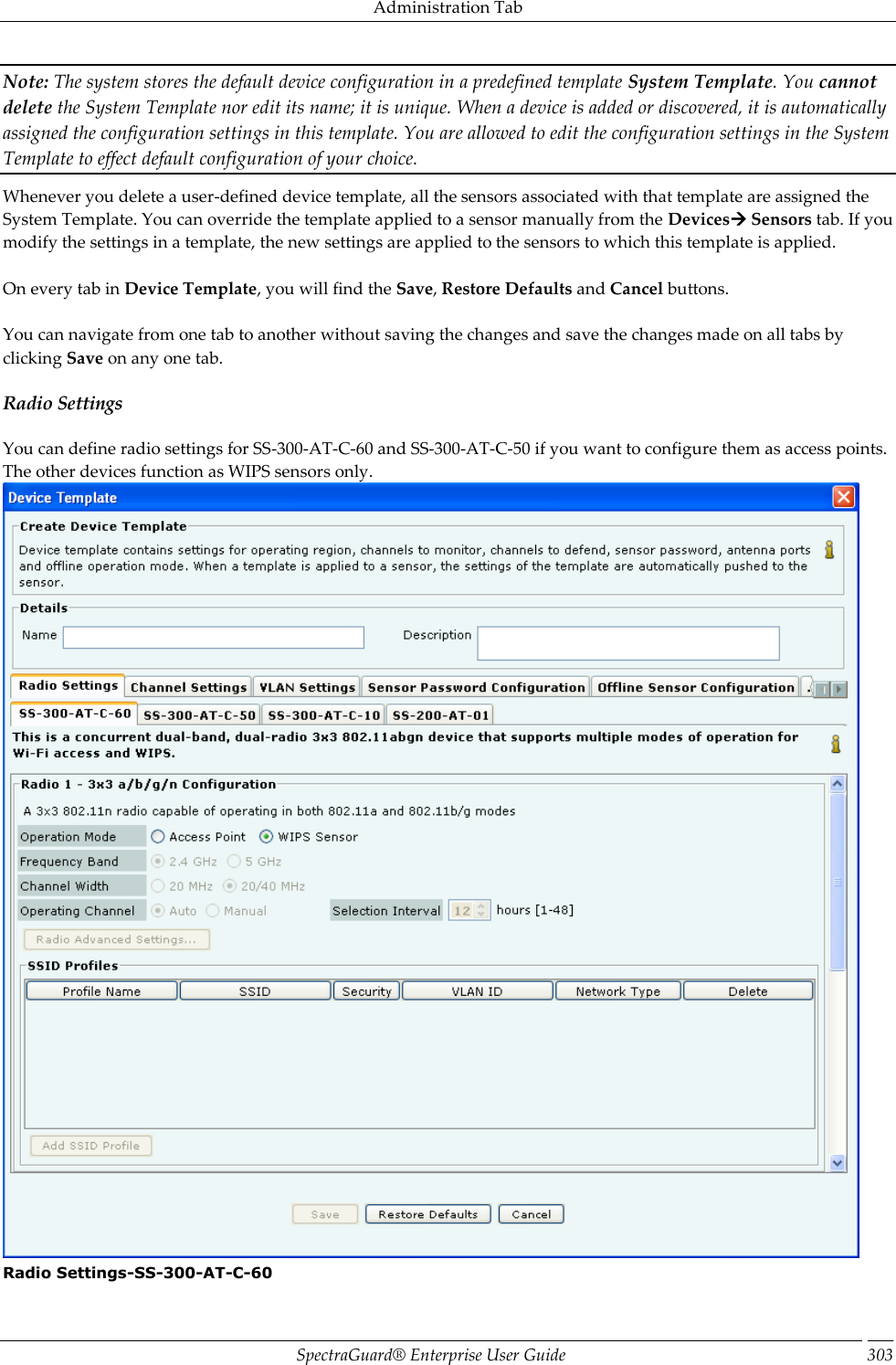
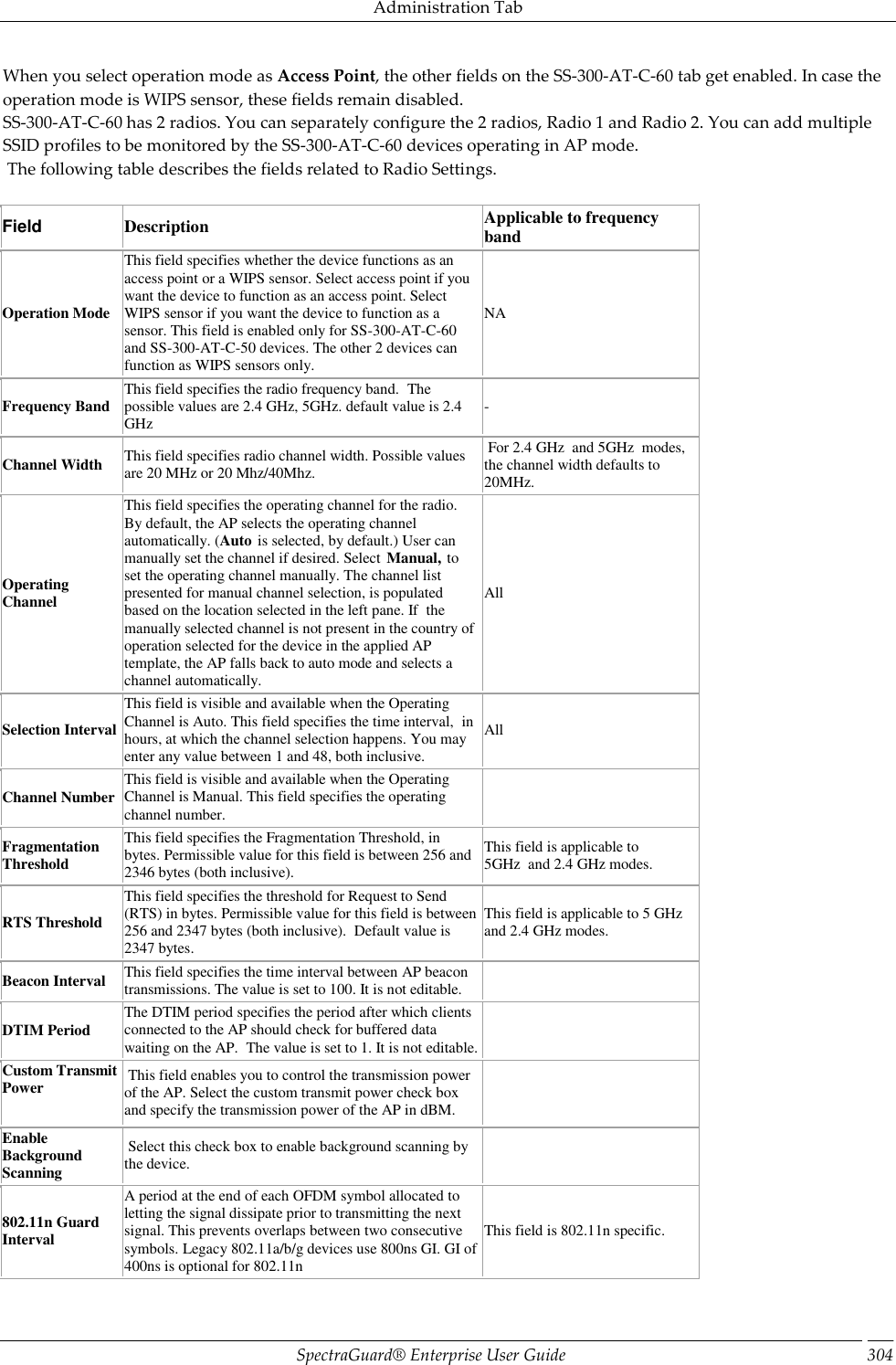
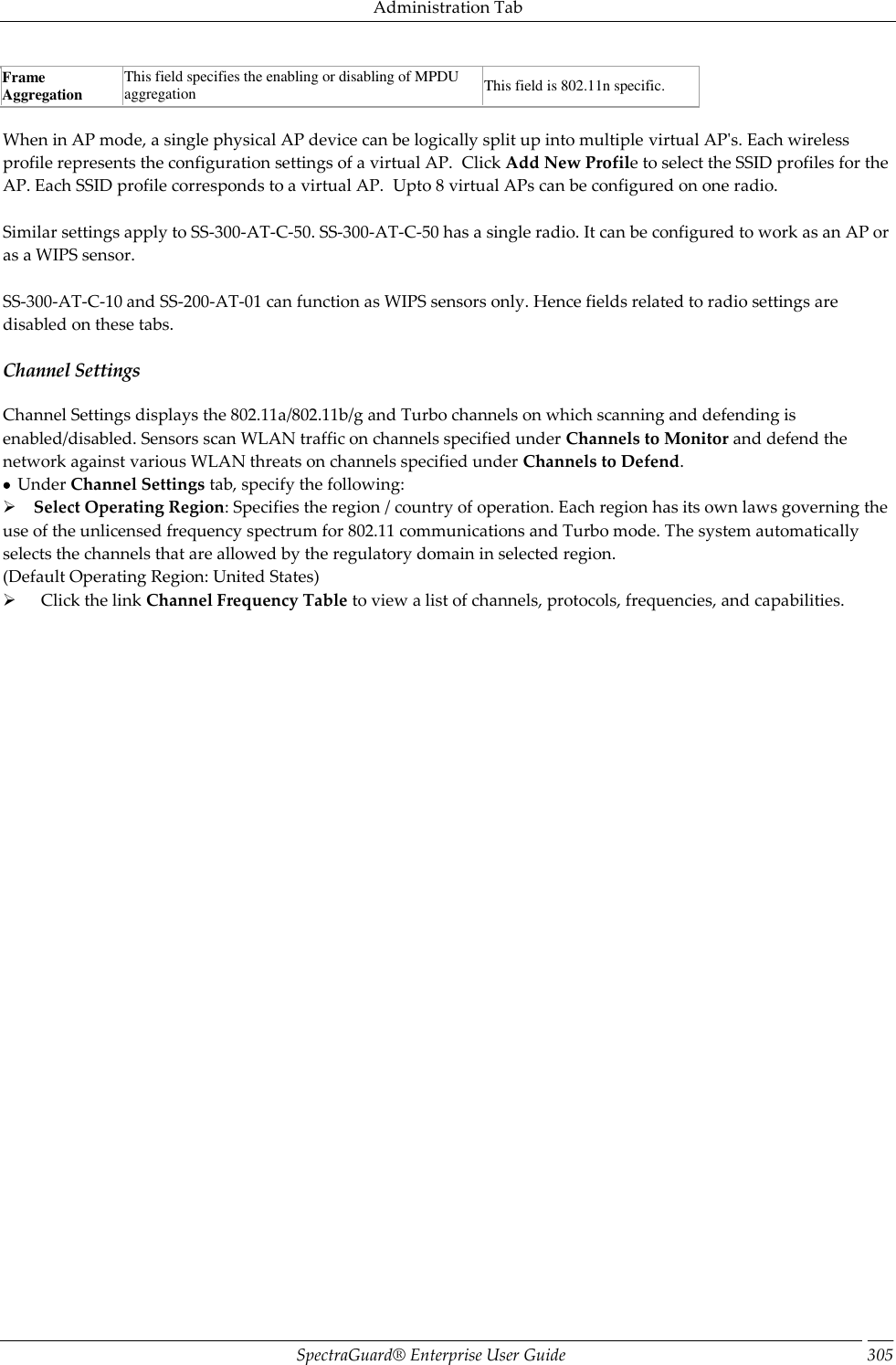
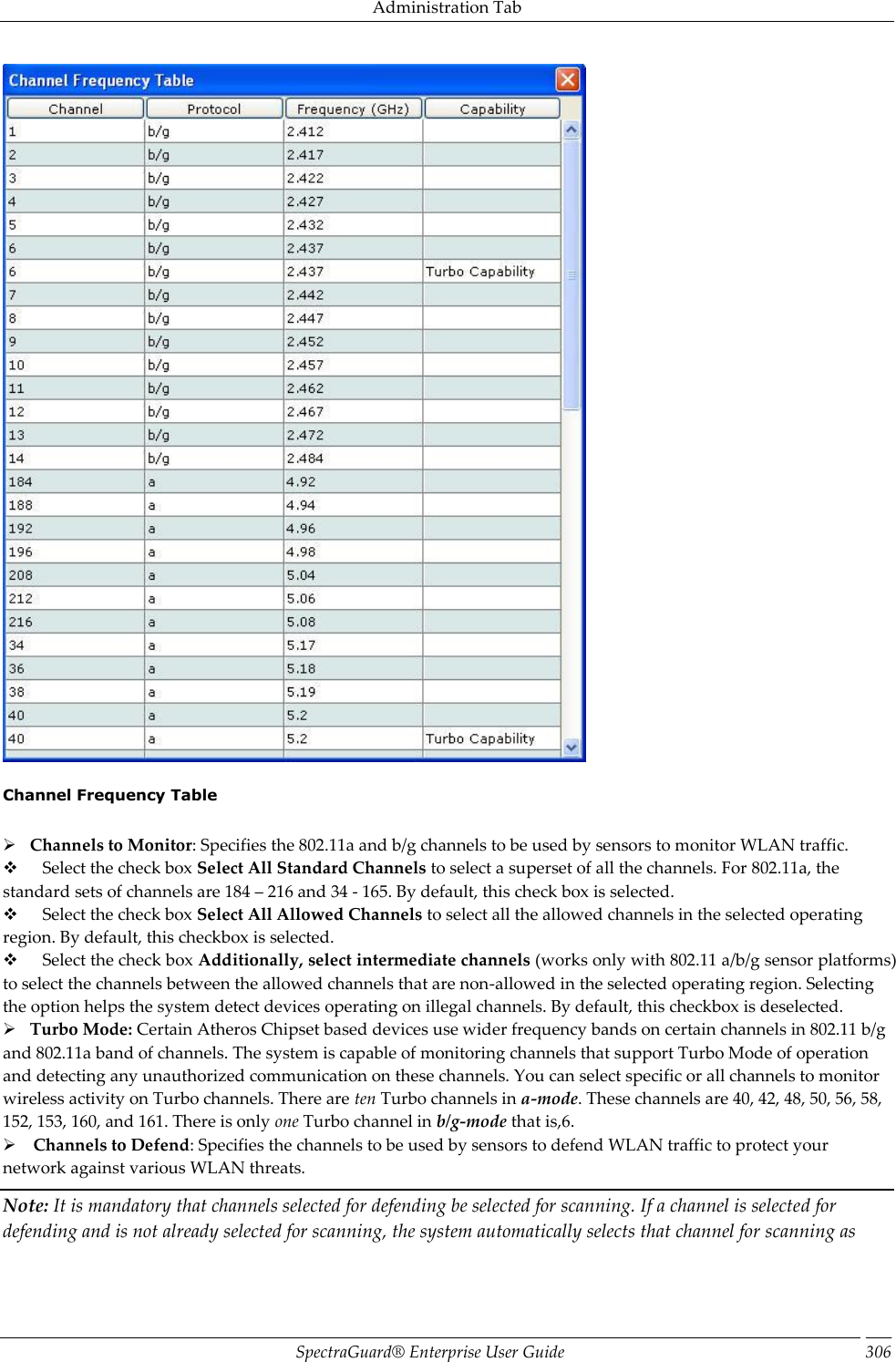
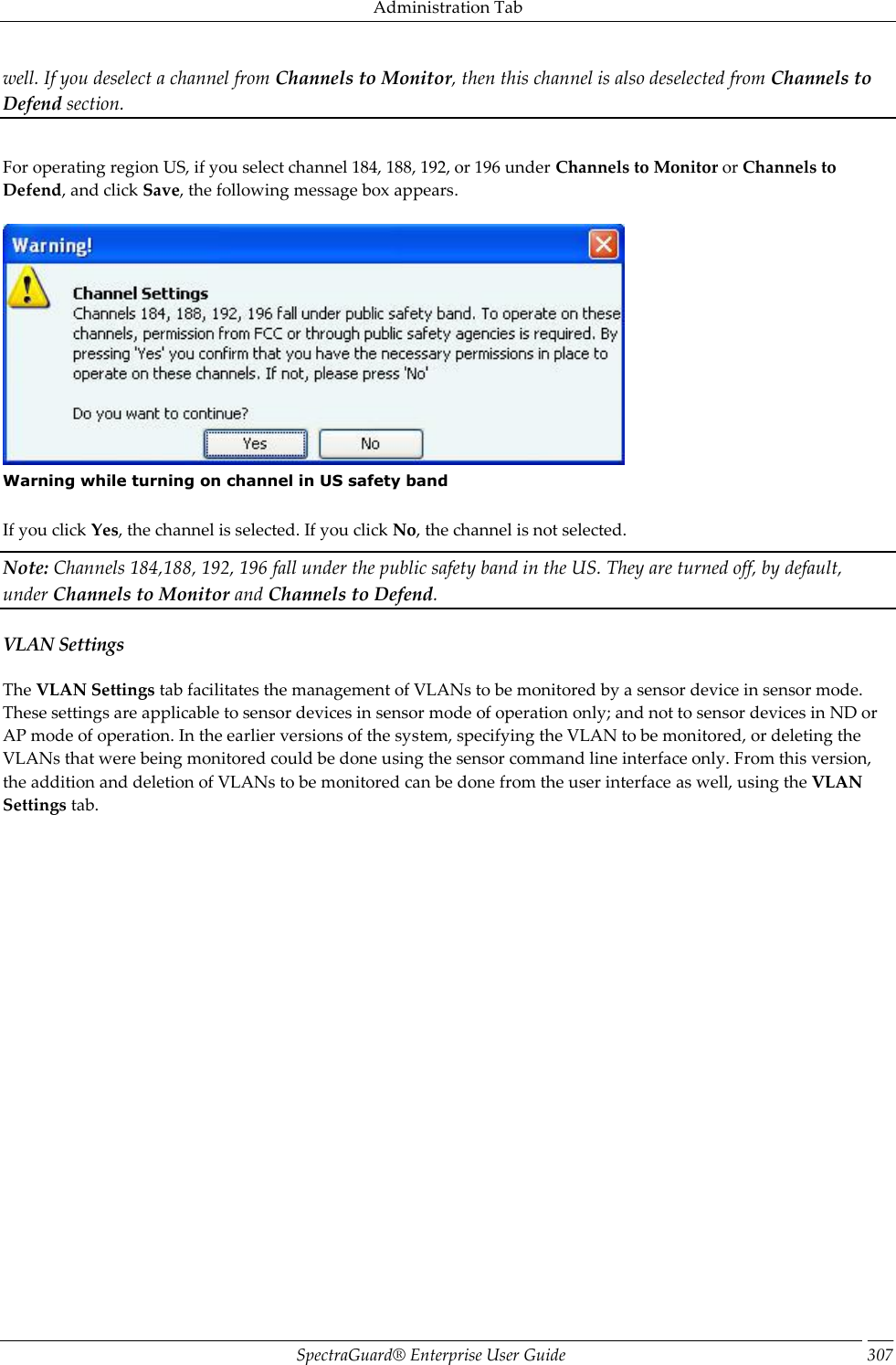
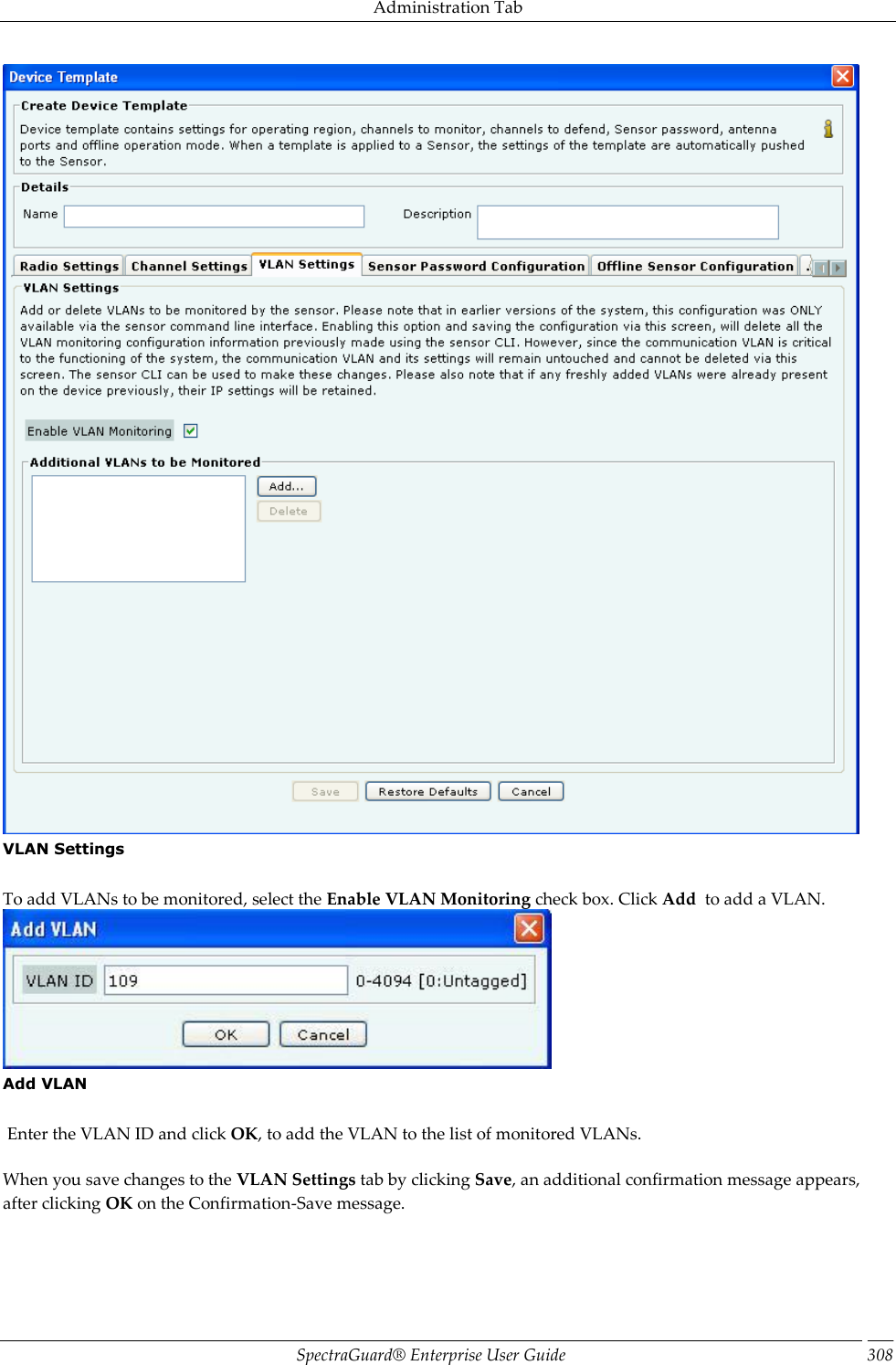
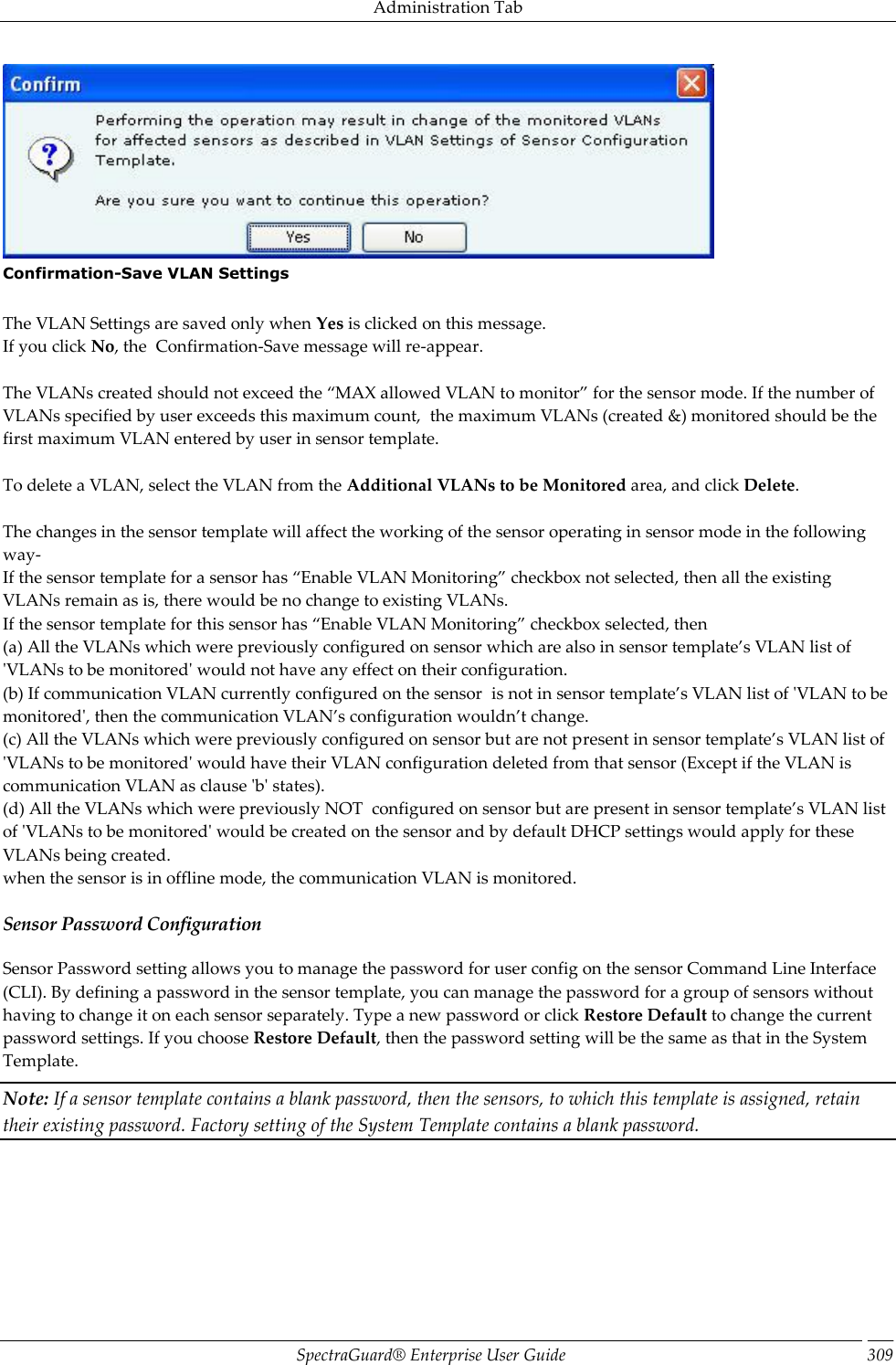
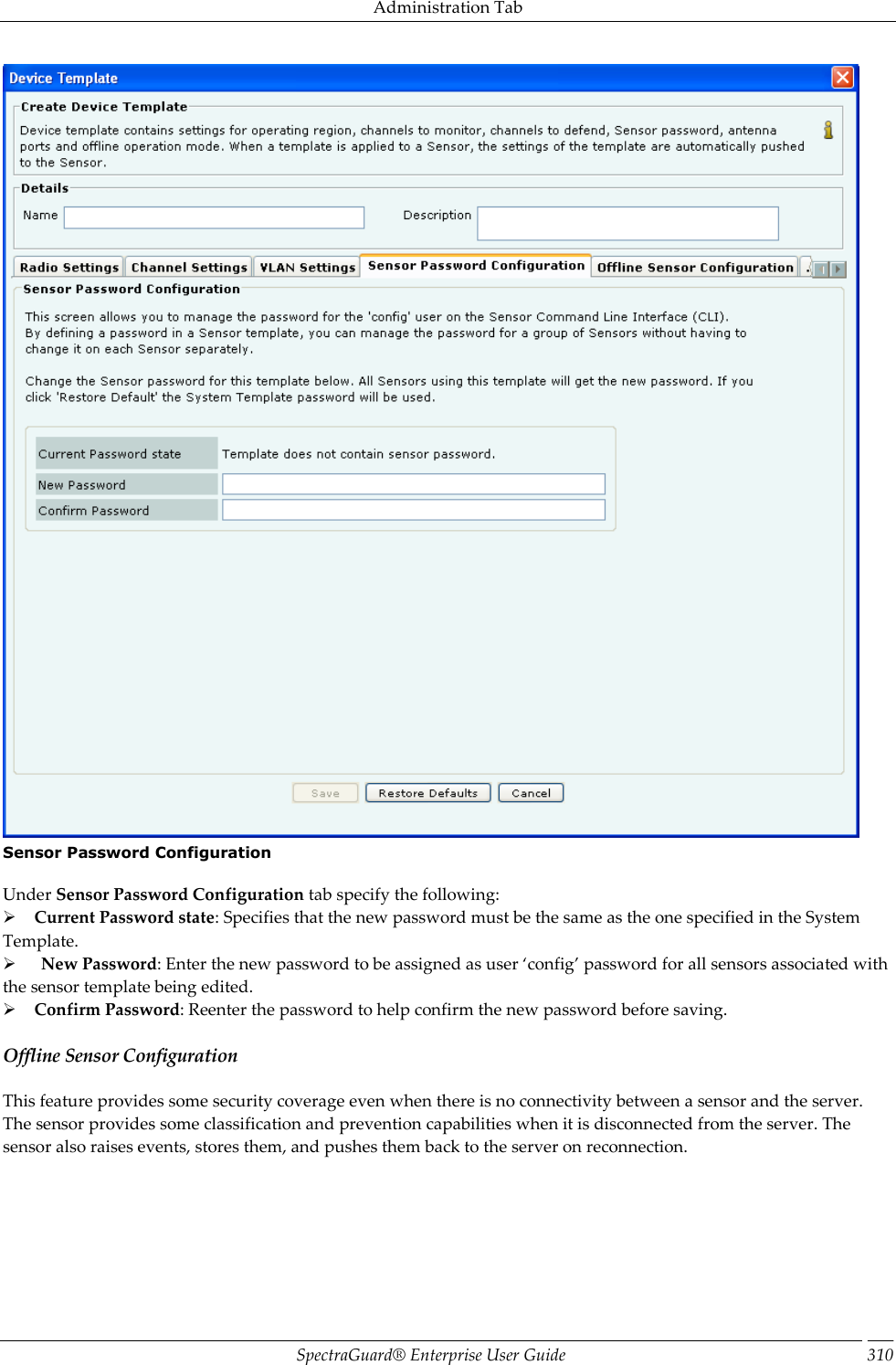
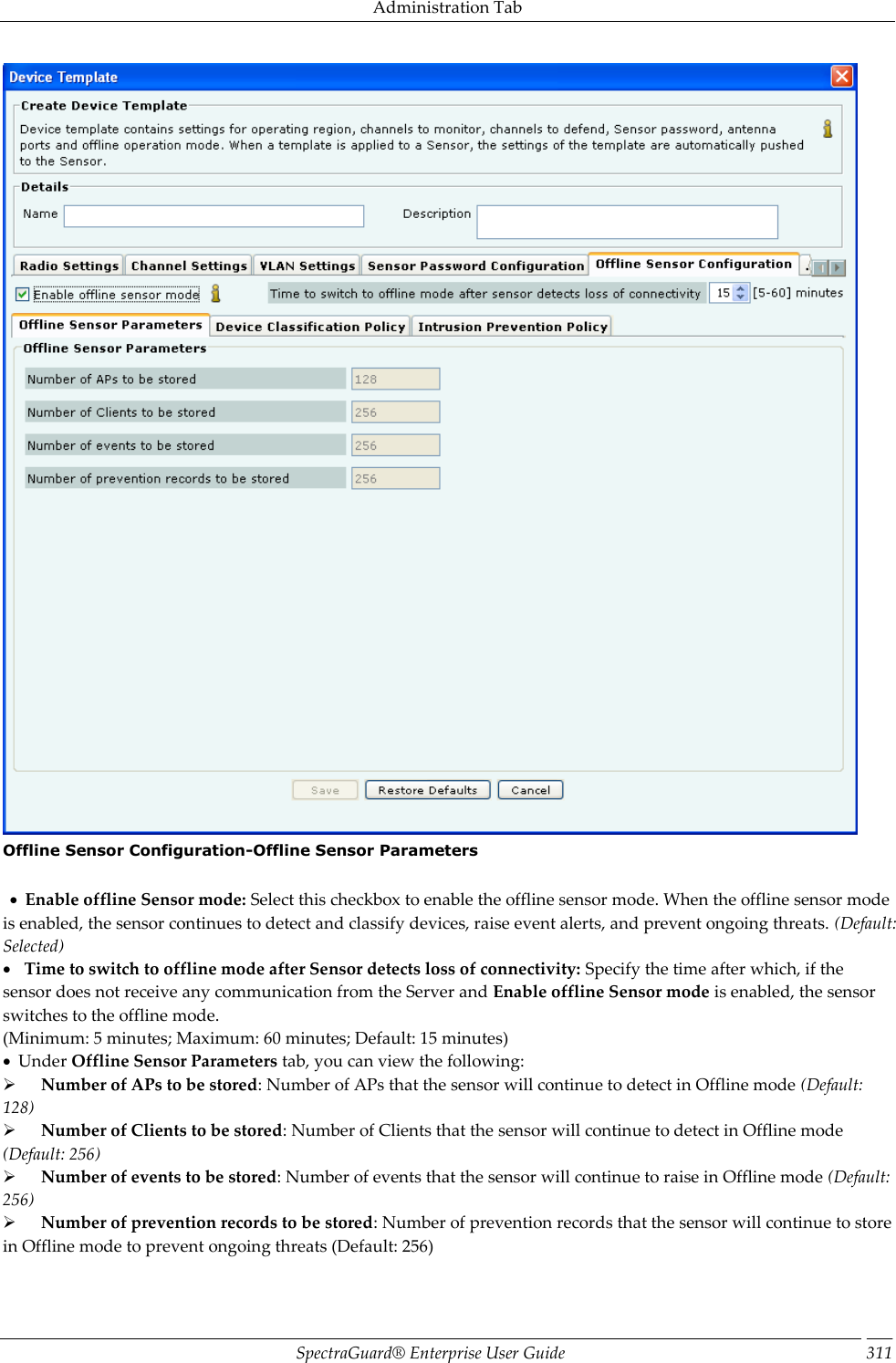
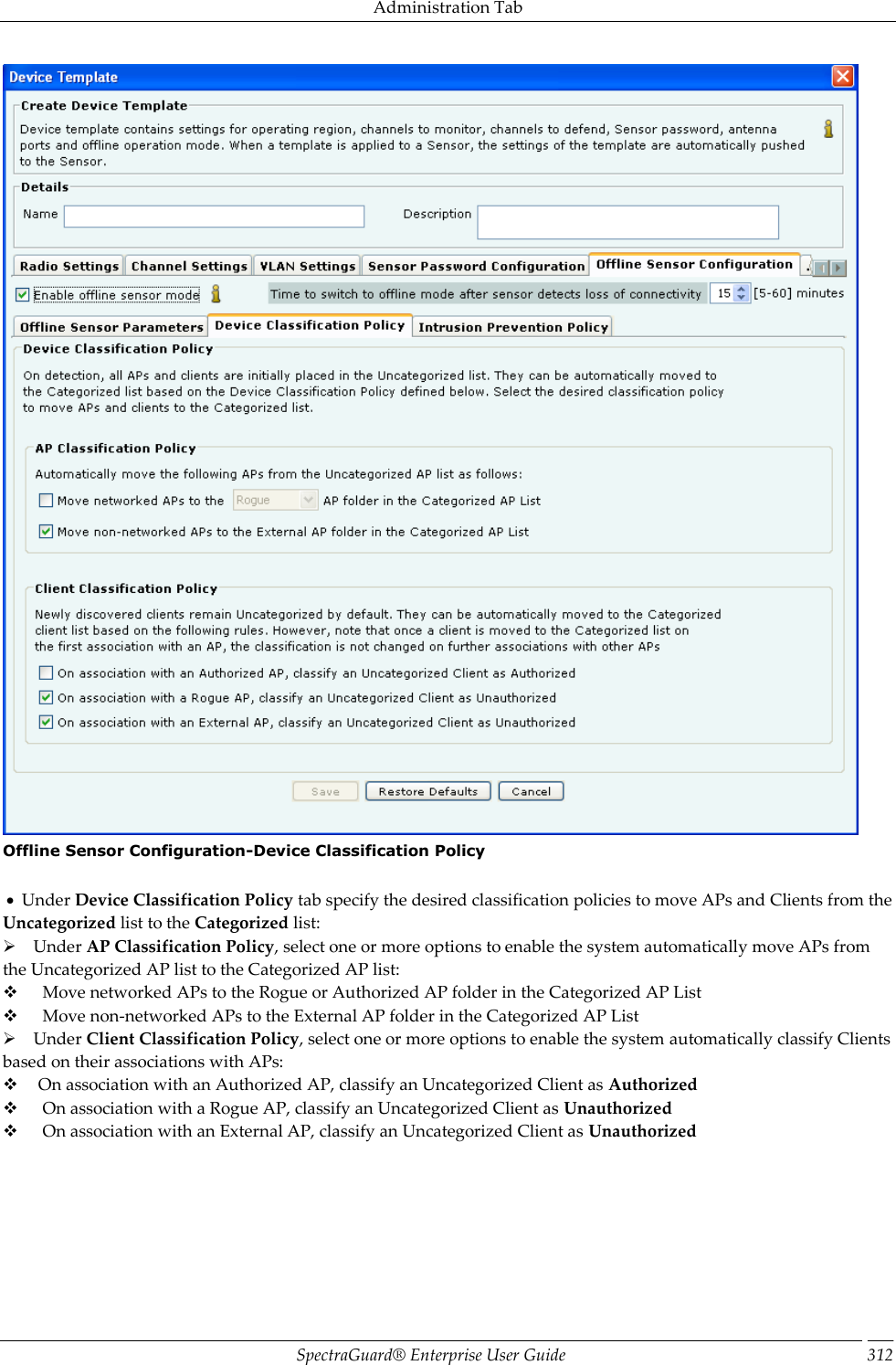
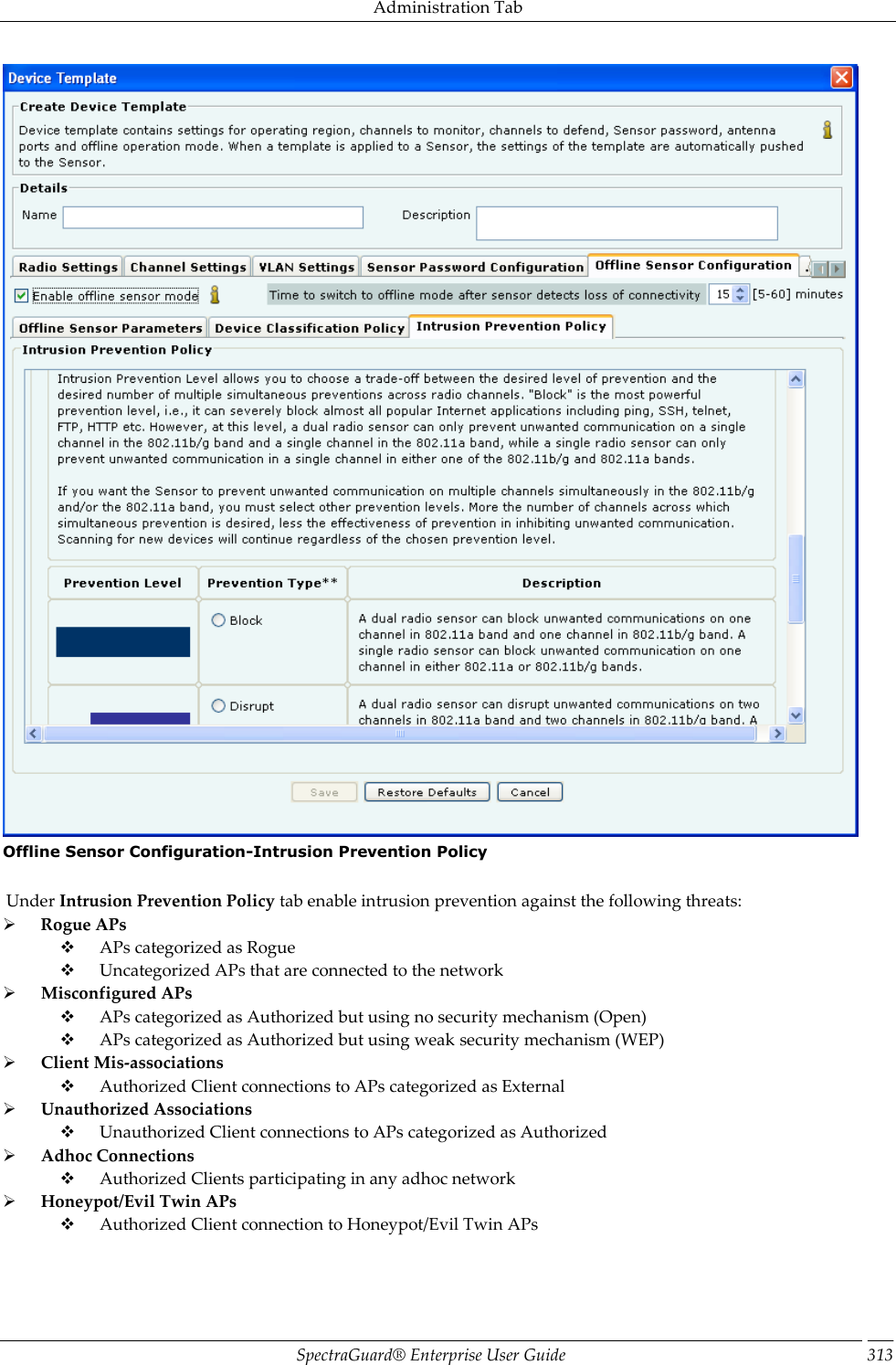
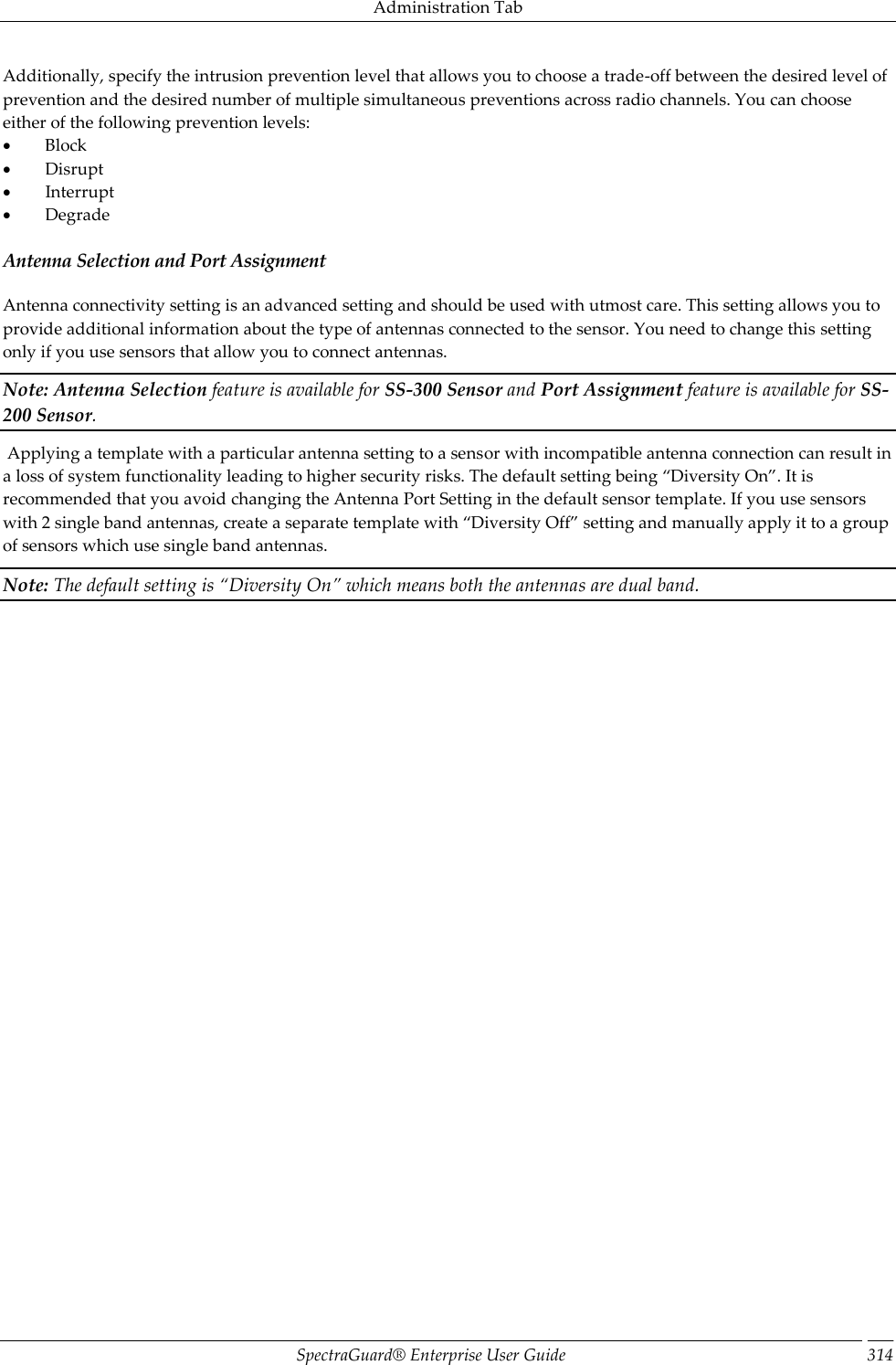
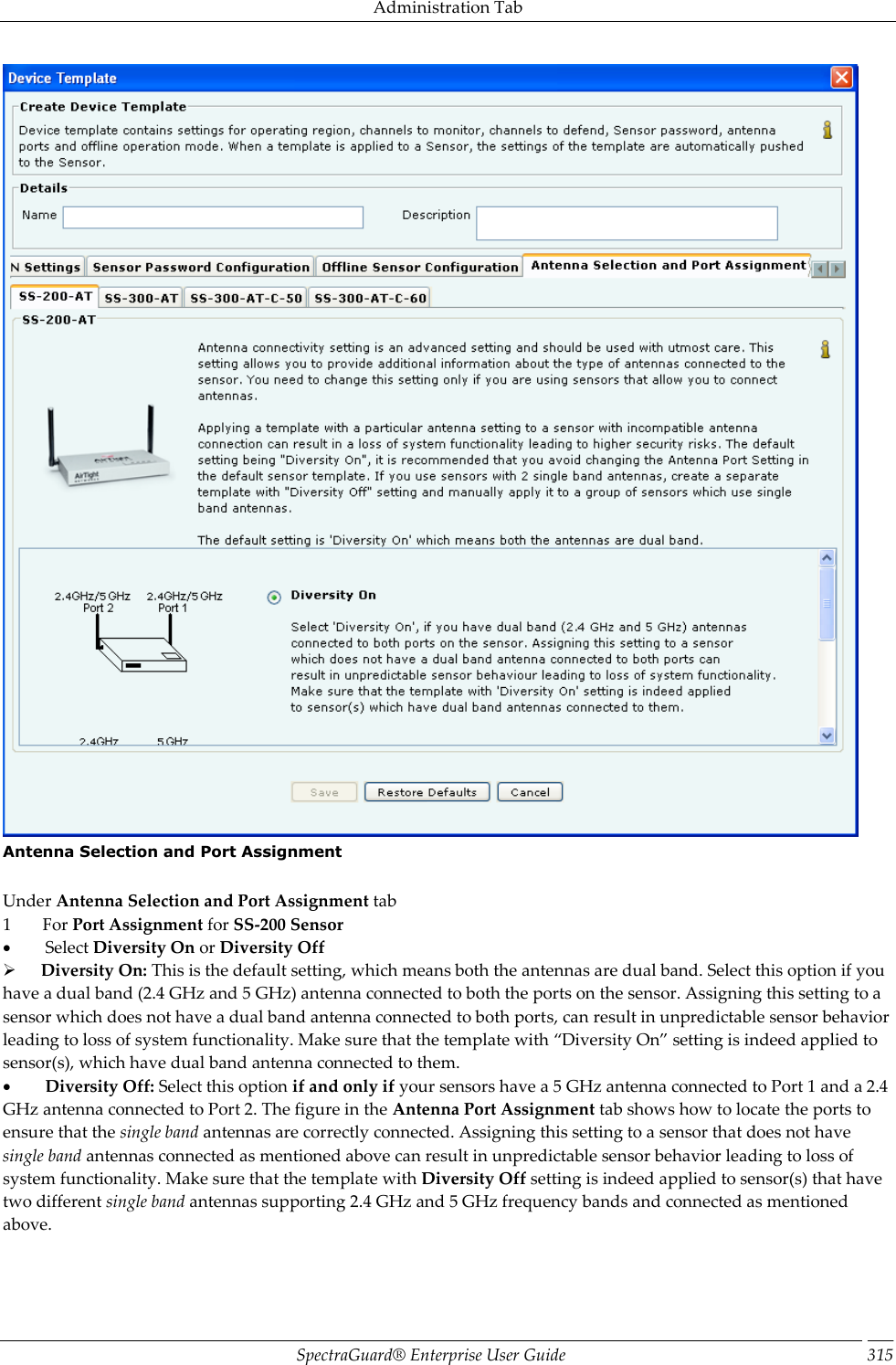
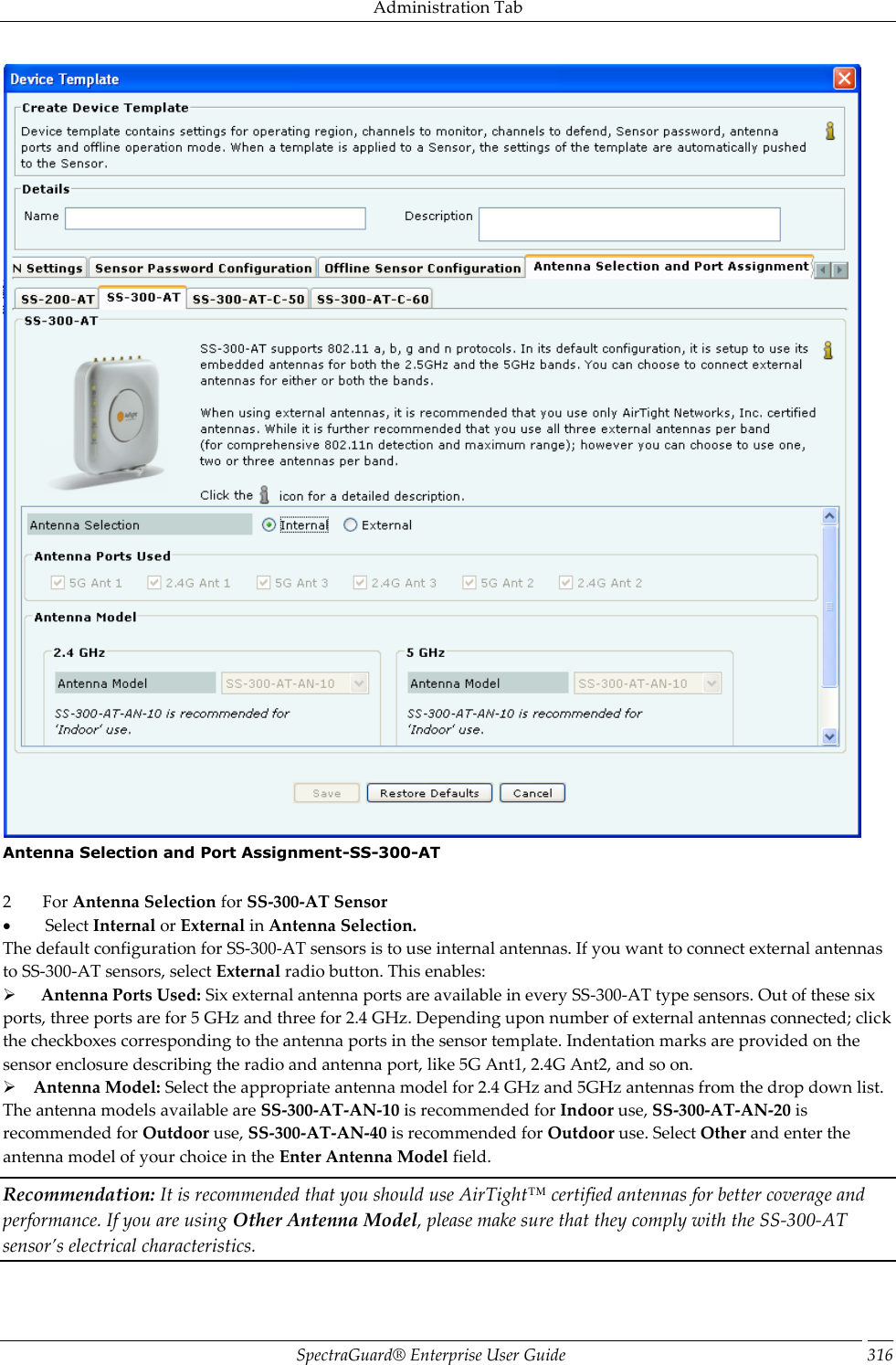
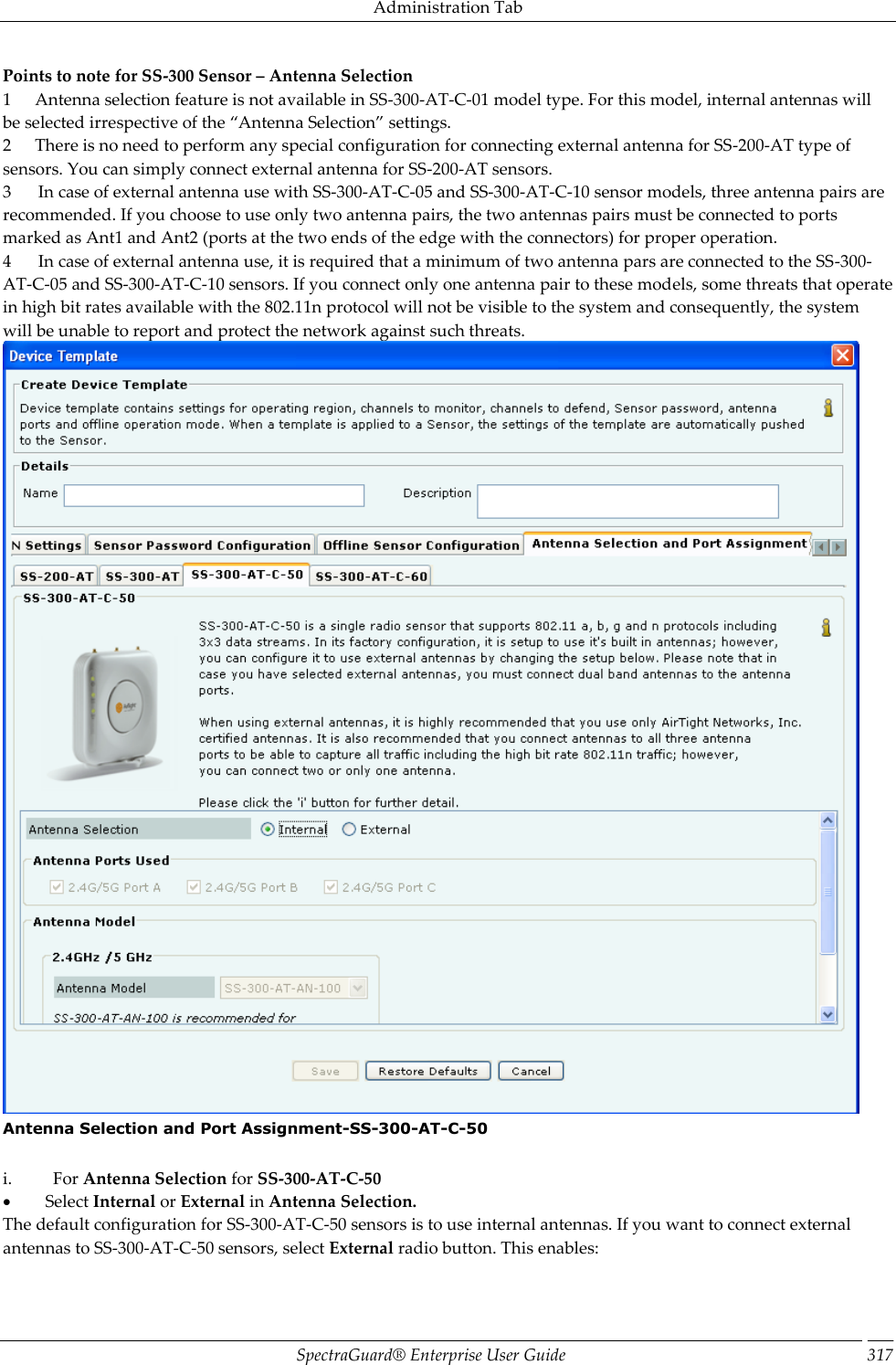
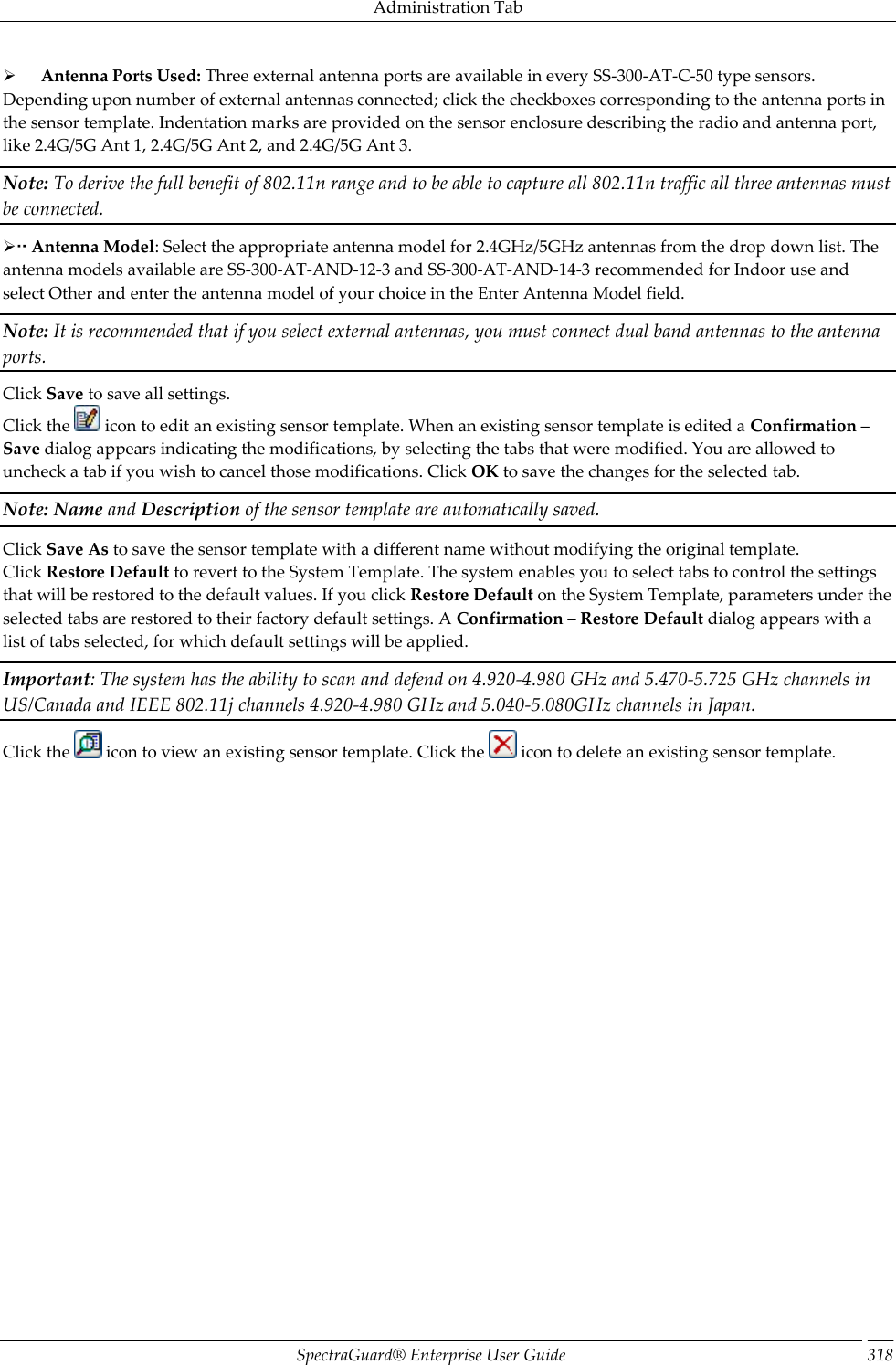
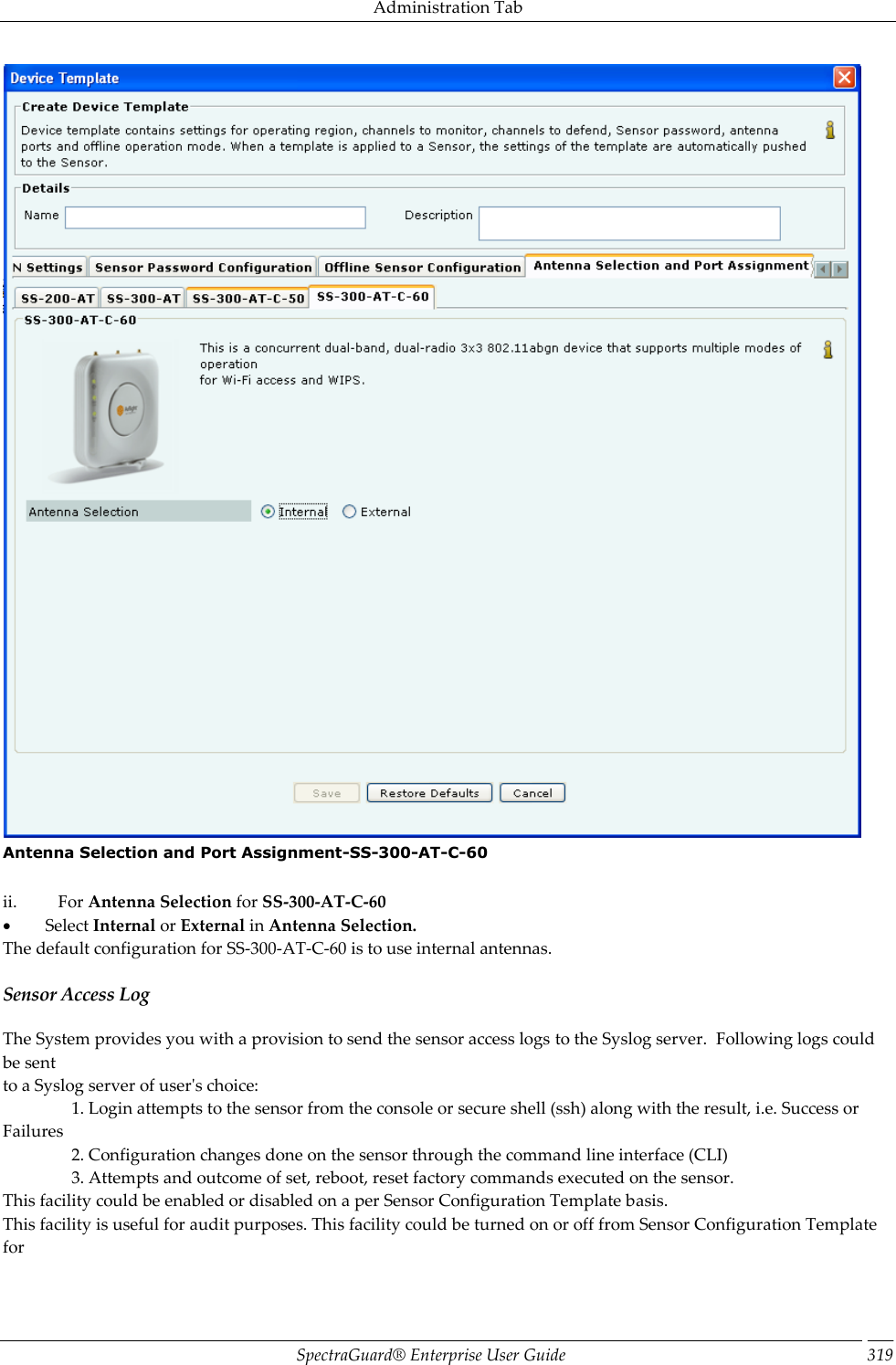
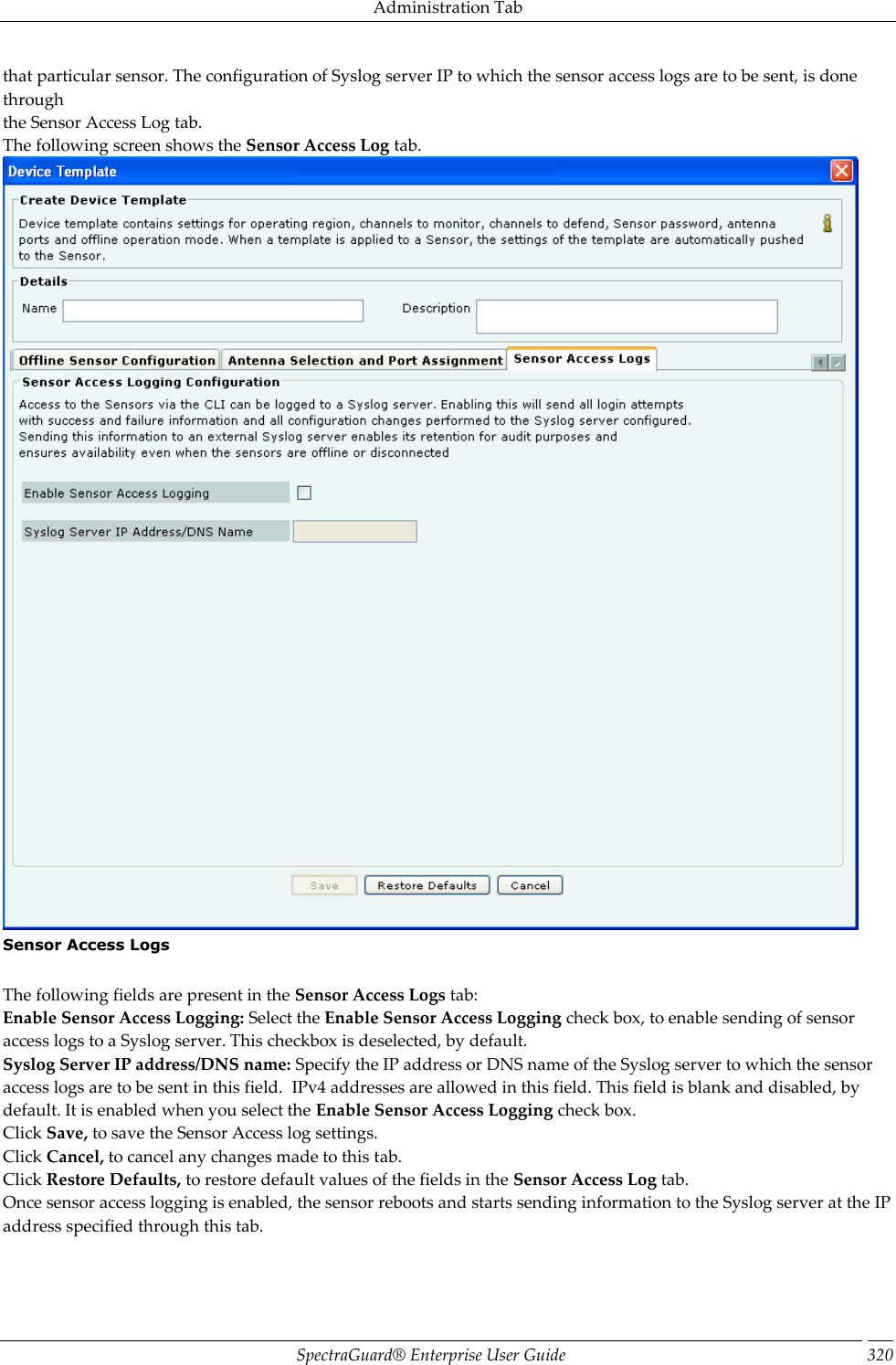
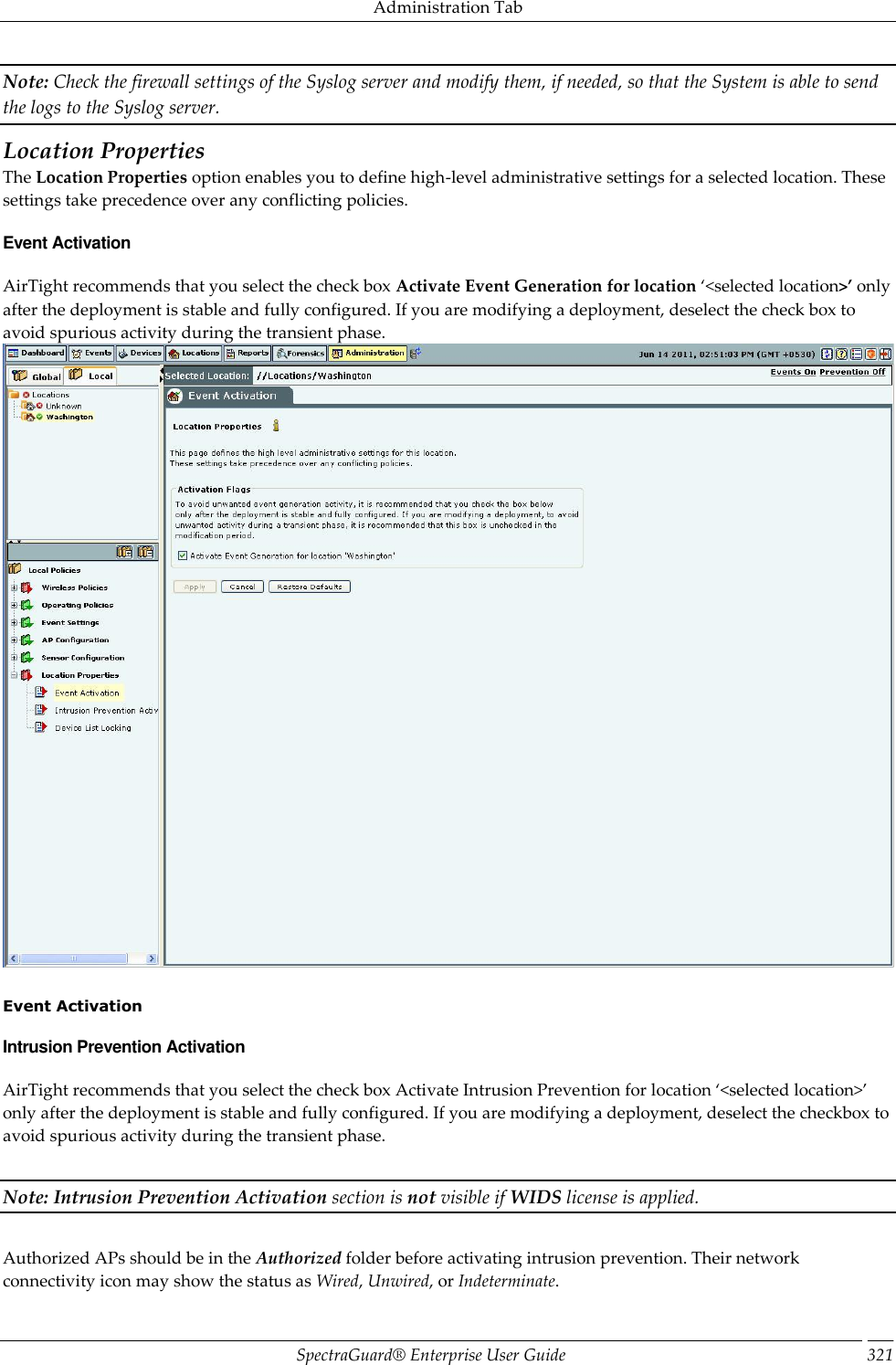
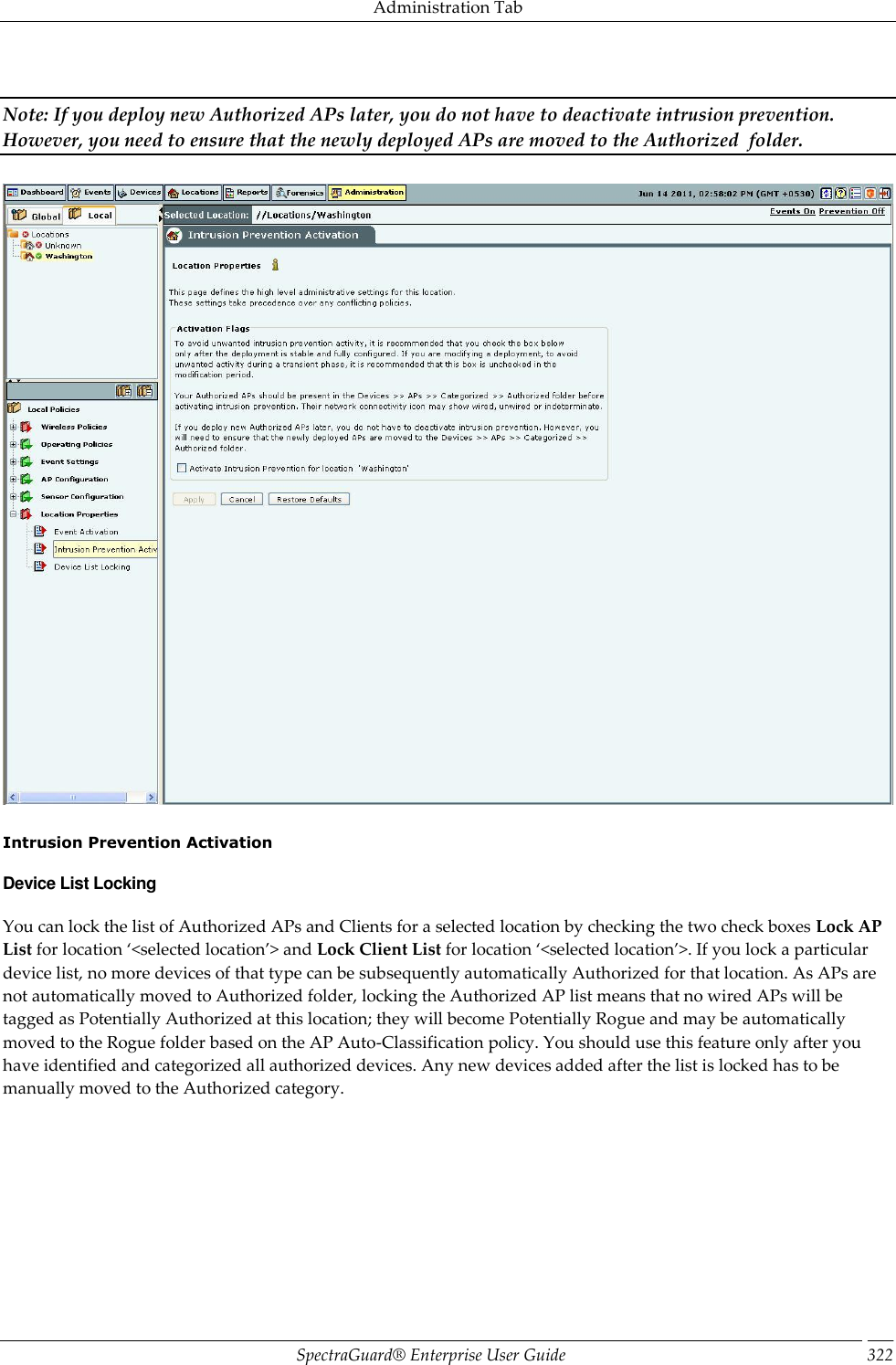
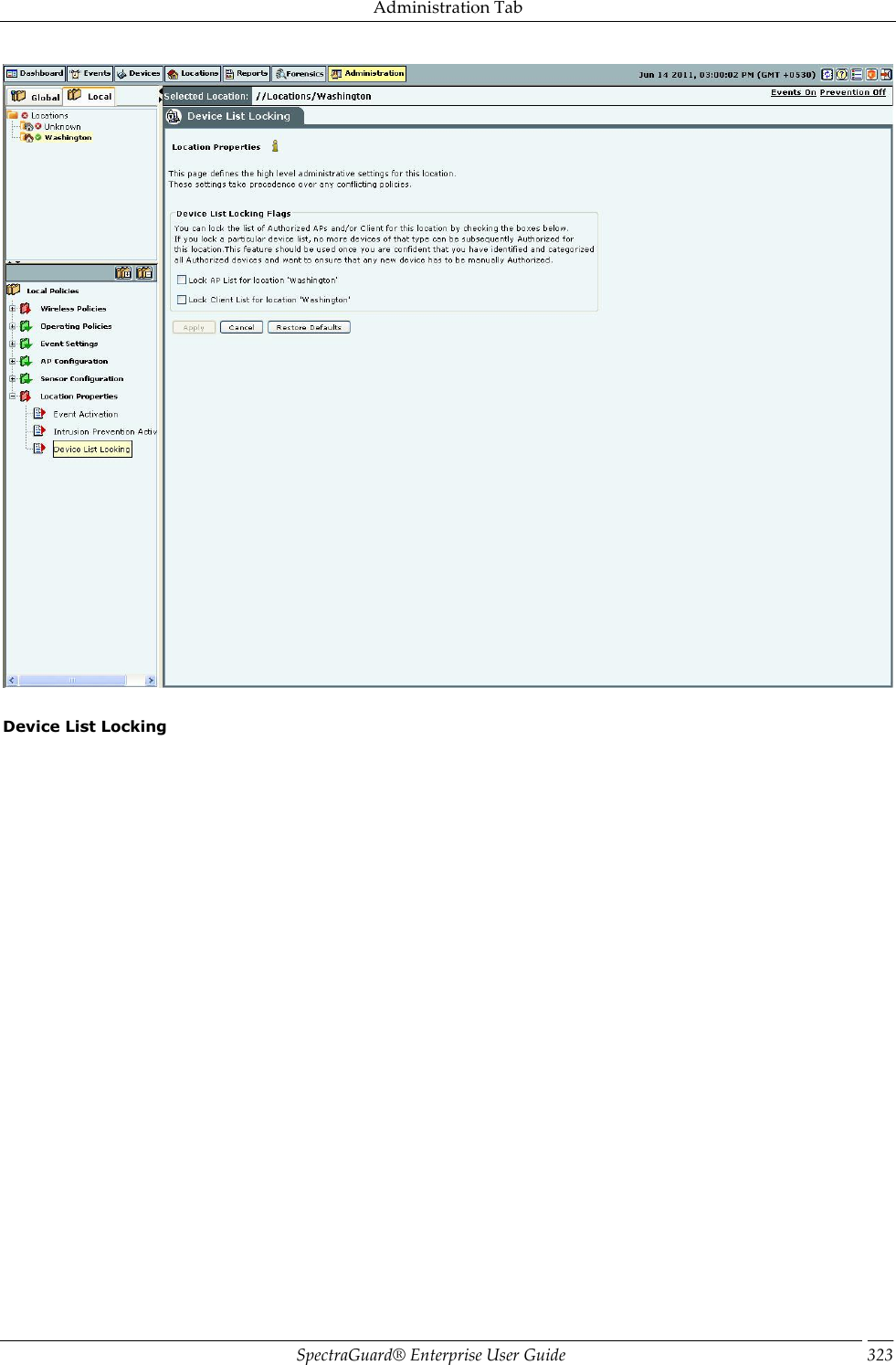
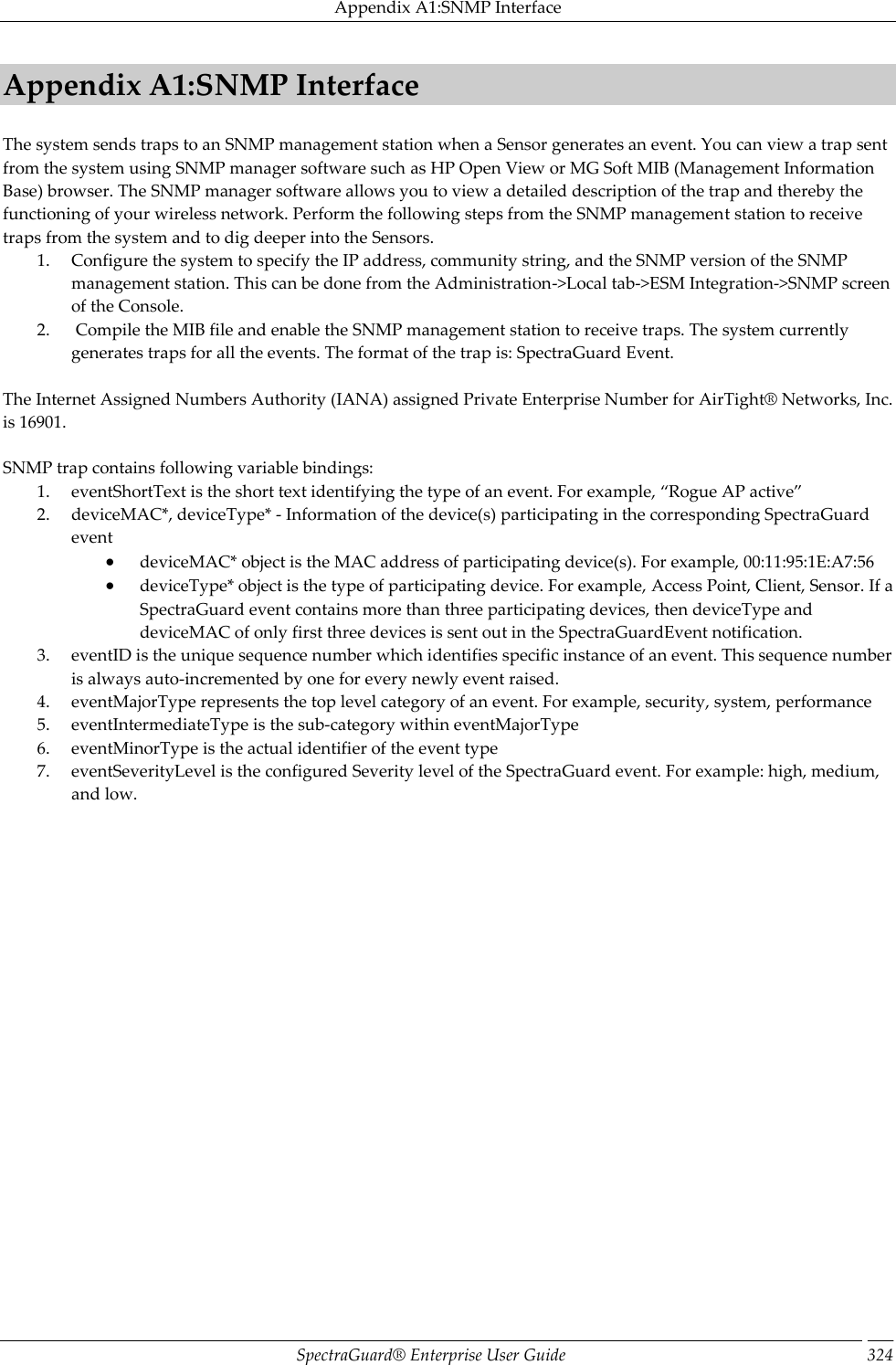
![Appendix A2:Syslog Interface SpectraGuard® Enterprise User Guide 325 Appendix A2:Syslog Interface SGE also sends events as Syslog messages. Any standard Syslog receiver (e.g. Syslog watcher from snmpsoft) can be used to monitor the Syslog messages sent by SGE. SGE can send Syslog messages either 'Plain Text' or 'IDMEF' format based on the 'Message Format' selected while configuring Syslog receivers on Syslog configuration screen. The format of 'Plain Text' Syslog message is shown below. <<HW Address of Primary Interface of SGE>><Product Name> v<SGEVersion>: <Event Summary Description>: <IP Address>//<Location> : <Event Date-Time>: <Event Severity Level>:<Event ID>:<Event Major Type>:<Event Intermediate Type>:<Event Minor Type> Product Name: SpectraGuard Enterprise SGE Version: SpectraGuard Enterprise Release Event Summary Description: Summary description for the event IP Address: IP Address of the SpectraGuard Enterprise Server Location: Location in SGE console at which this event is generated. Event Date-Time: Date-Time at which event was generated in SGE Event Severity Level: Configured severity level of the SpectraGuard Enterprise Event e.g High, Medium or Low Event ID: Unique sequence number which identifies specific instance of an event. This sequence number is always auto-incremented by 1 for every new event raised. Event Major Type: It represents the top level category of an event. Event Intermediate Type: It represents the sub-category within Event Major Type Event Minor Type: It is the actual identifier of the event type Example: "<xx:yy:zz:aa:bb:cc>SpectraGuard Enterprise v6.5 : Start: Rogue AP [Symbol_CC:31:B0] is active. : 192.168.8.134://Locations/Unknown : 2010-06-10T05:16:28+00:00 : High : 21218 : 5 : 59 : 779" The IDMEF message contains some additional information which is not available with 'Plain Text' format Product Vendor: AirTight SGE Operating System: Linux SGE Operating System Version: Operating system version of SGE appliance Event Short Name: Short text identifying the type of an event The format of 'IDMEF' Syslog message is shown below. "<HW Address of Primary Interface of SGE><?xml version=""1.0""?> <!DOCTYPE IDMEF-Message PUBLIC ""-//IETF//DTD RFC XXXX IDMEF v1.0//EN"" ""/var/tmp/libidmef-1.0.2-beta1-buildroot/usr/share/idmef-message.dtd""> <IDMEF-Message version=""1.0""> <Alert messageid="<EventID>"> <Analyzer analyzerid="<IP Address>" name="<Product Name>" manufacturer="<Product Vendor>" model="""" version="<SGE Version>" class="""" ostype="<SGE Operating System>" osversion="<SGE Operating System Version>"> <Node> <location><IP Address>//<Location></location> </Node> </Analyzer> <CreateTime ntpstamp="<Event Date-Time in NTP format>">Event Date Time</CreateTime> <Classification ident="<Event Major Type><.Event Intermediate Type>.<Event Minor Type>" text="<Event Short Description>"/> <Assessment> <Impact severity="<Event Severity>"></Impact> </Assessment>](https://usermanual.wiki/Mojo-Networks/SS300ATC60.Users-Manual-6/User-Guide-2074666-Page-55.png)
